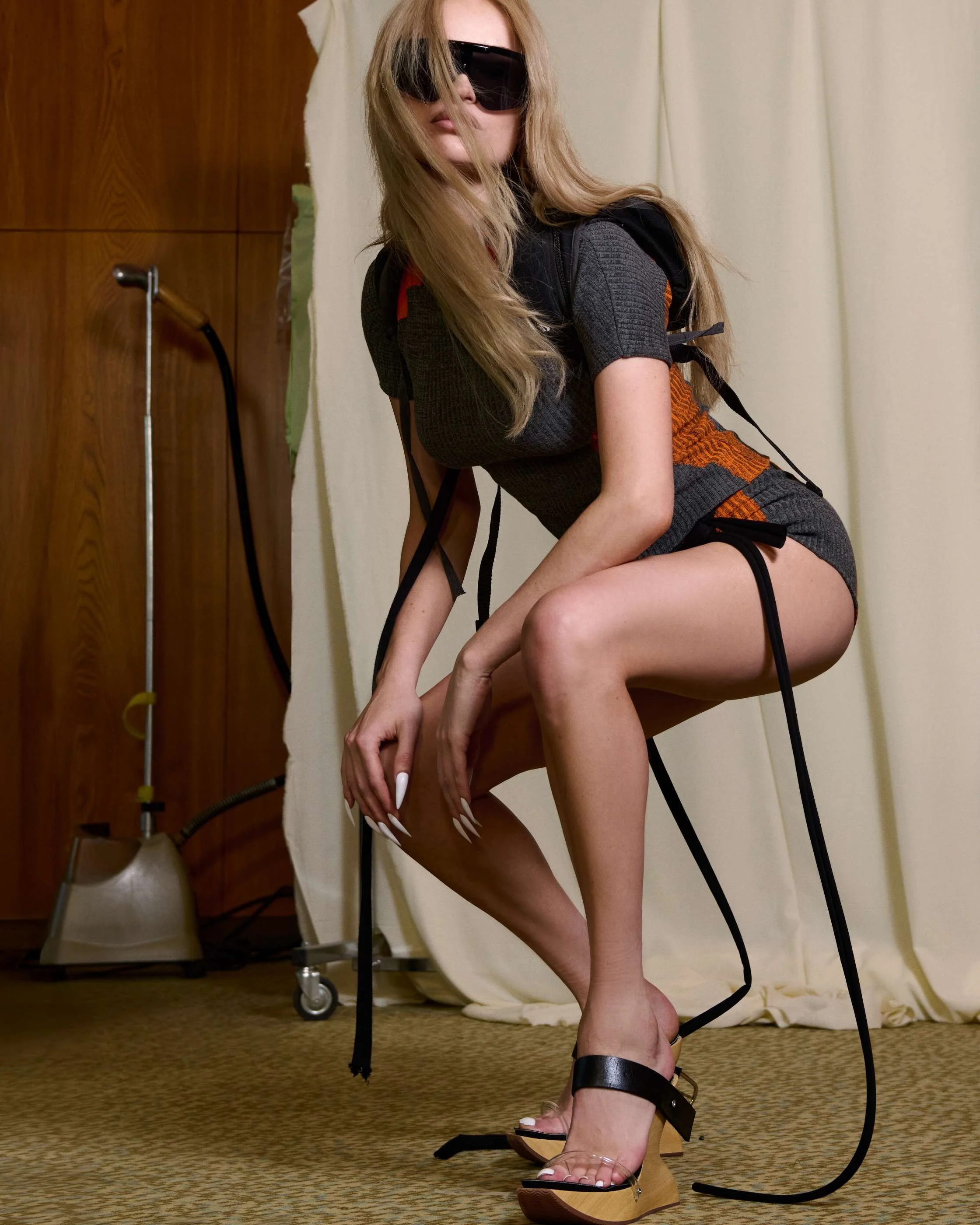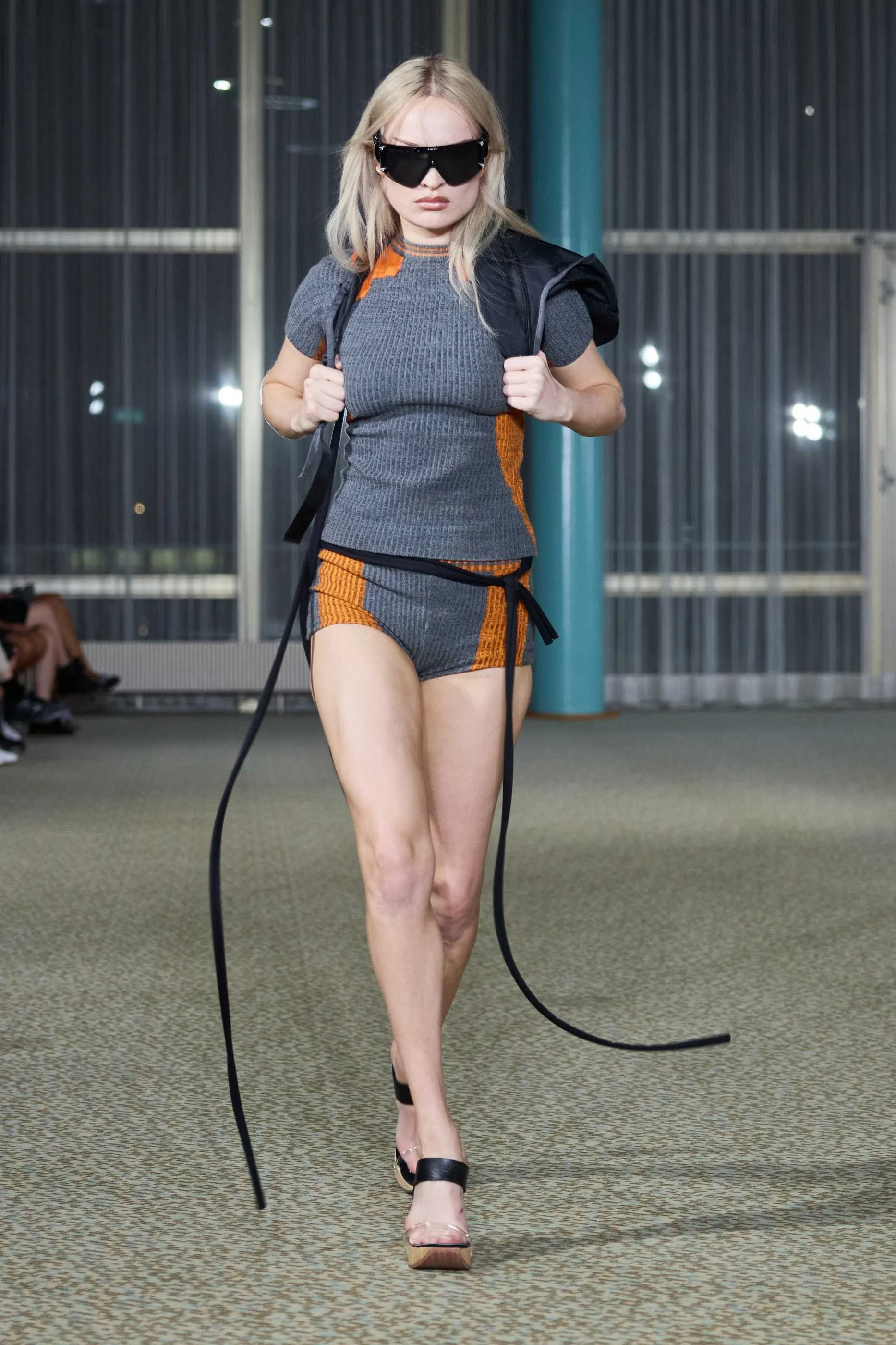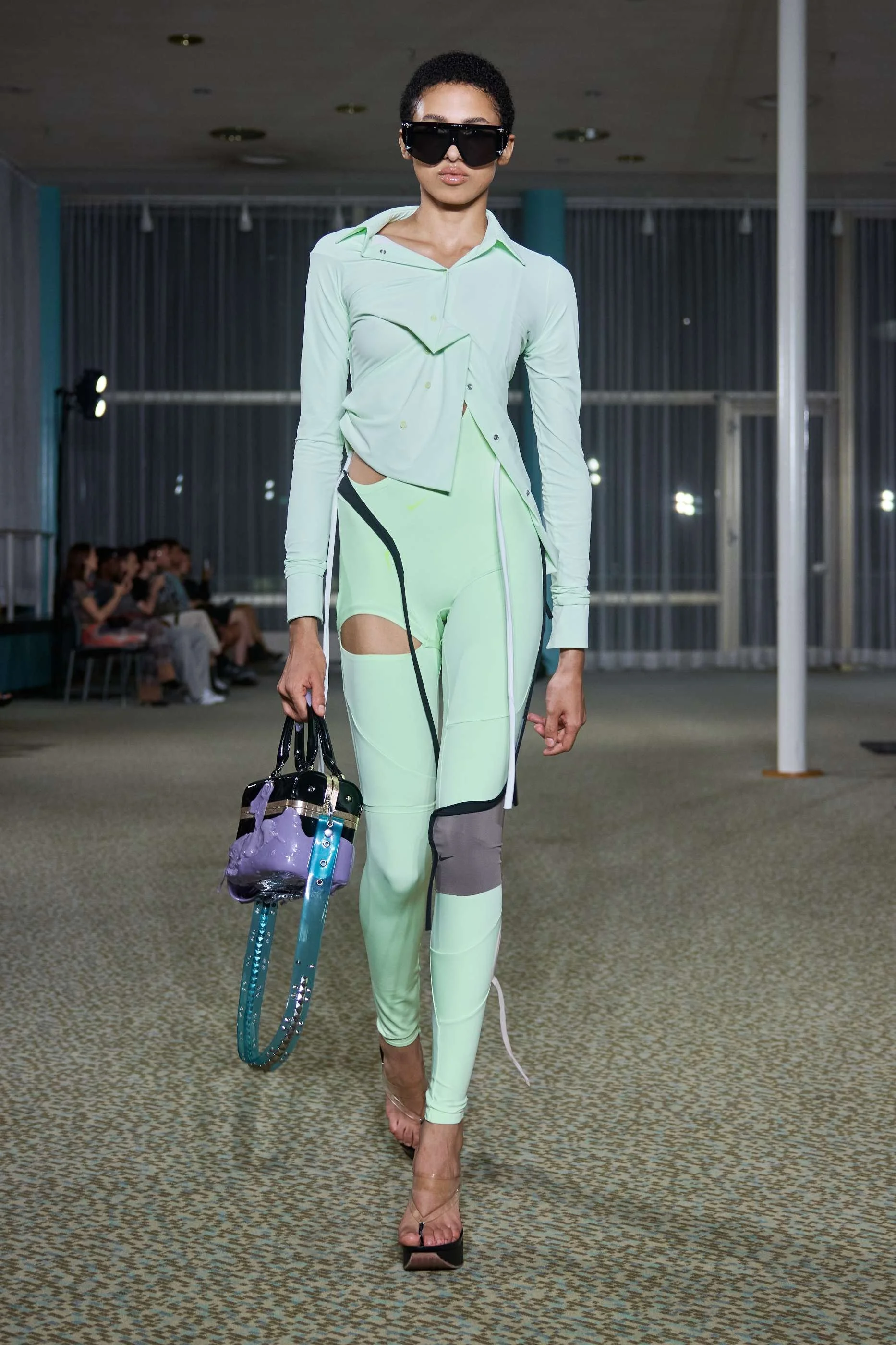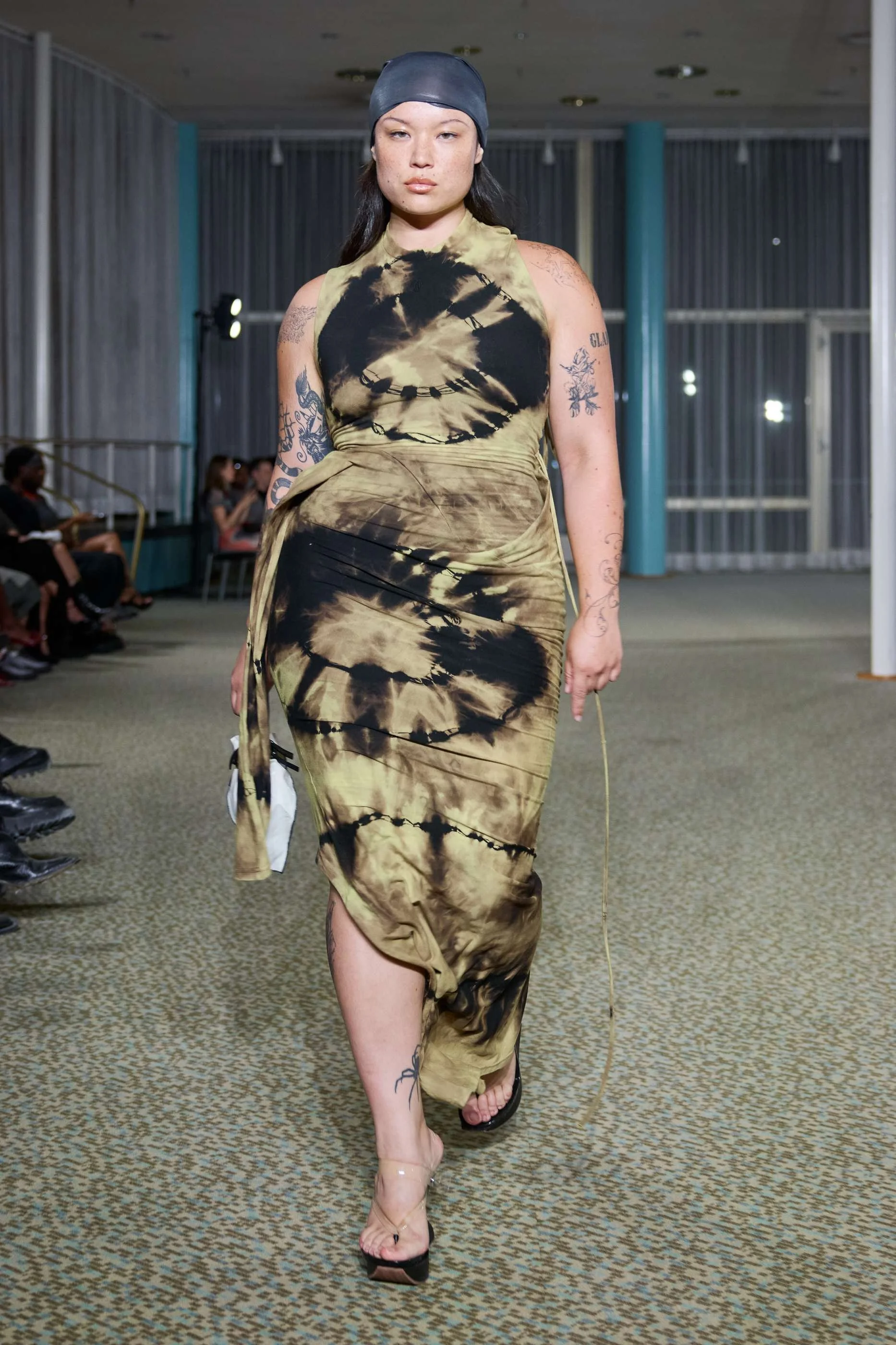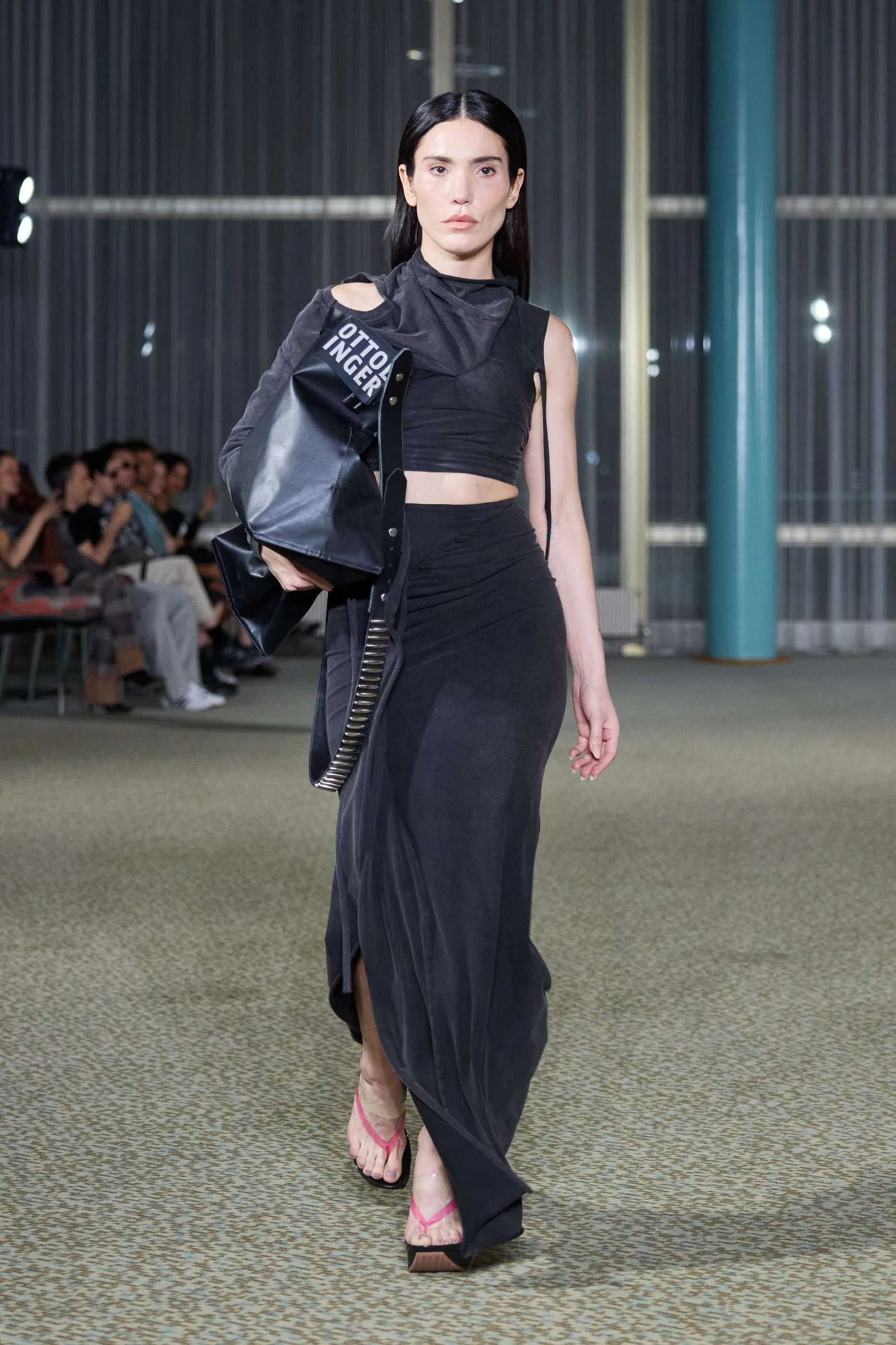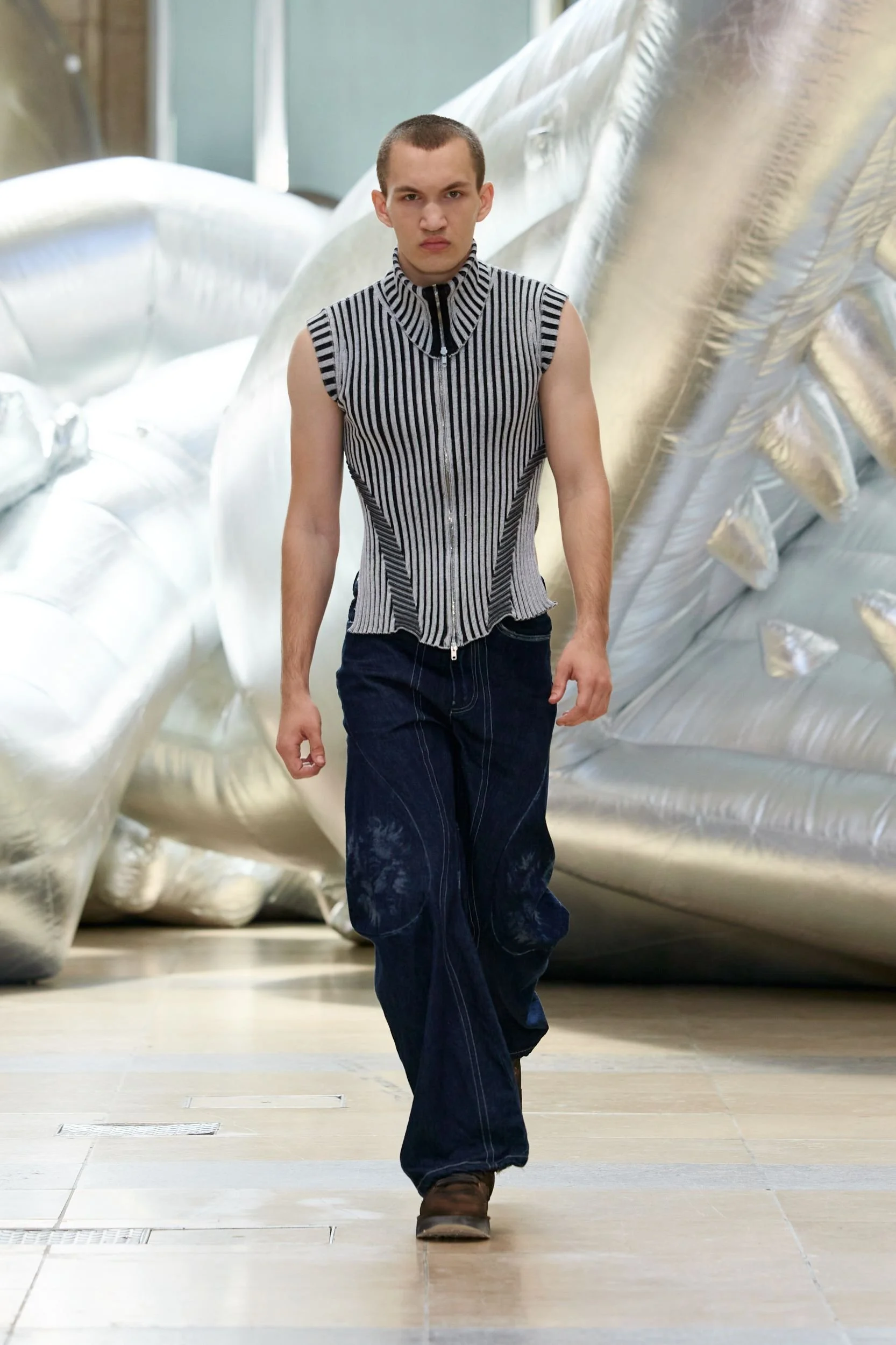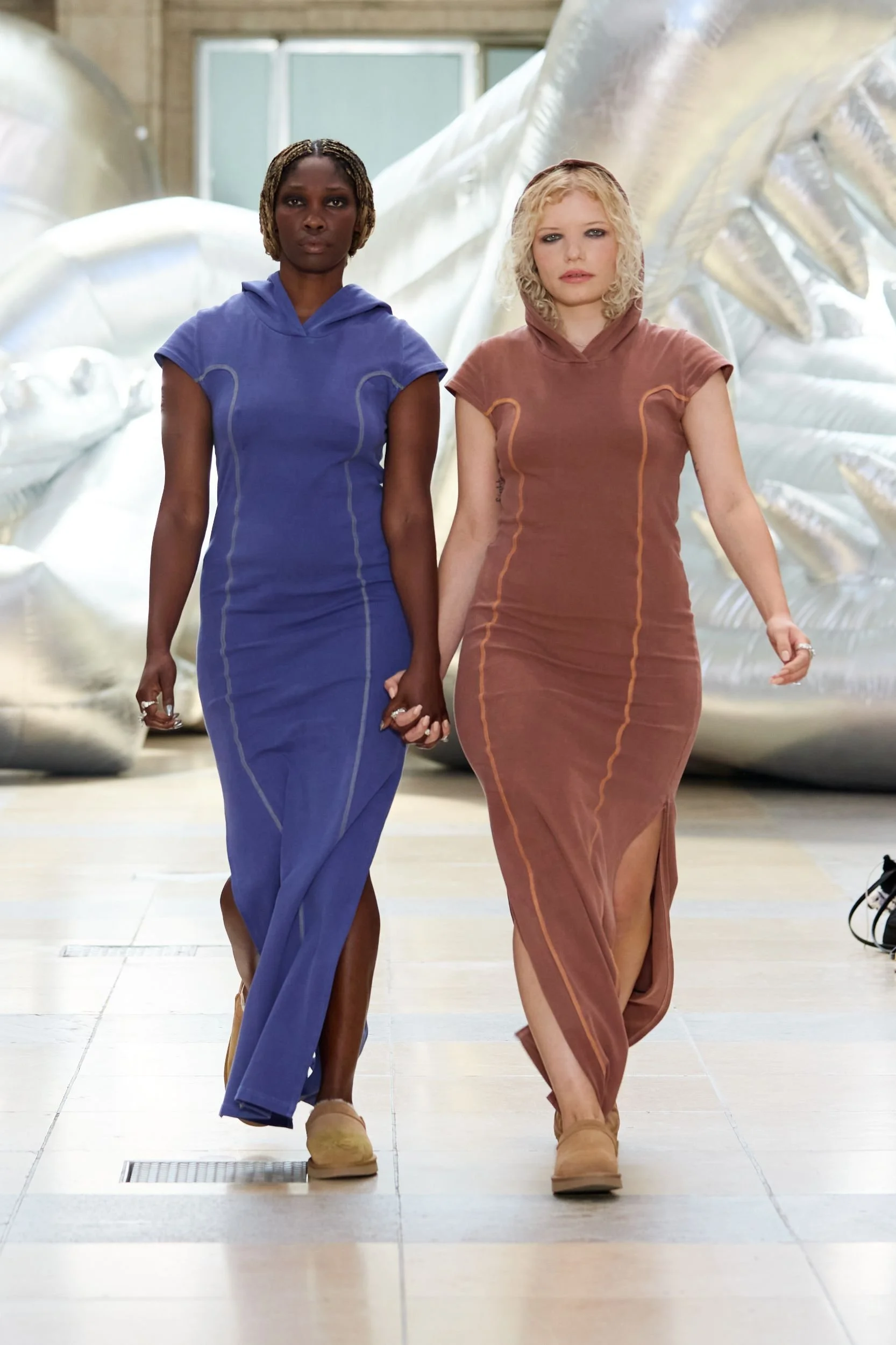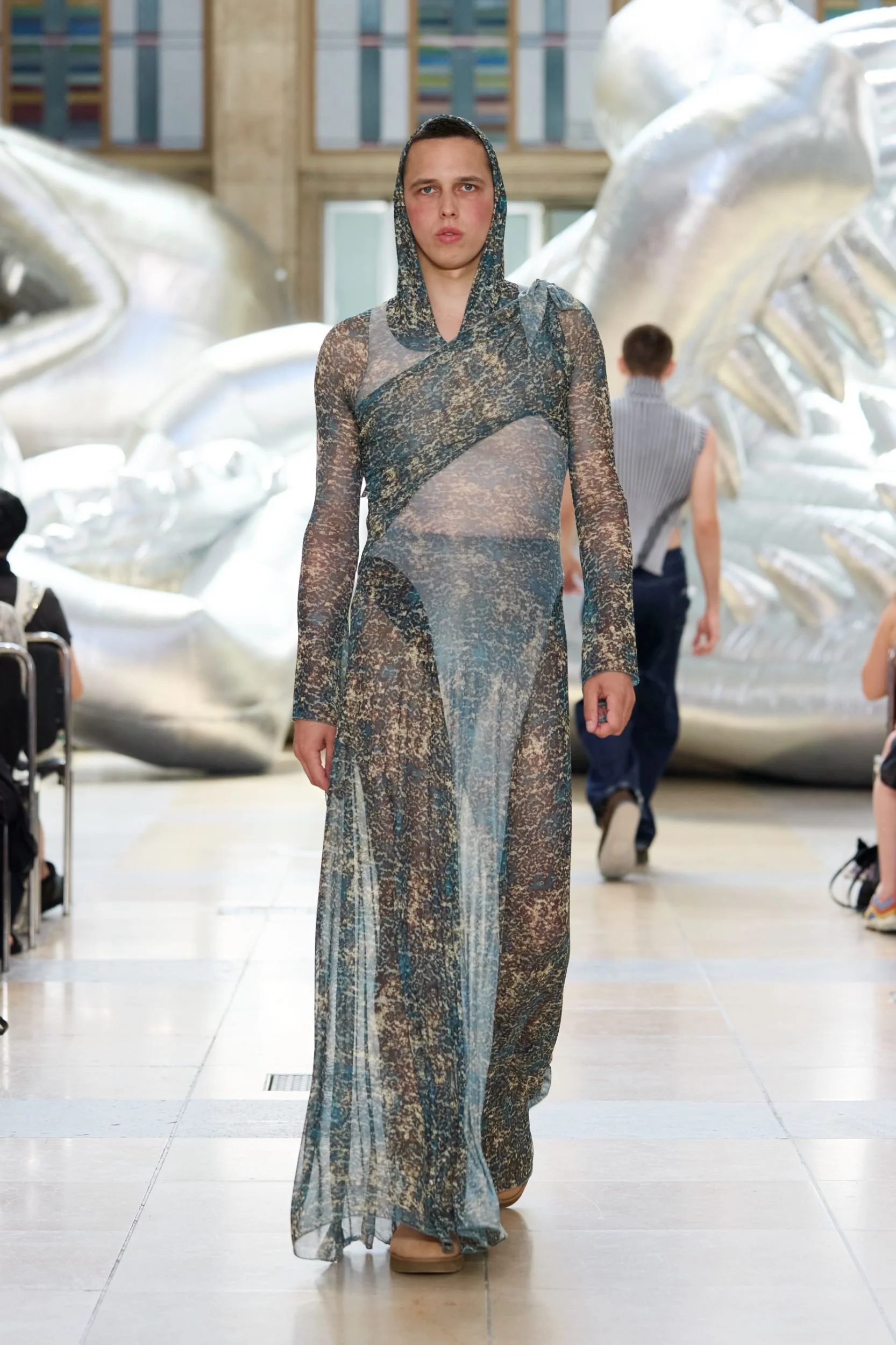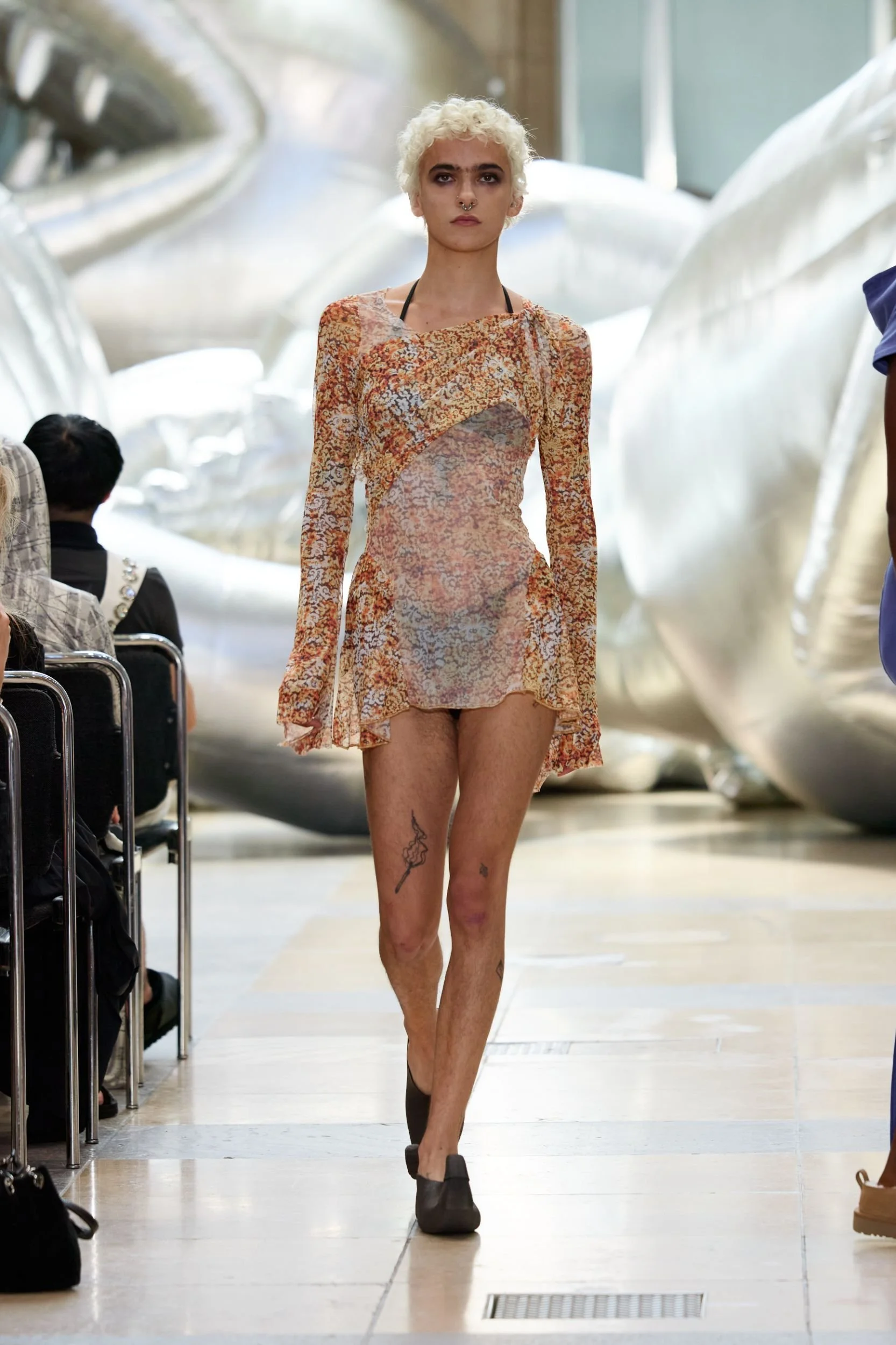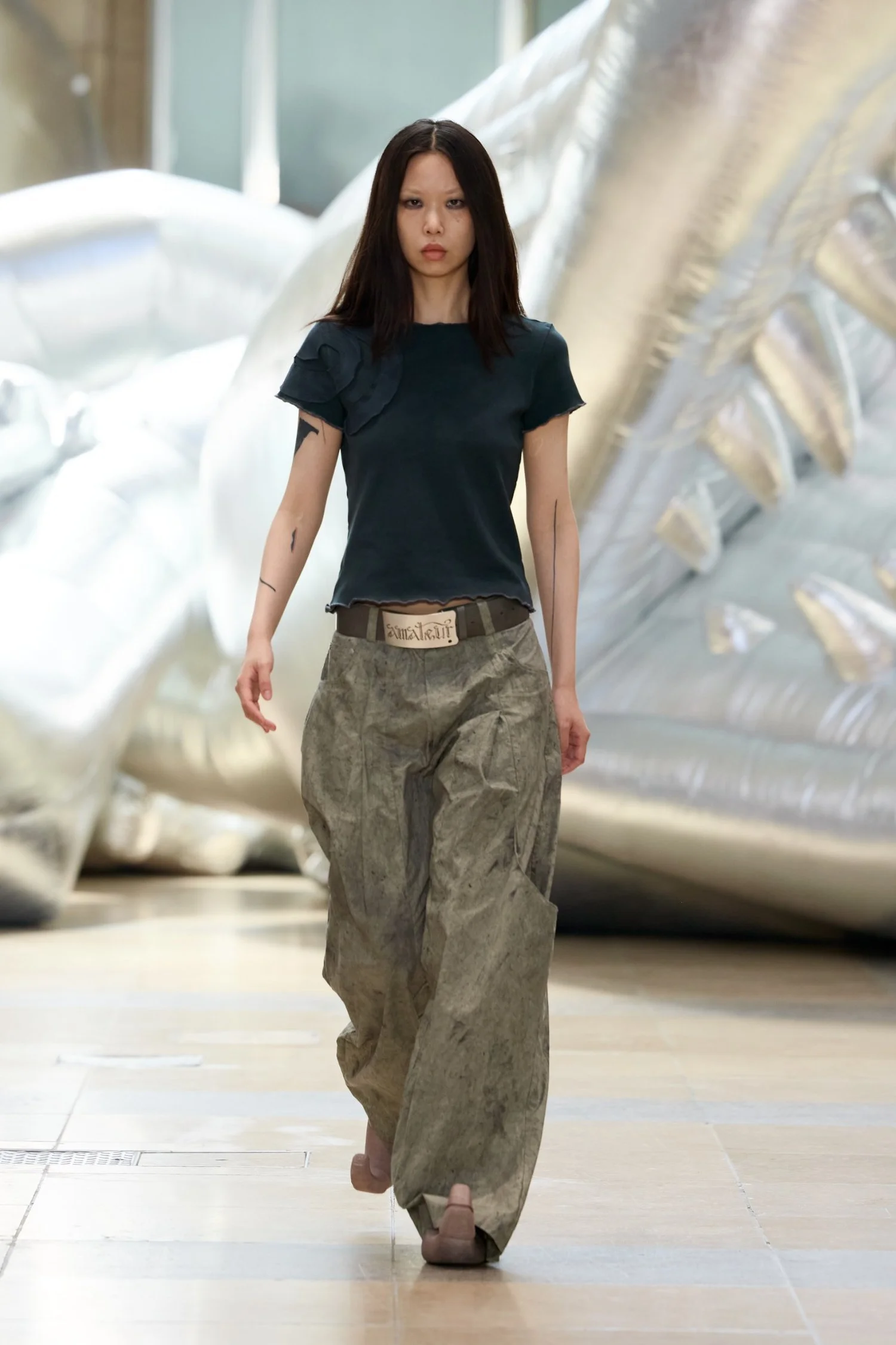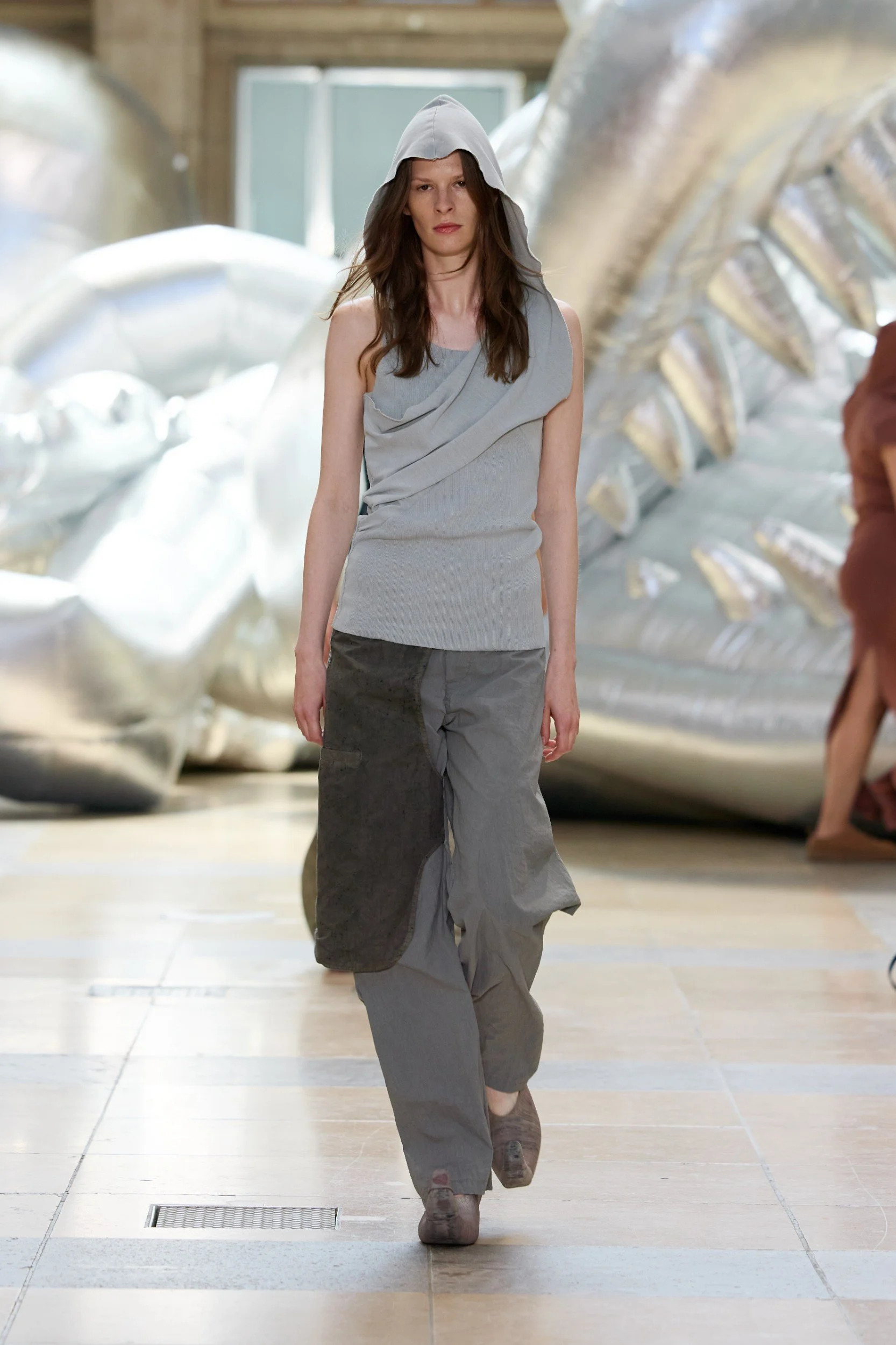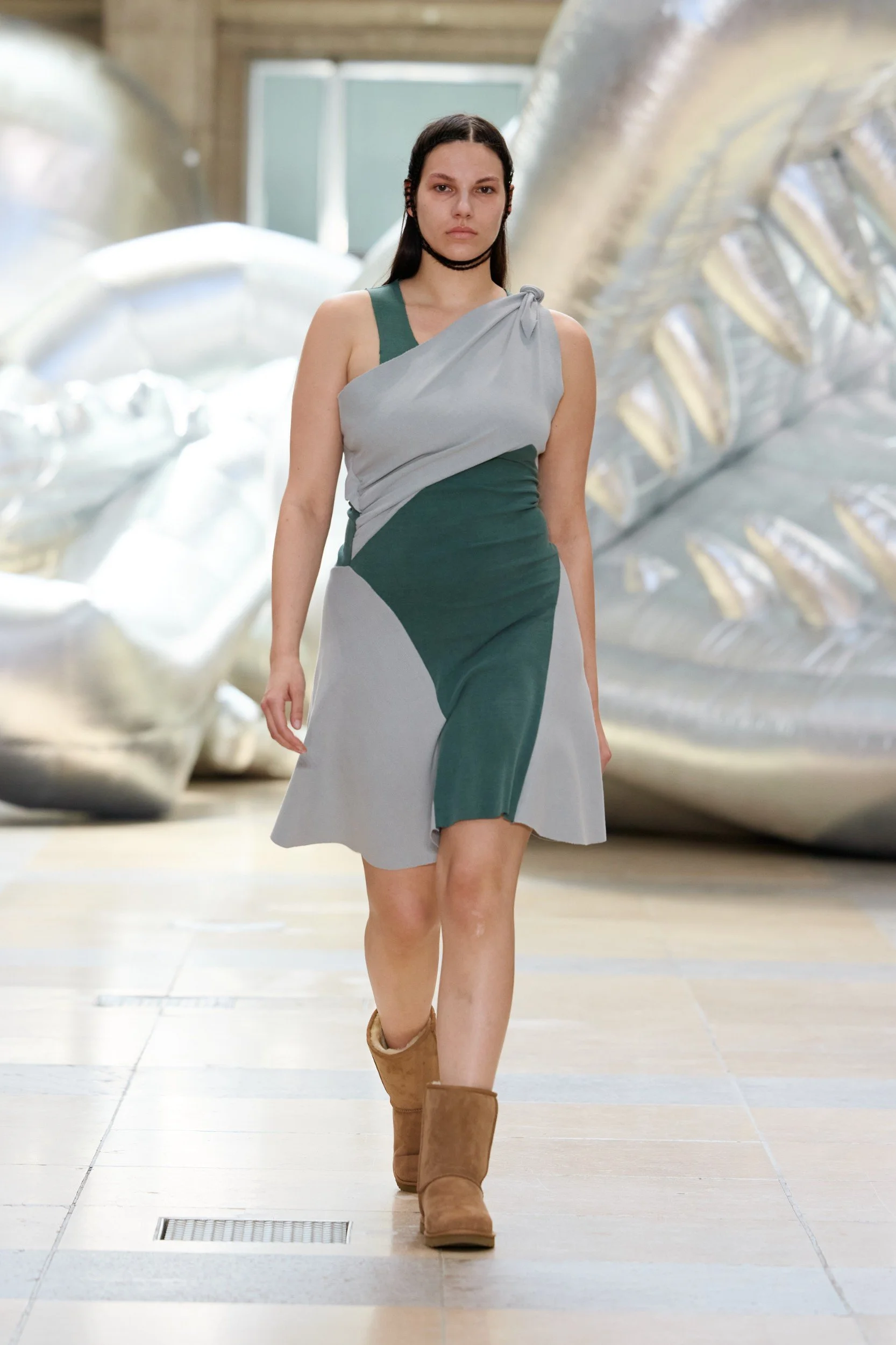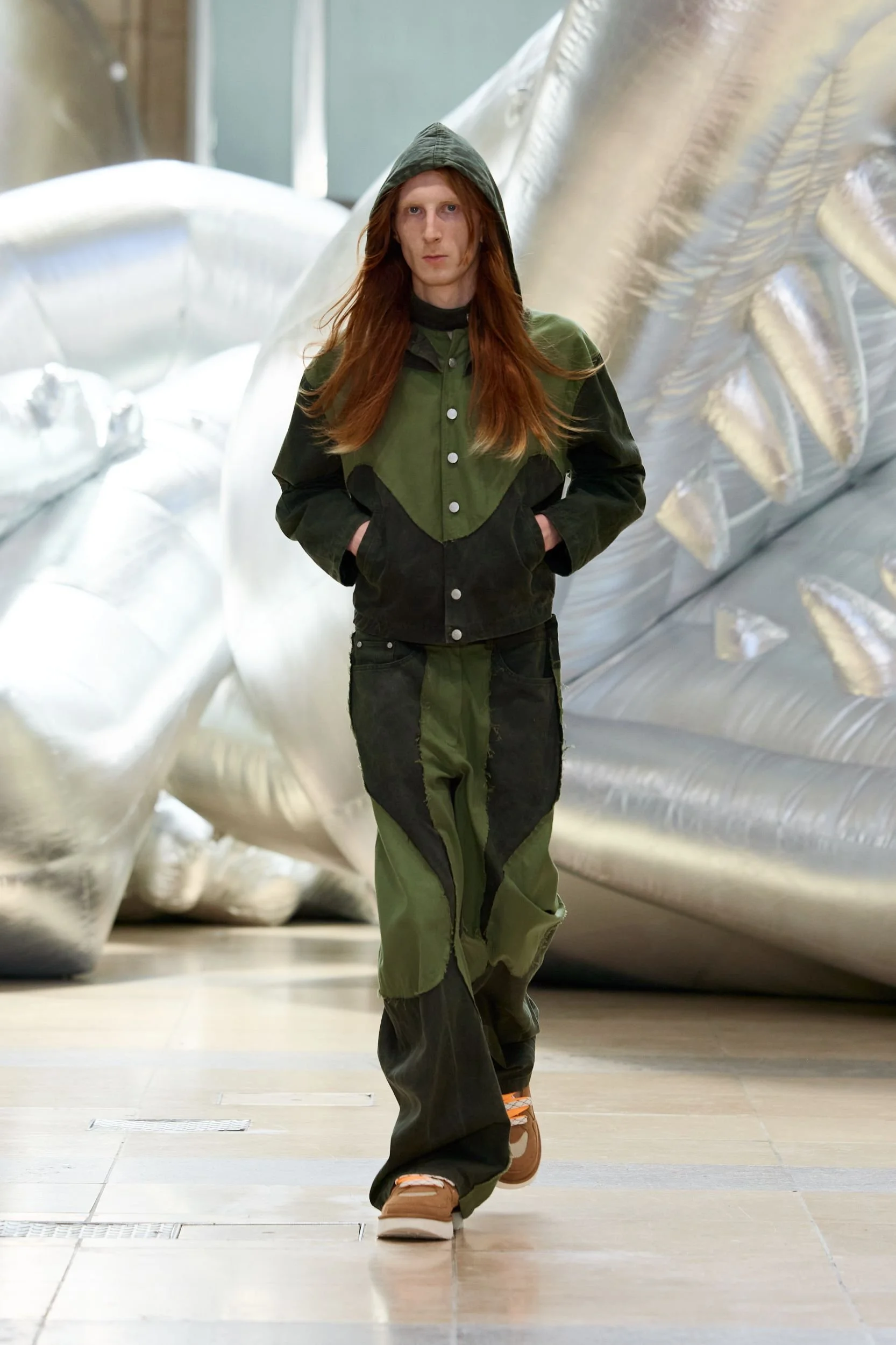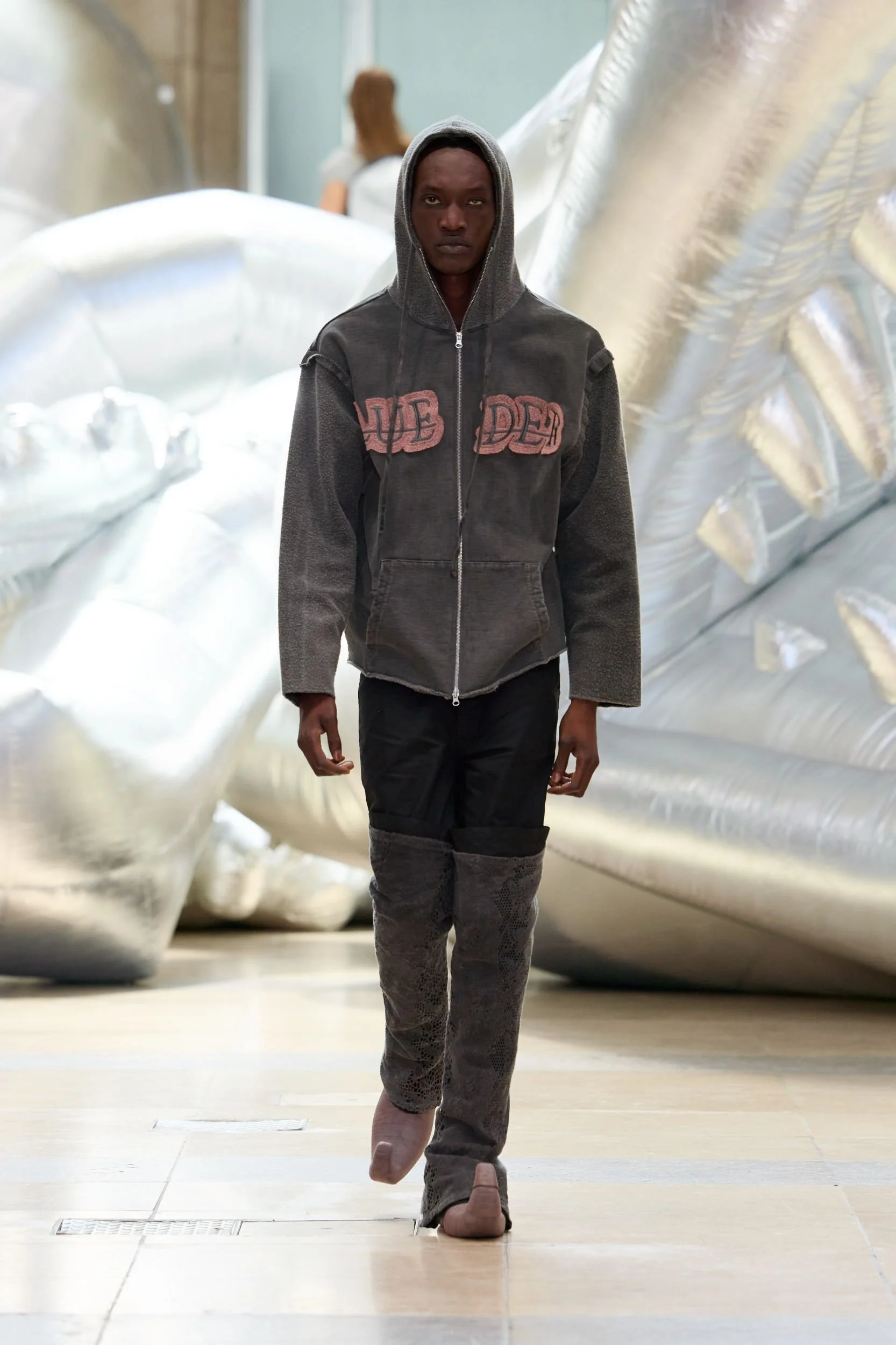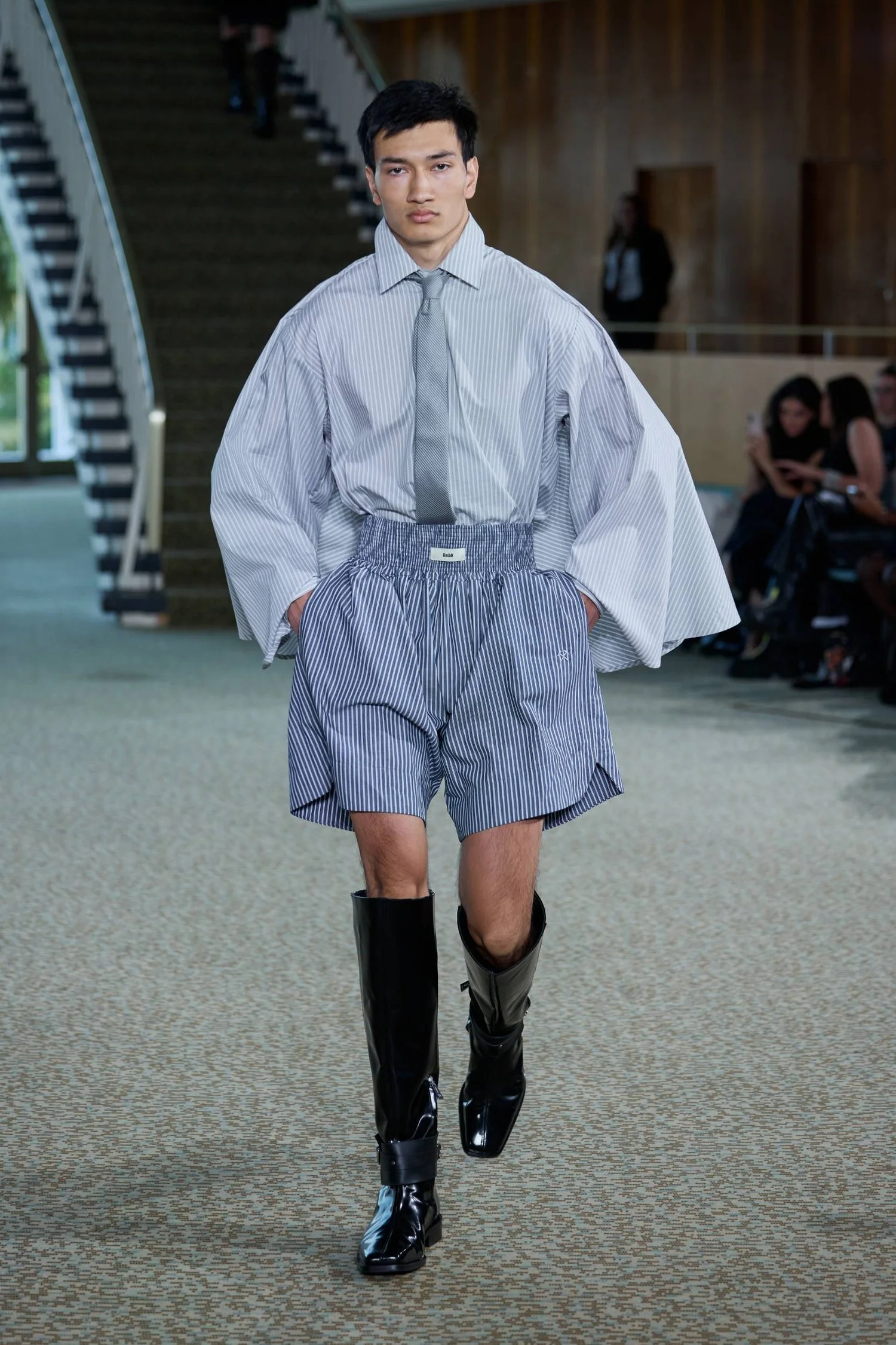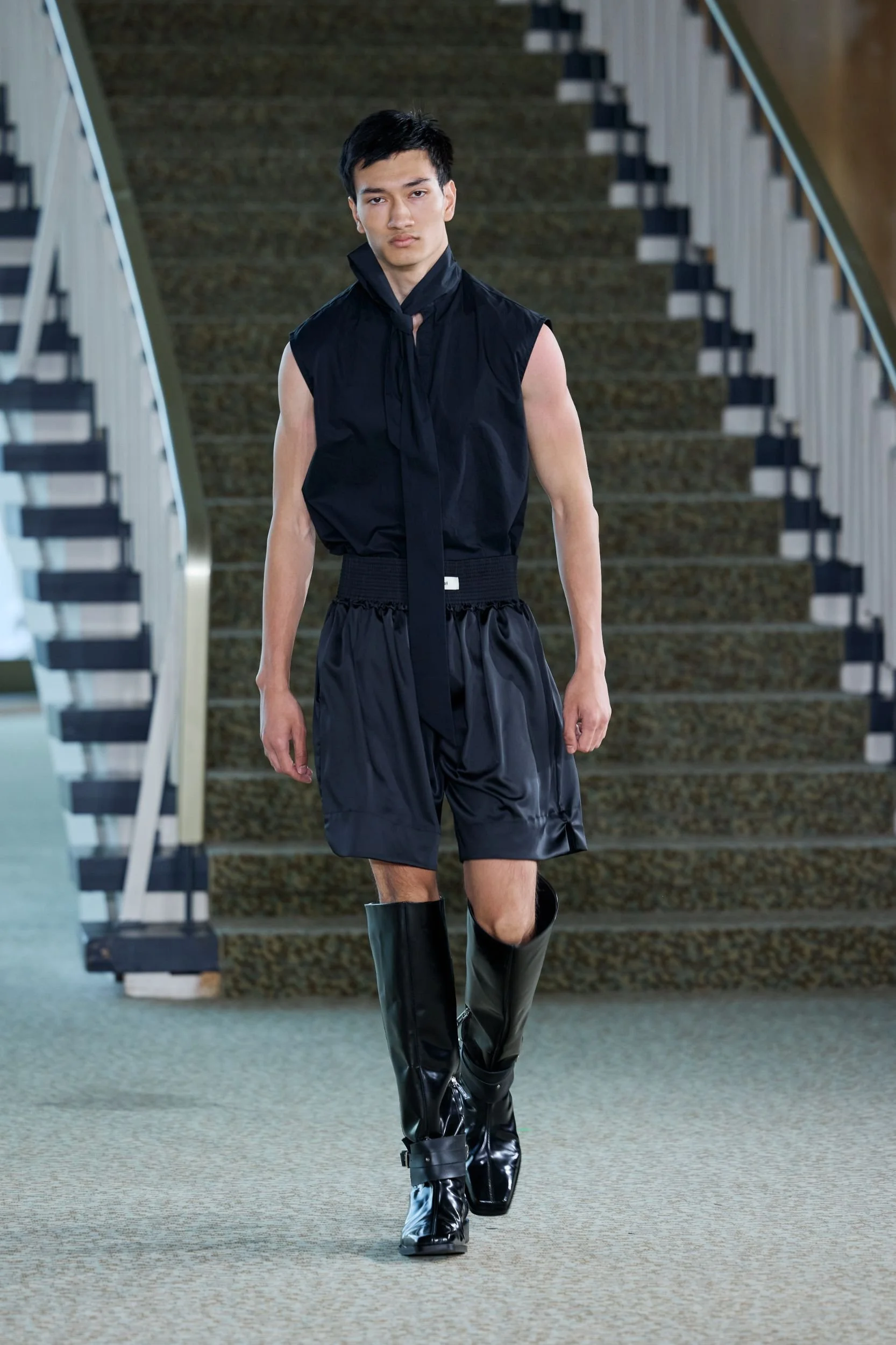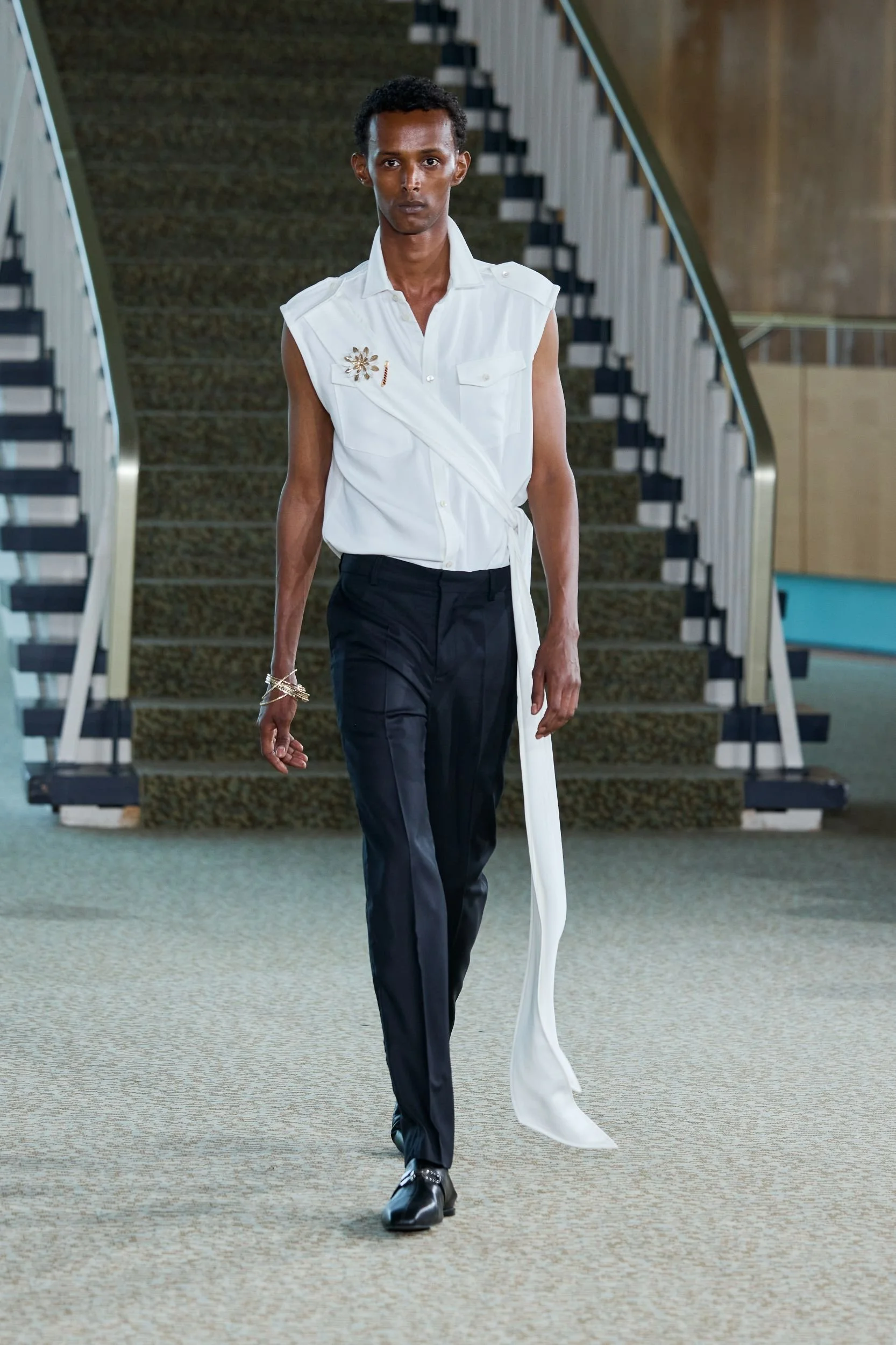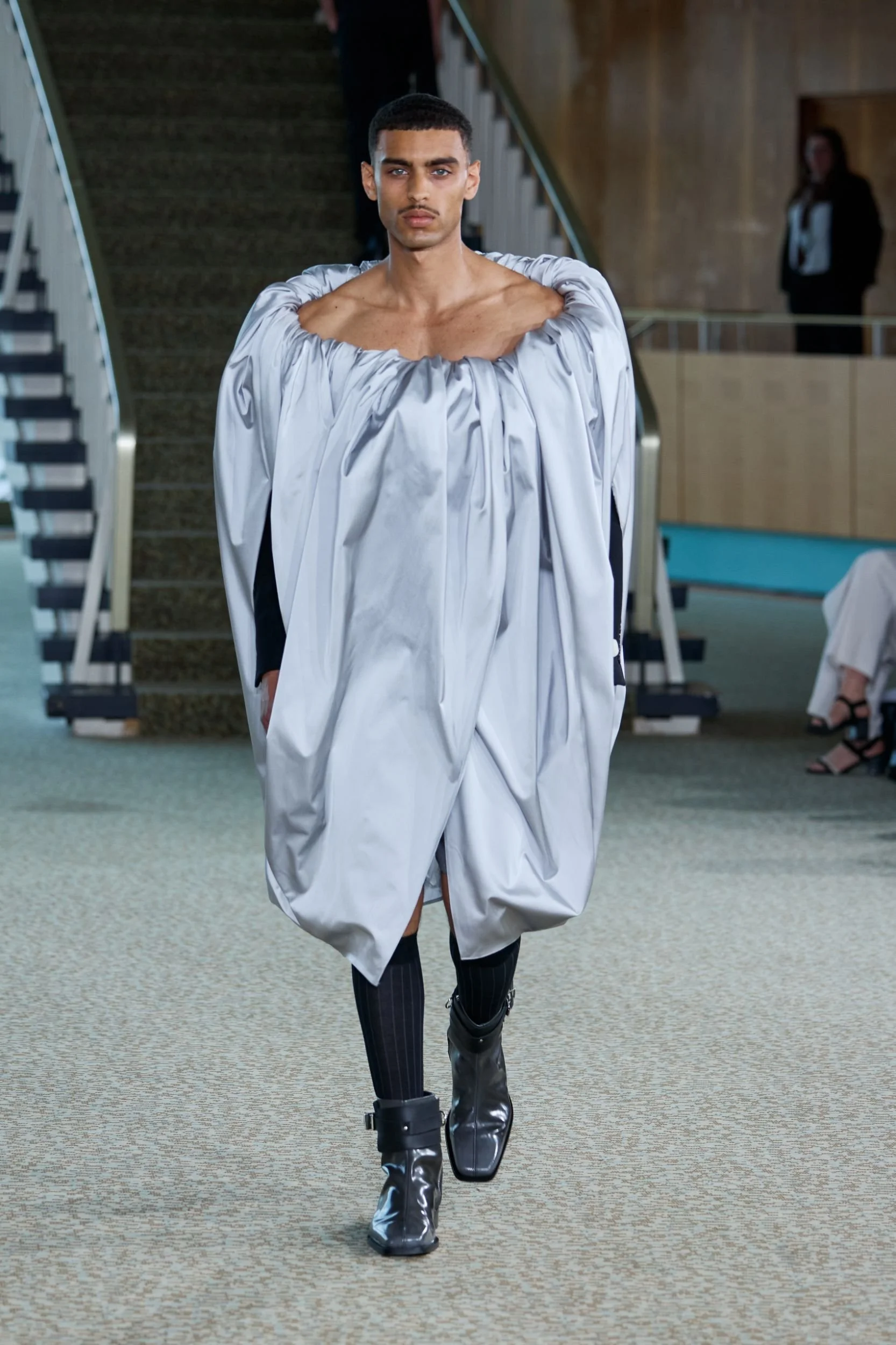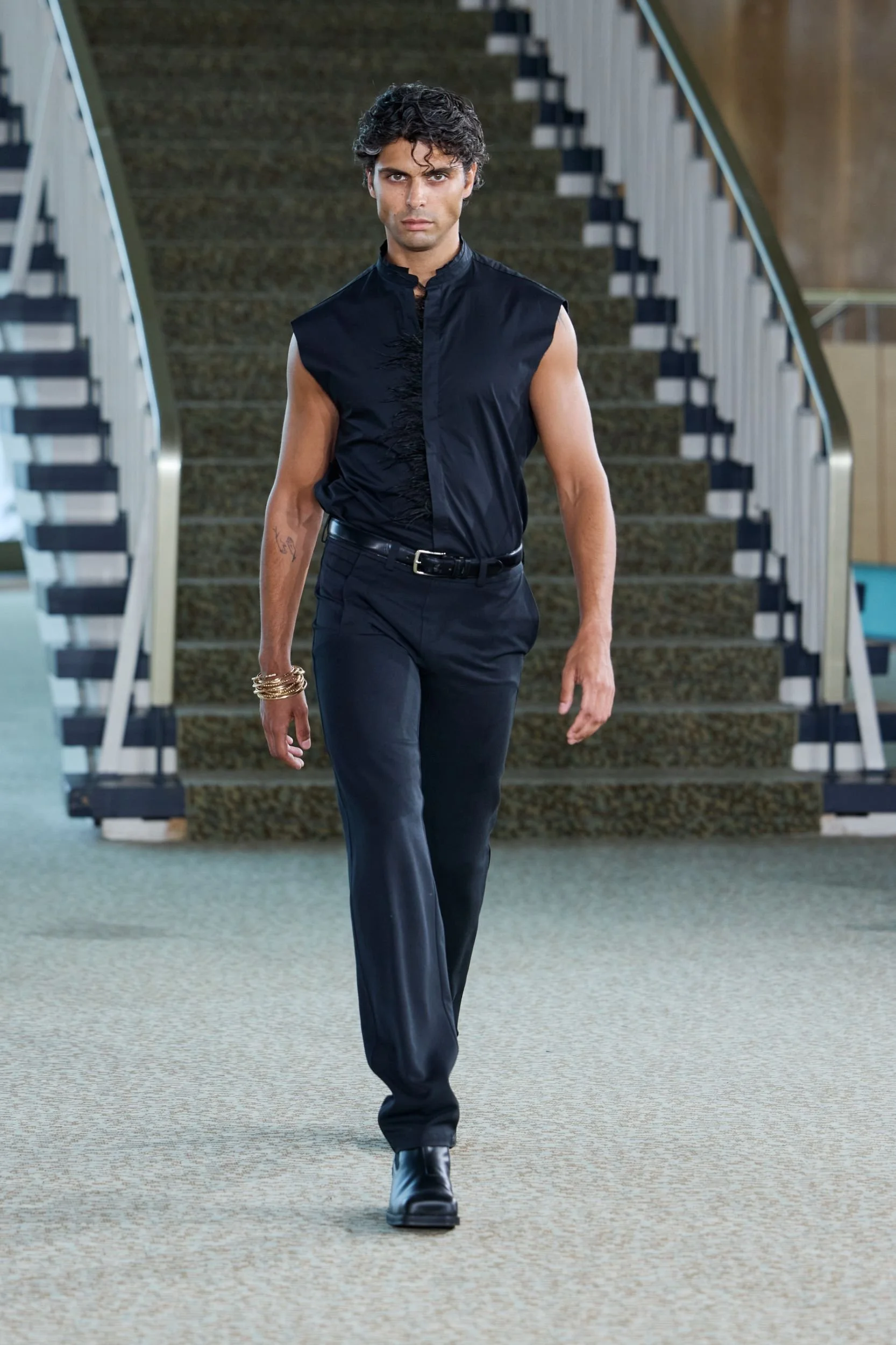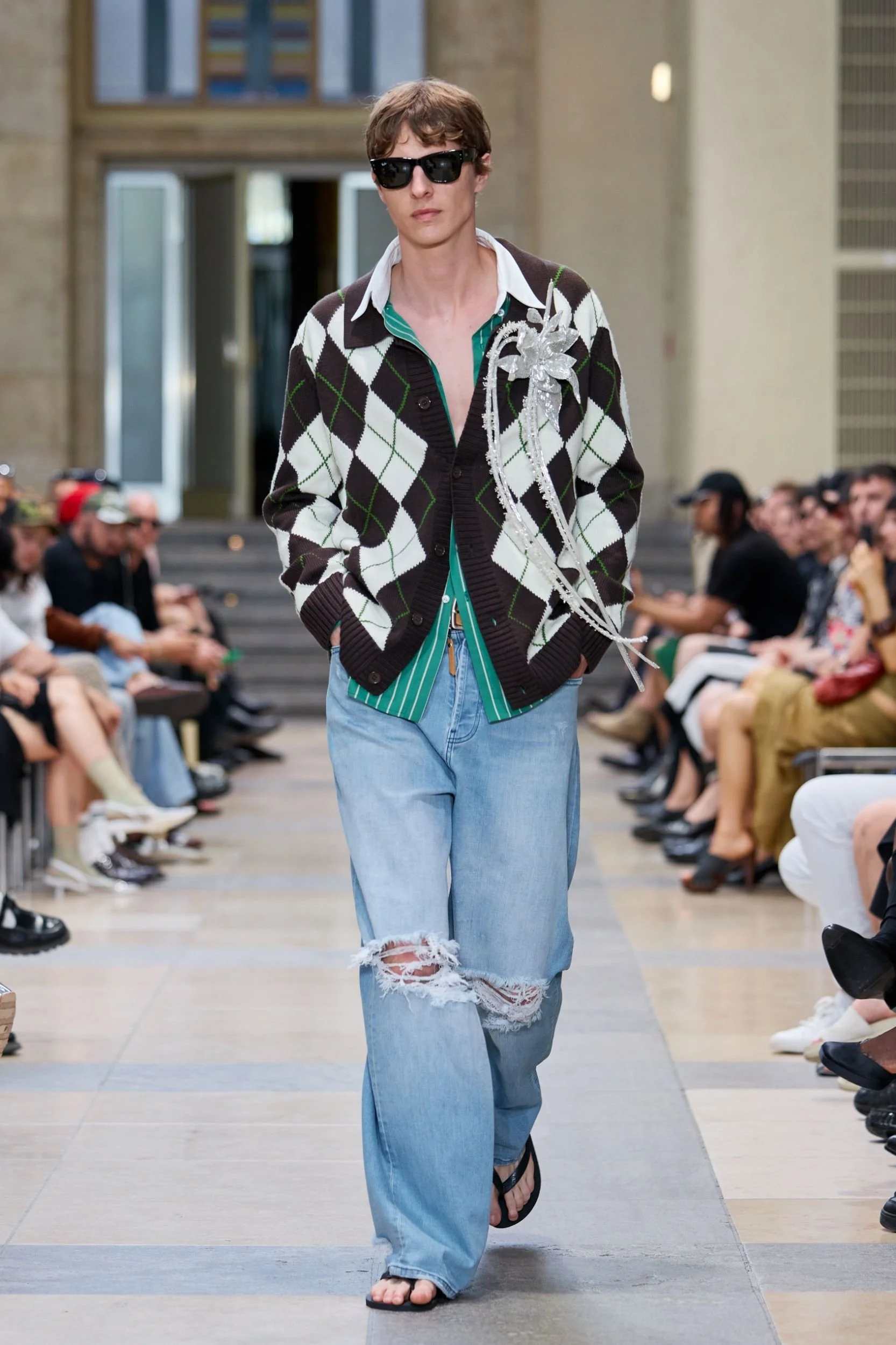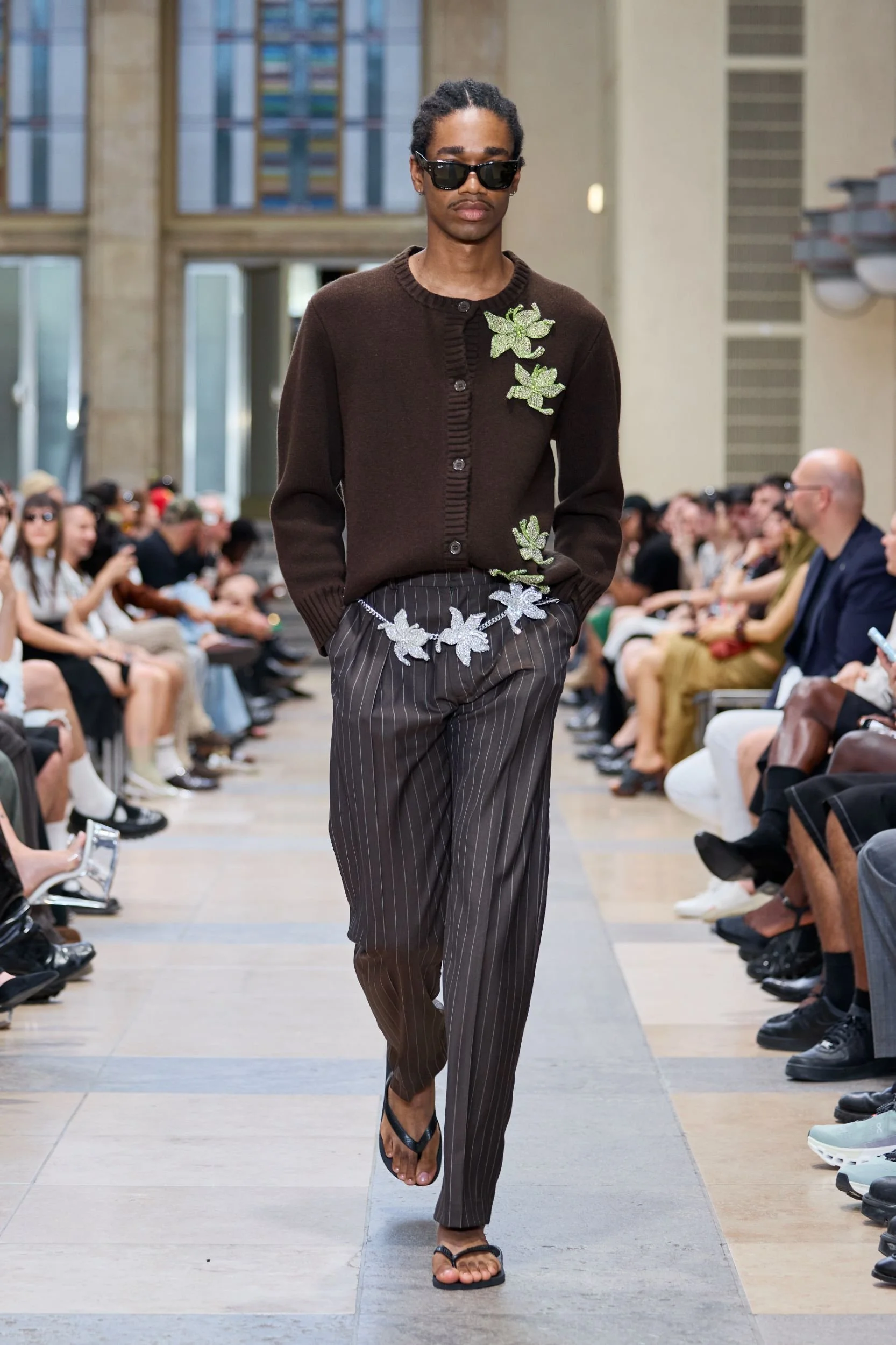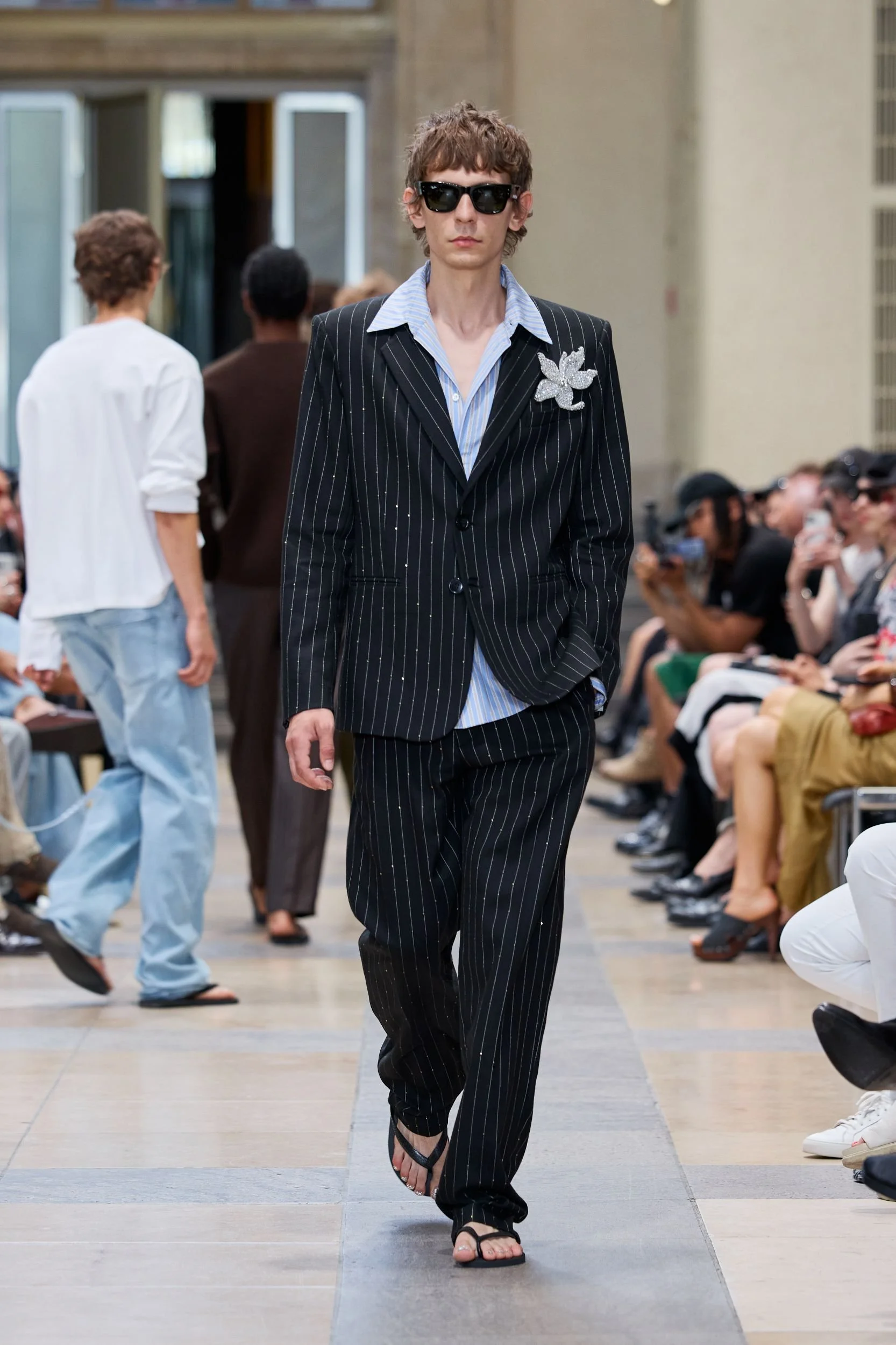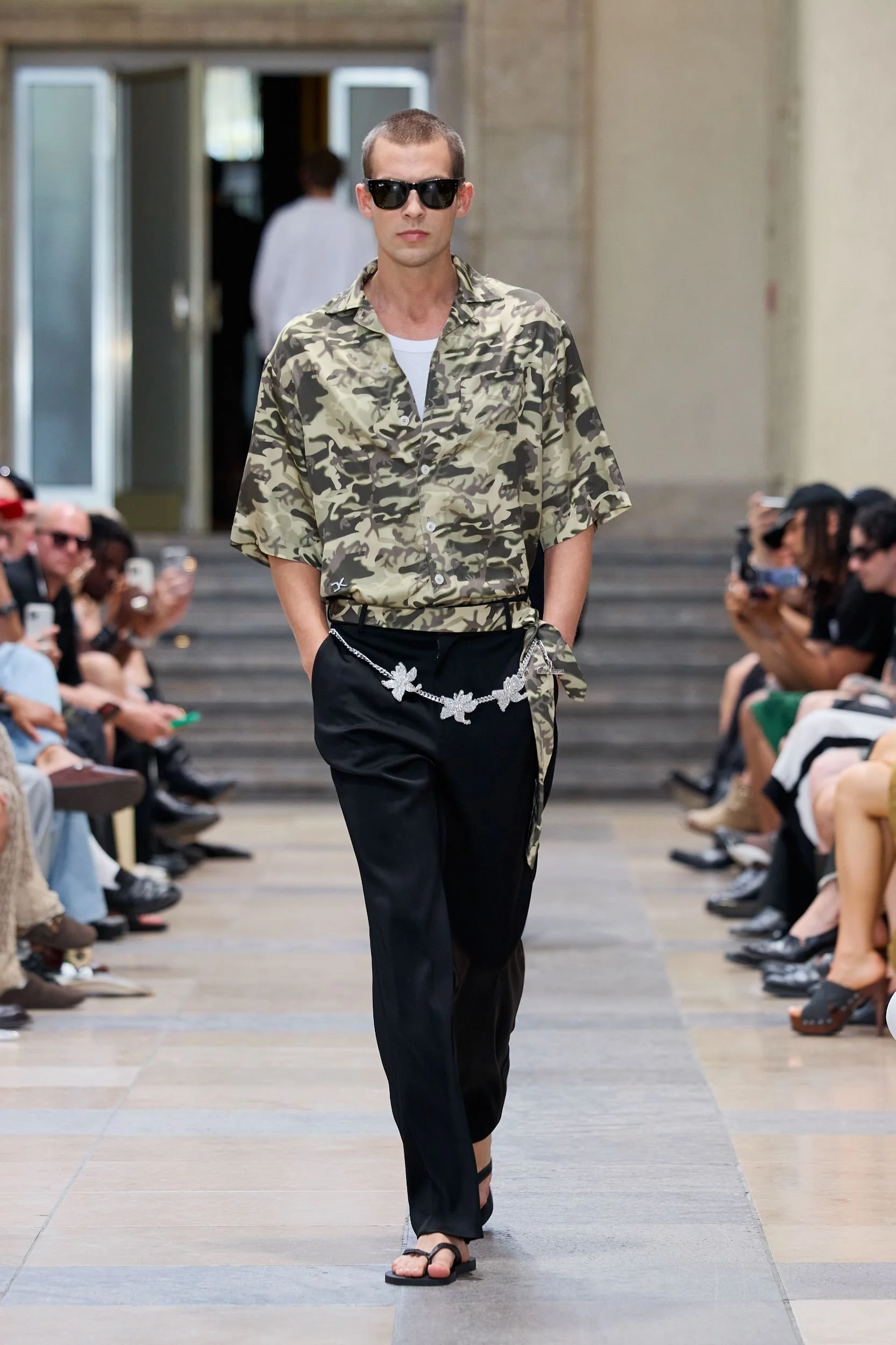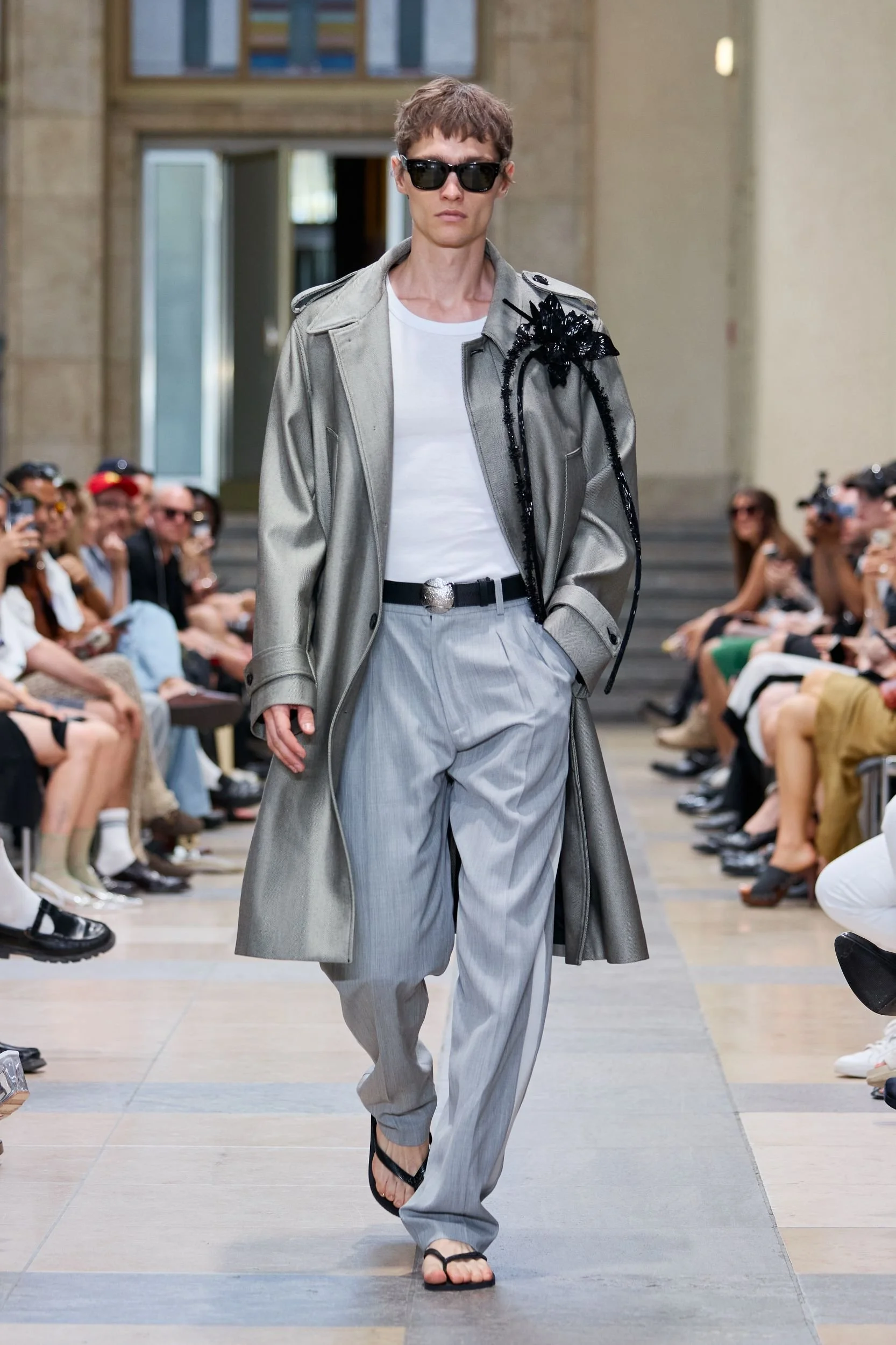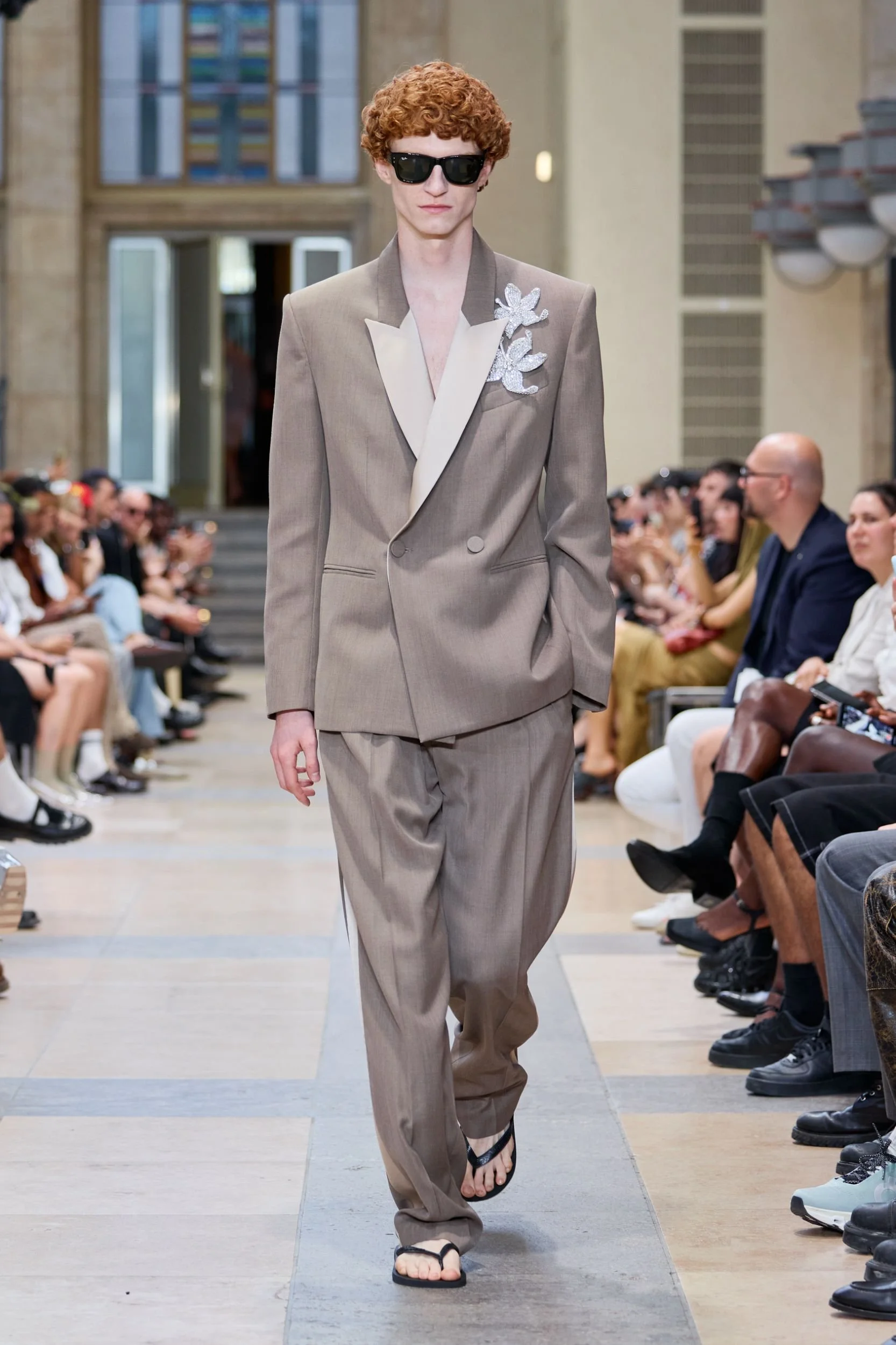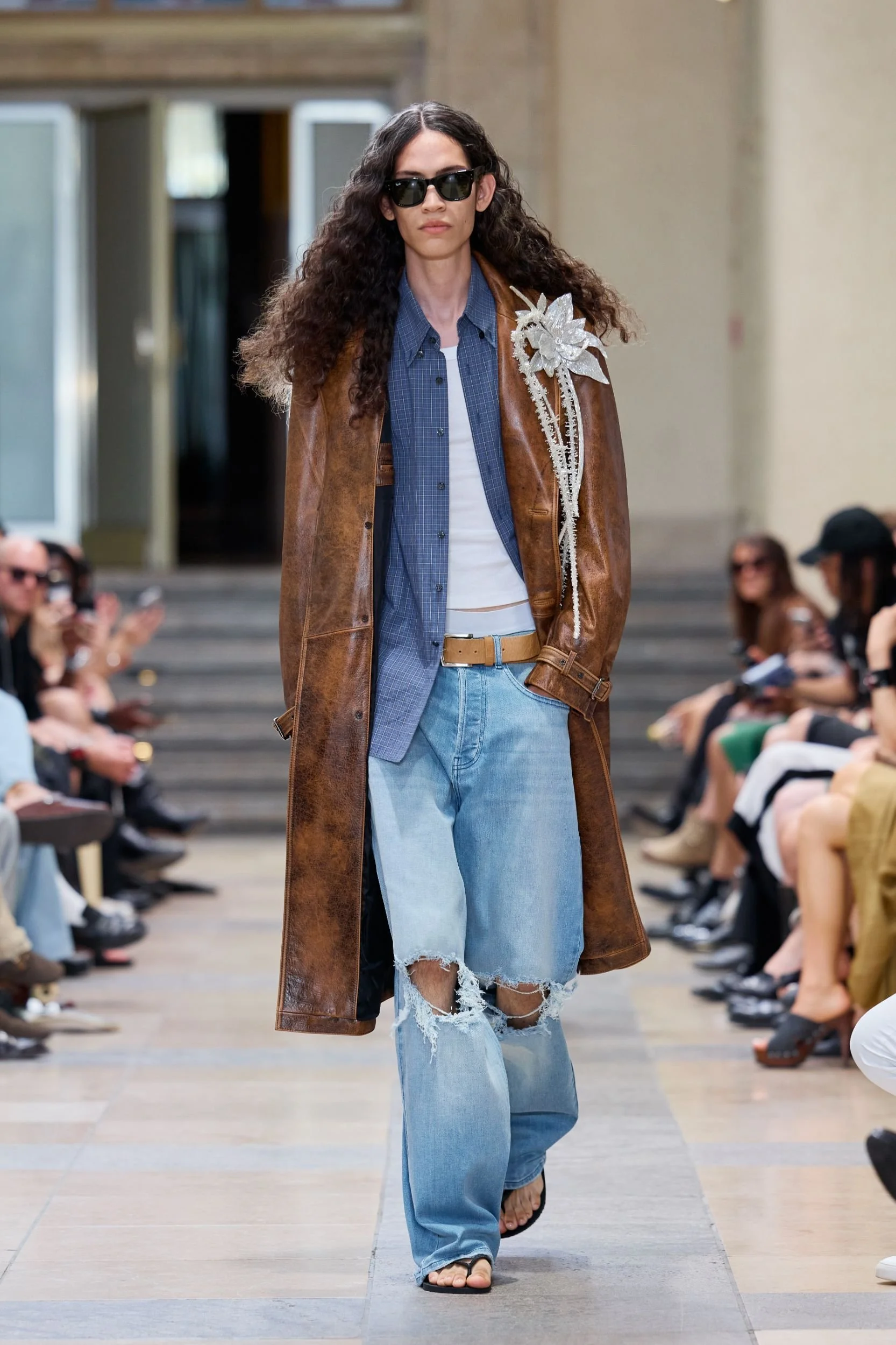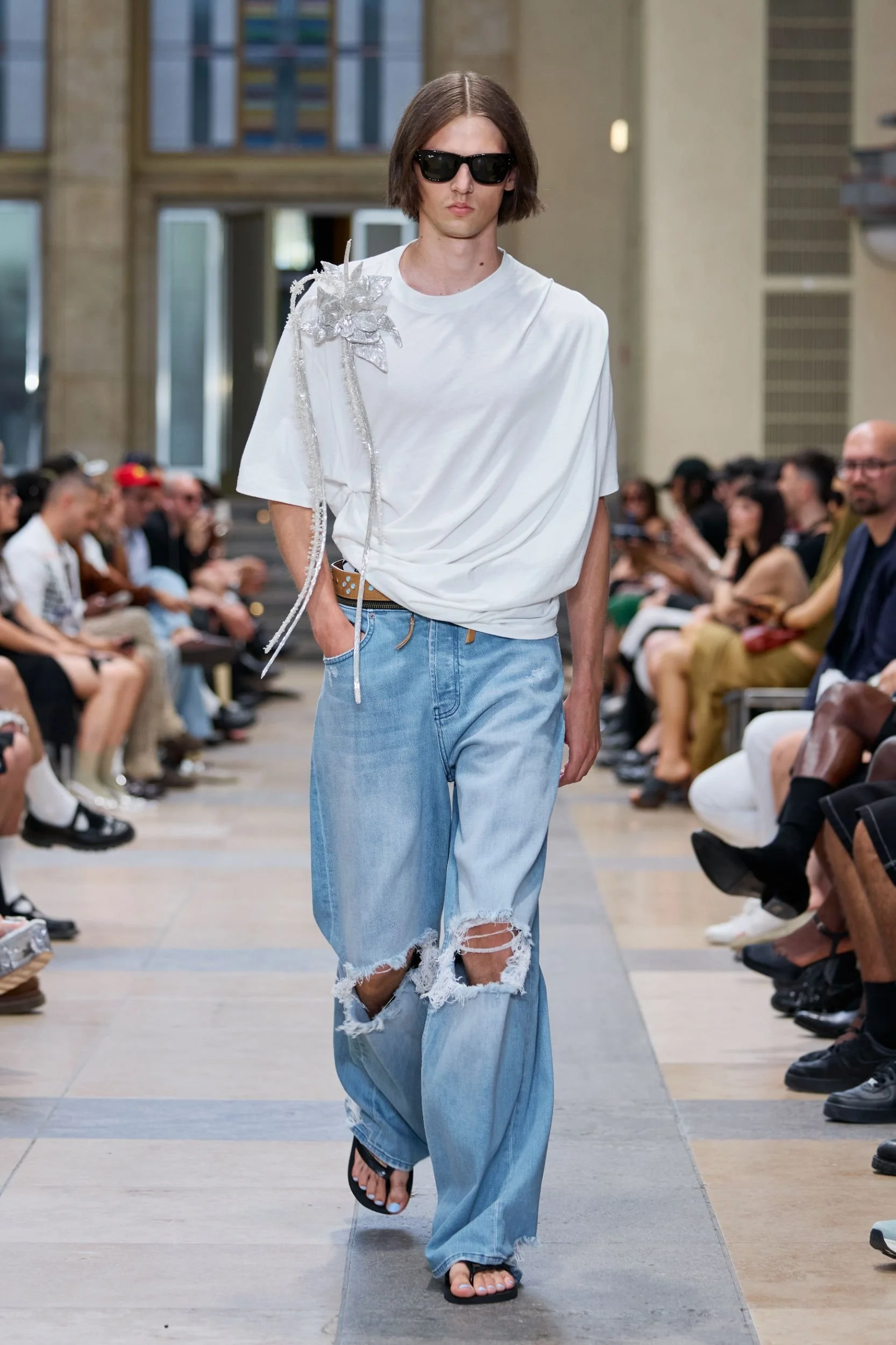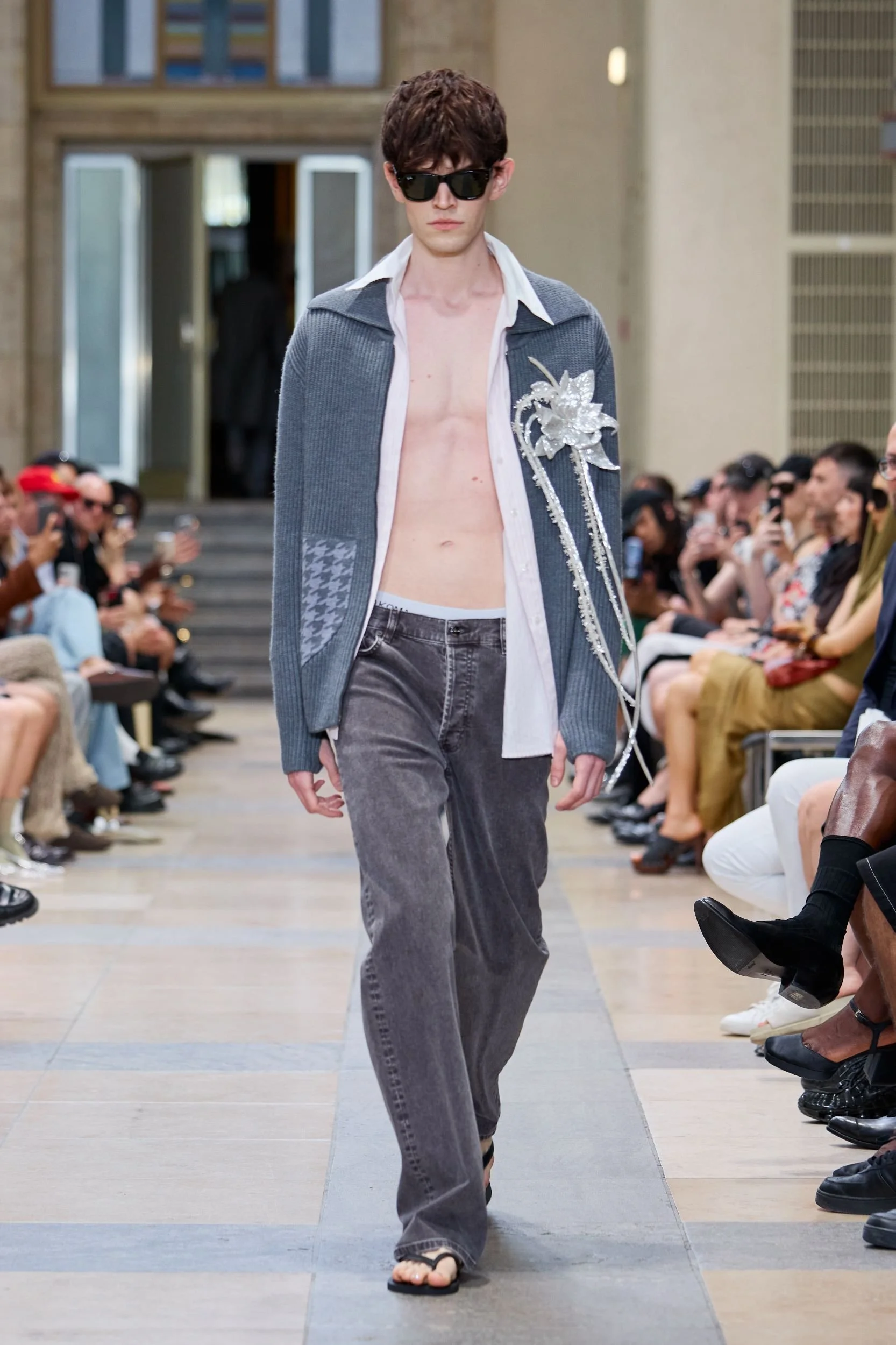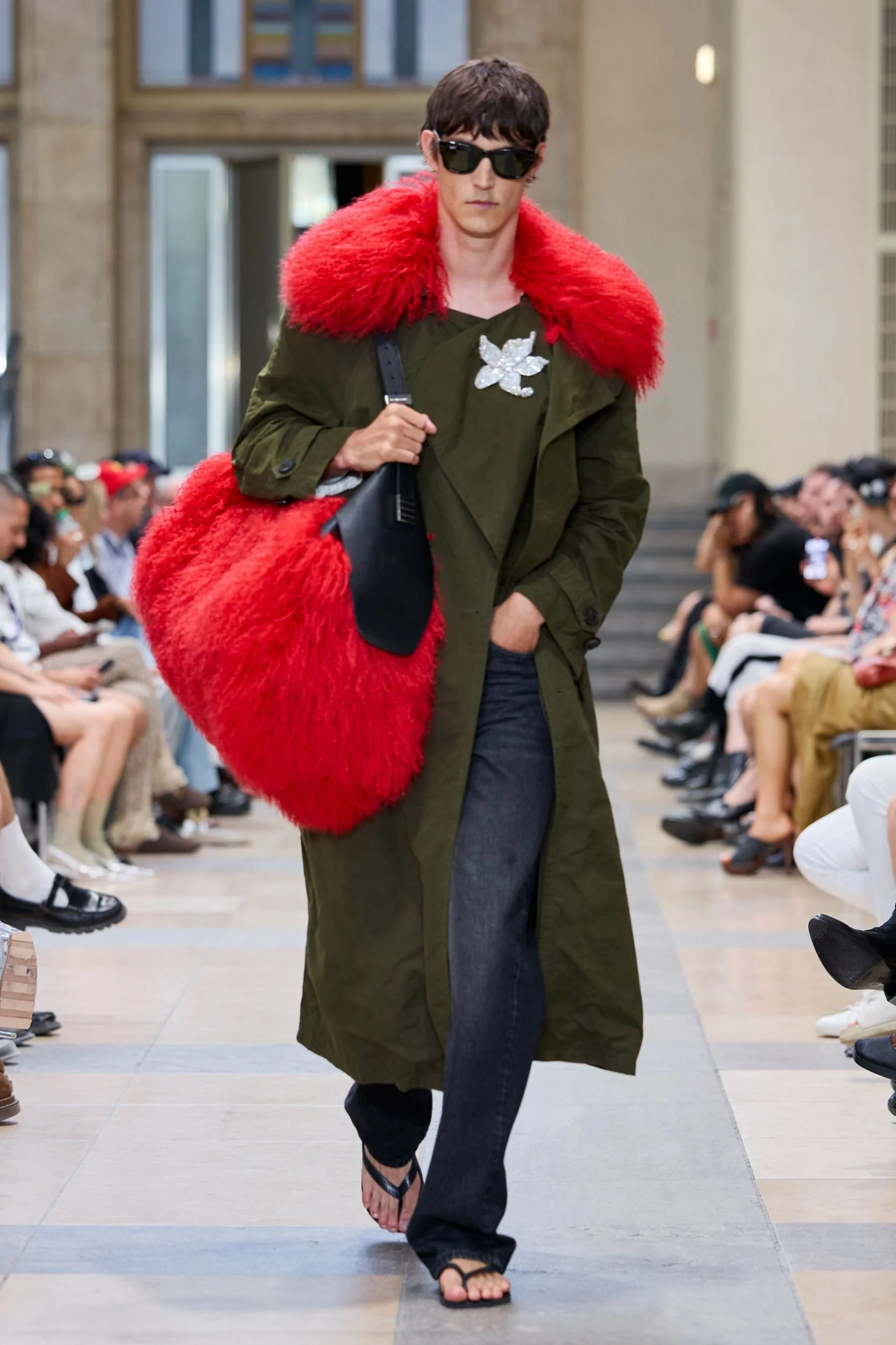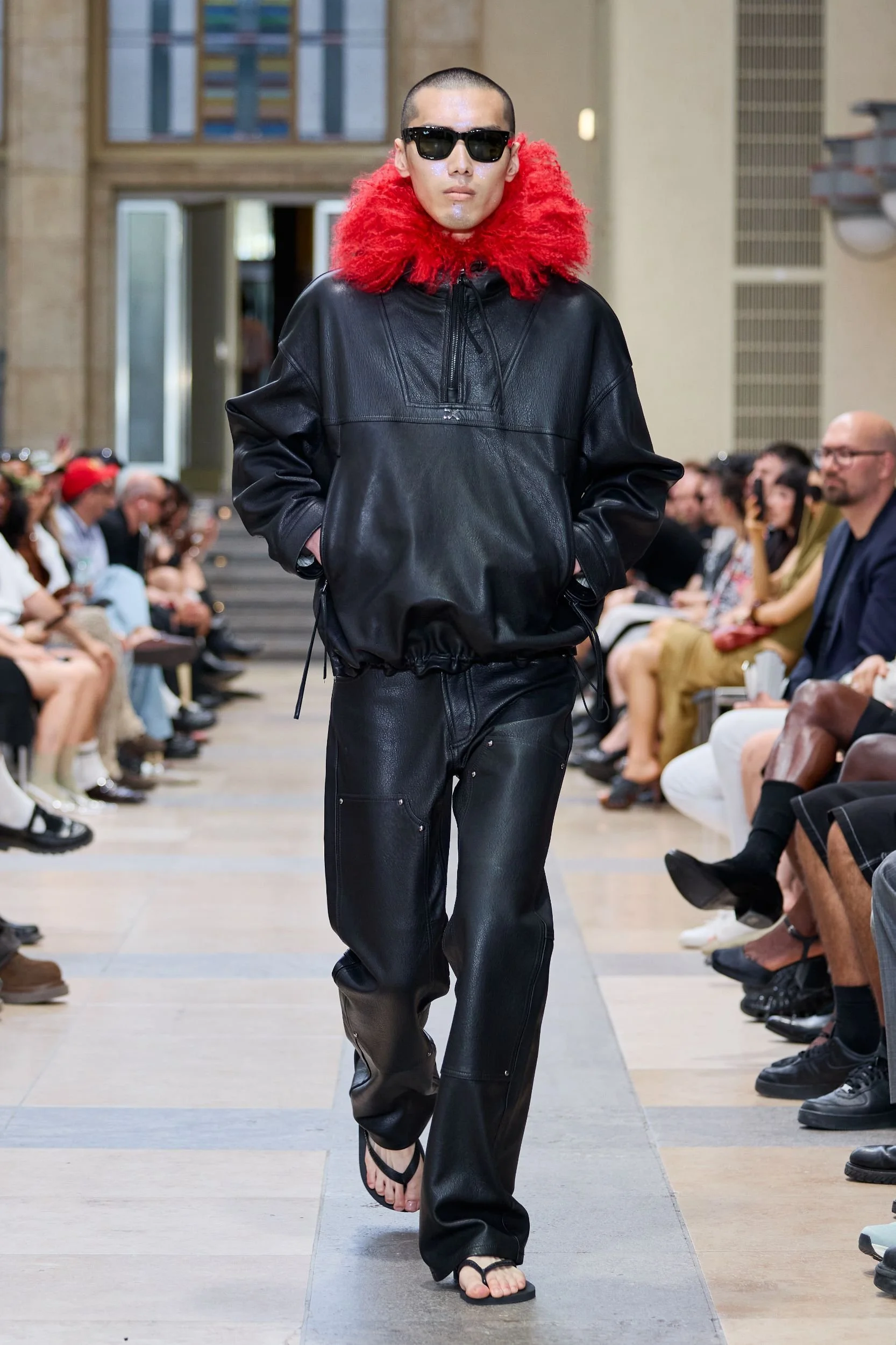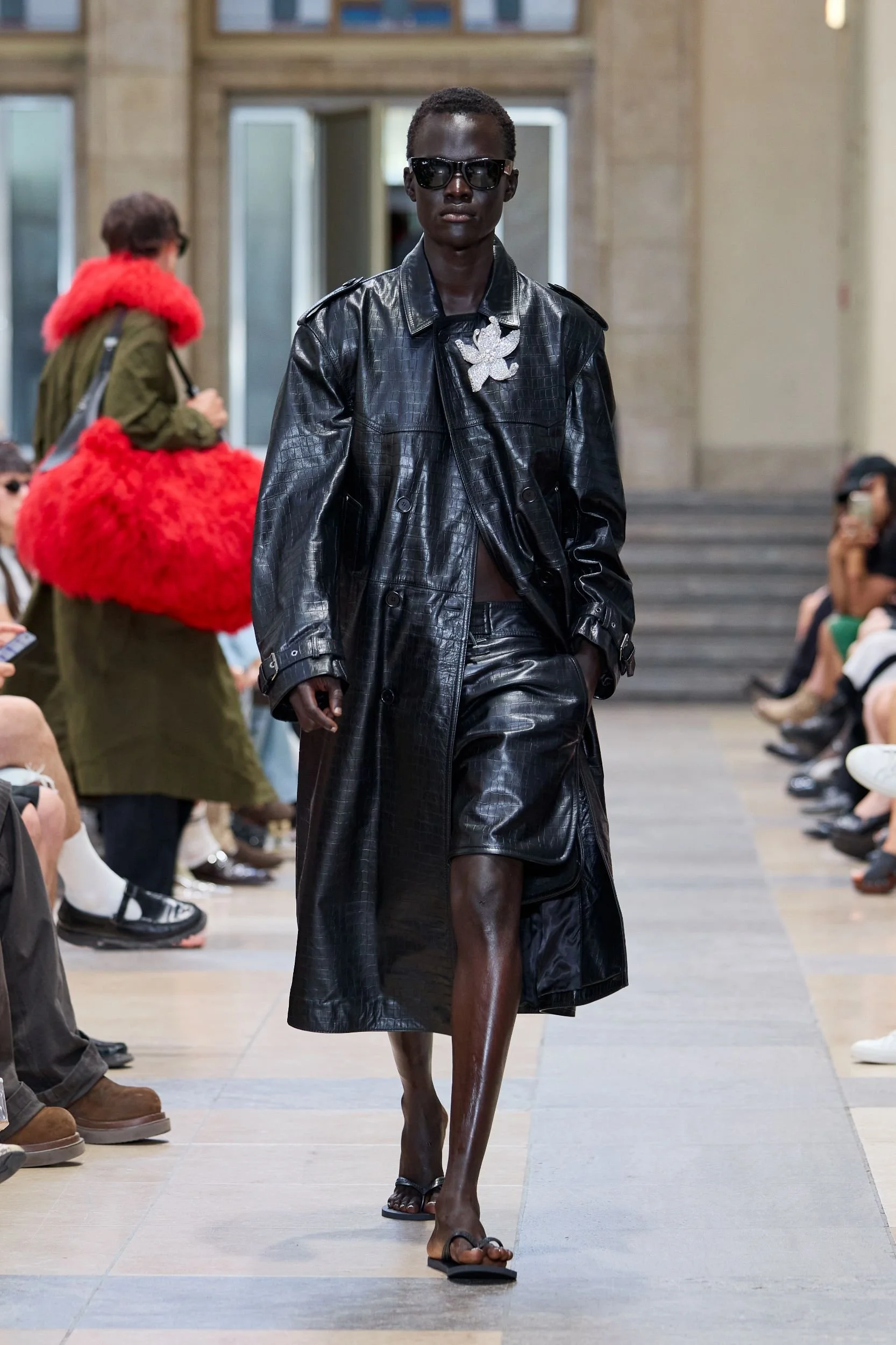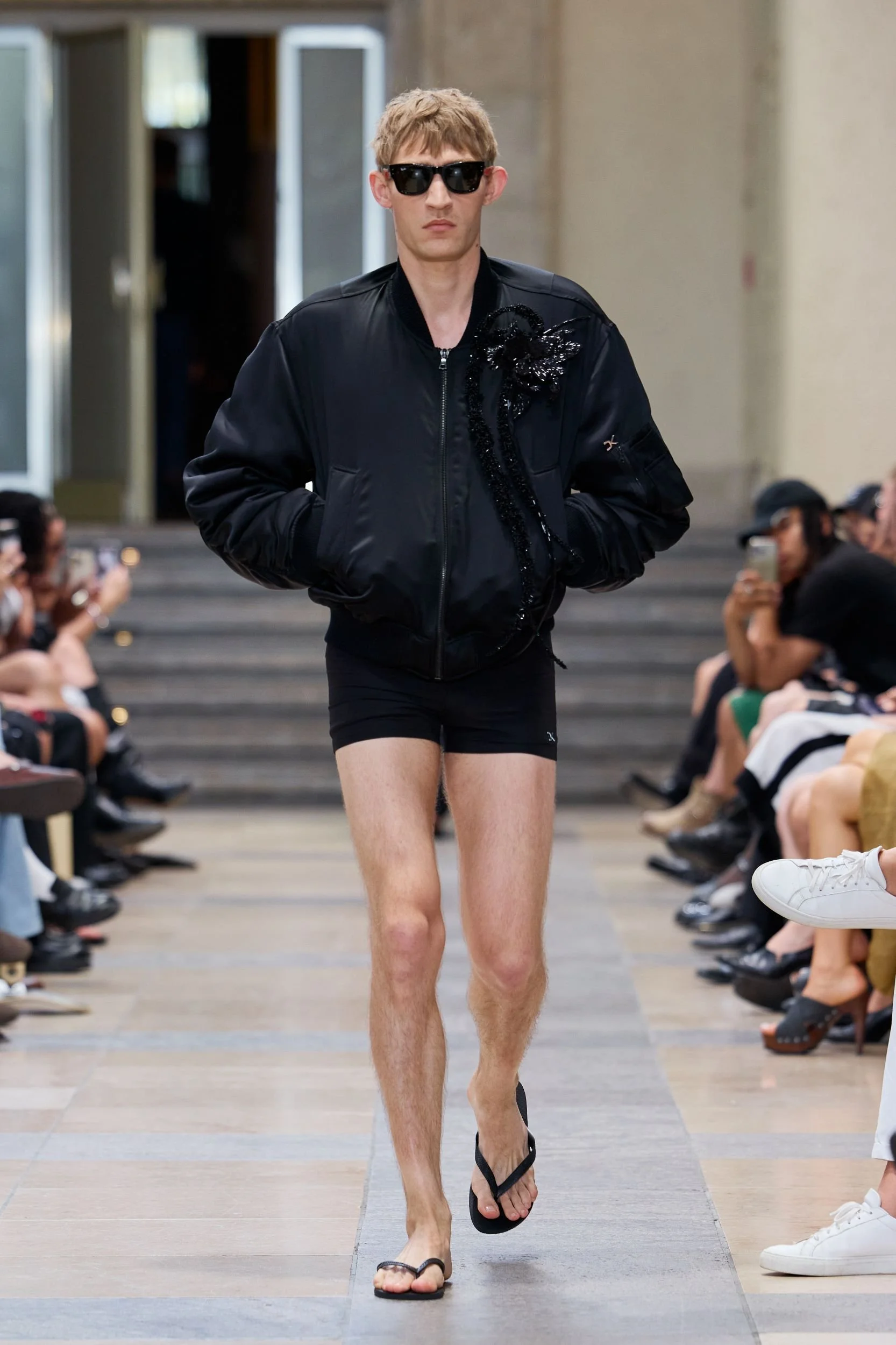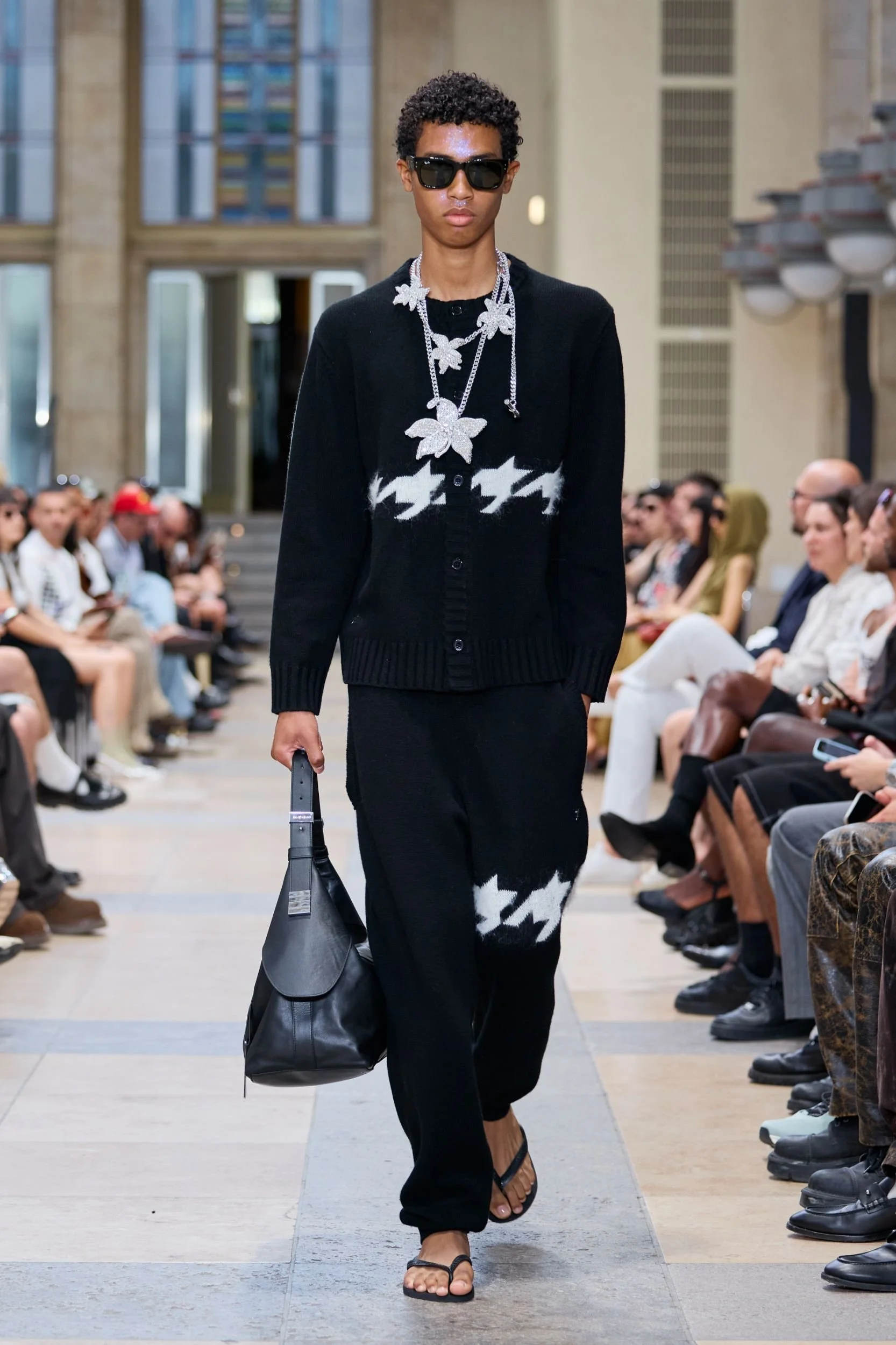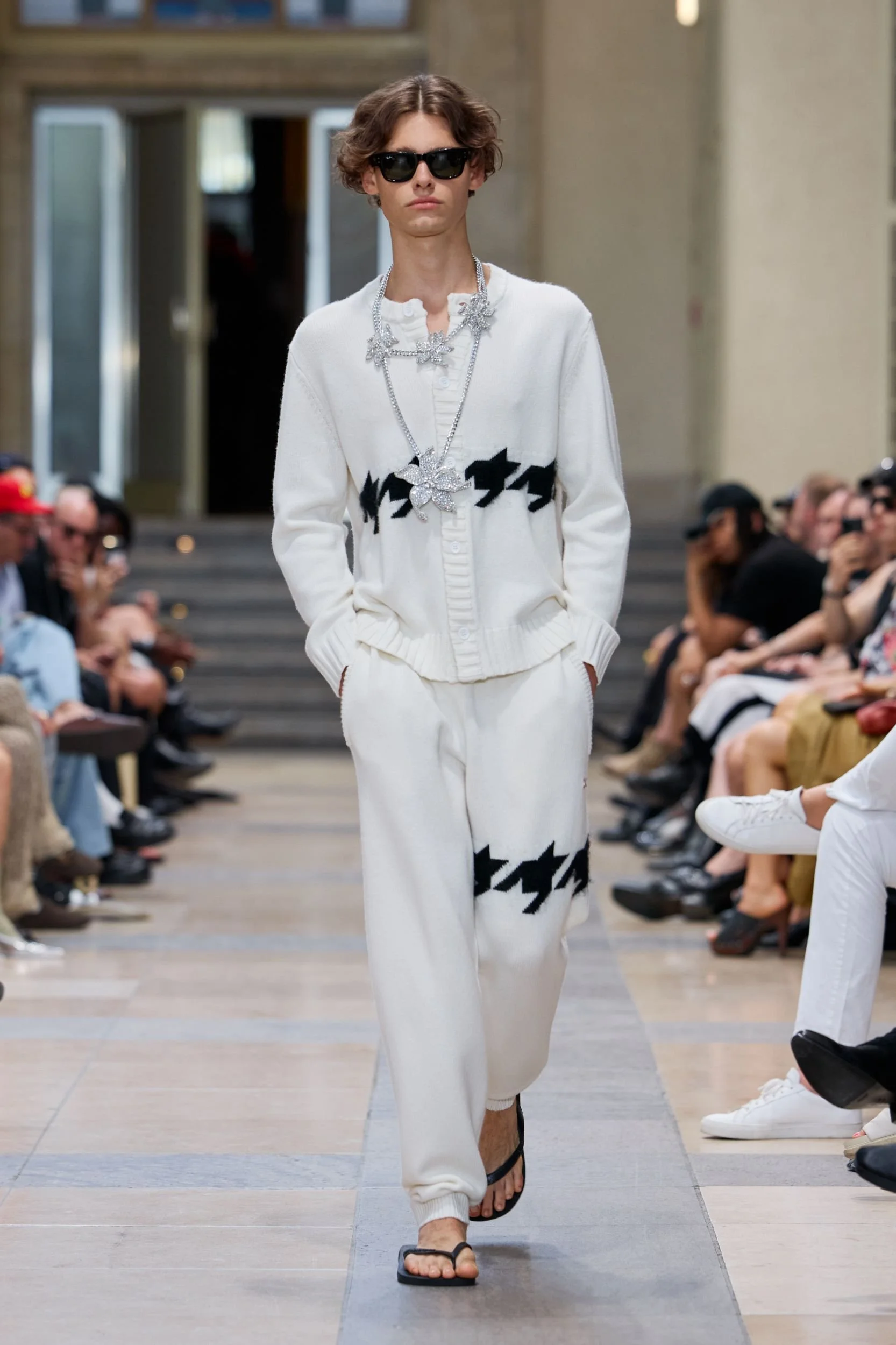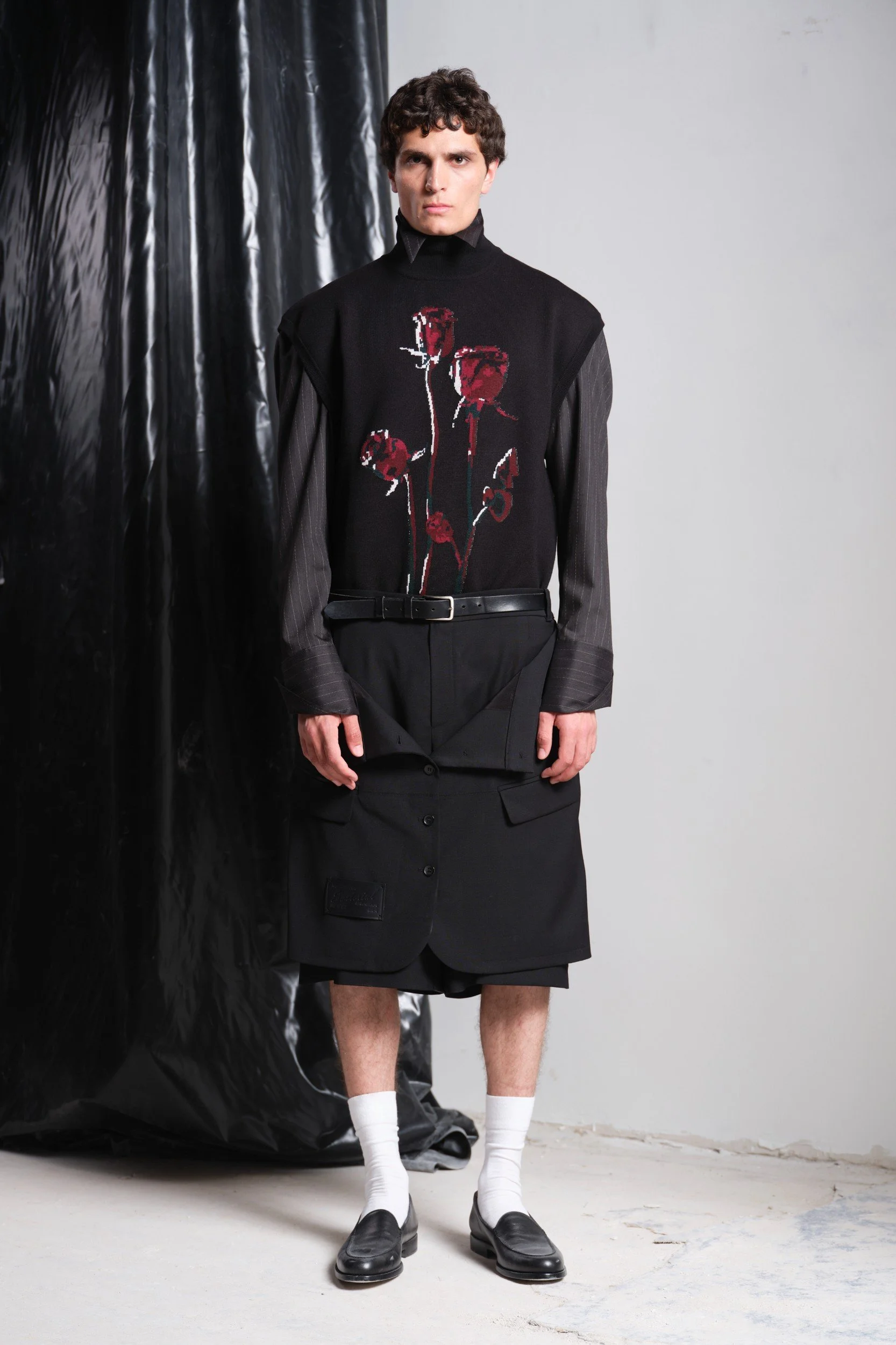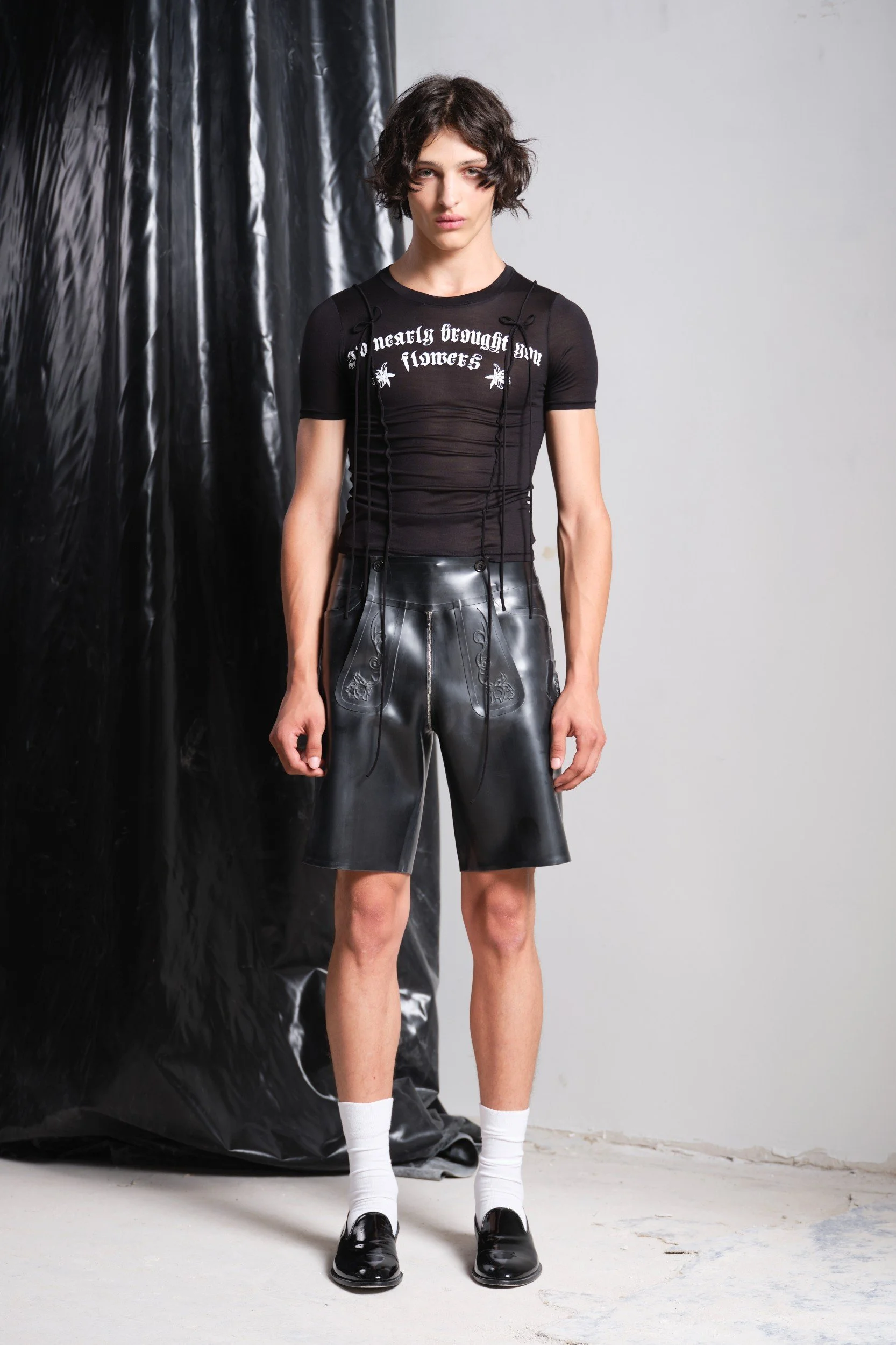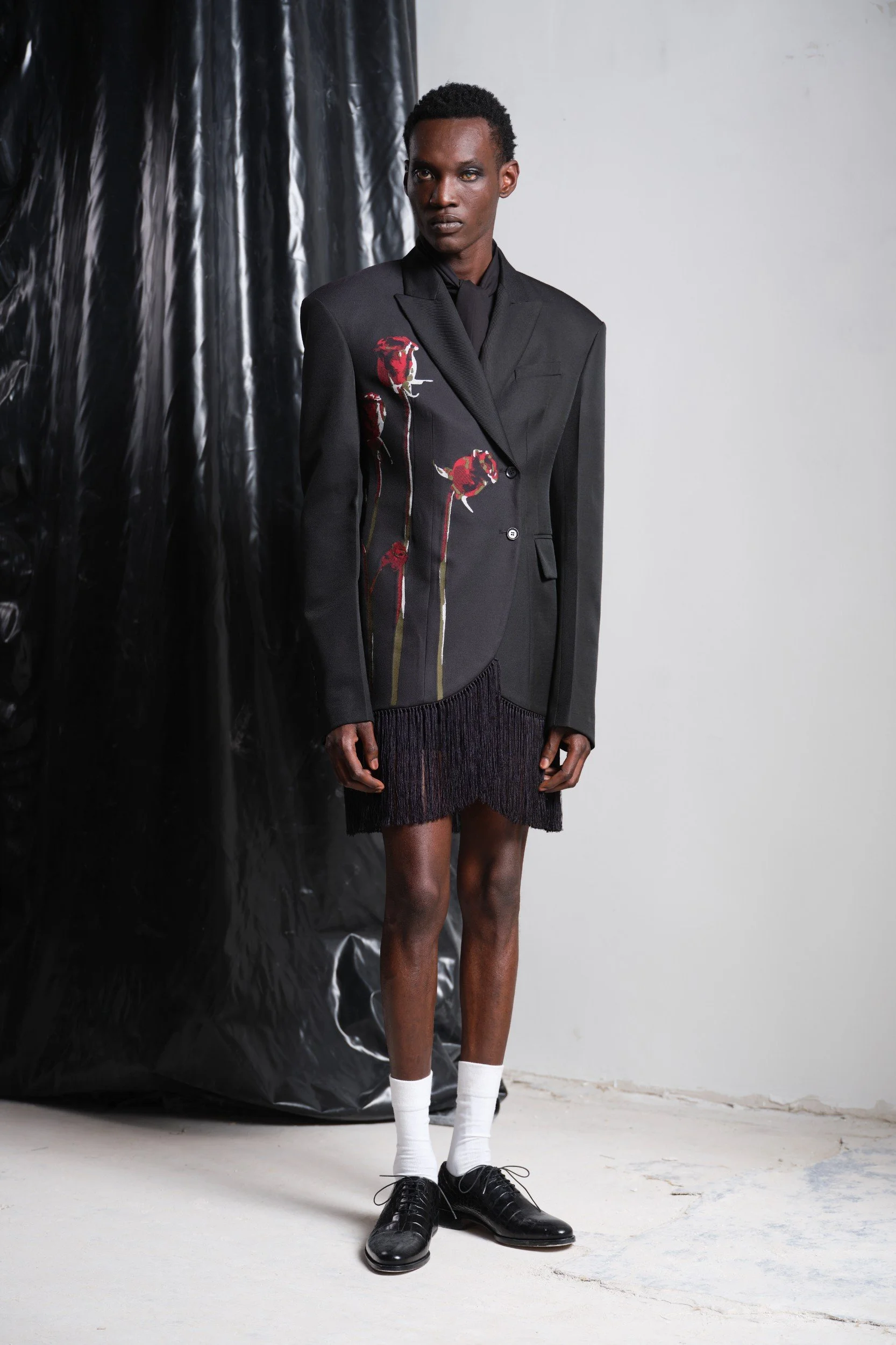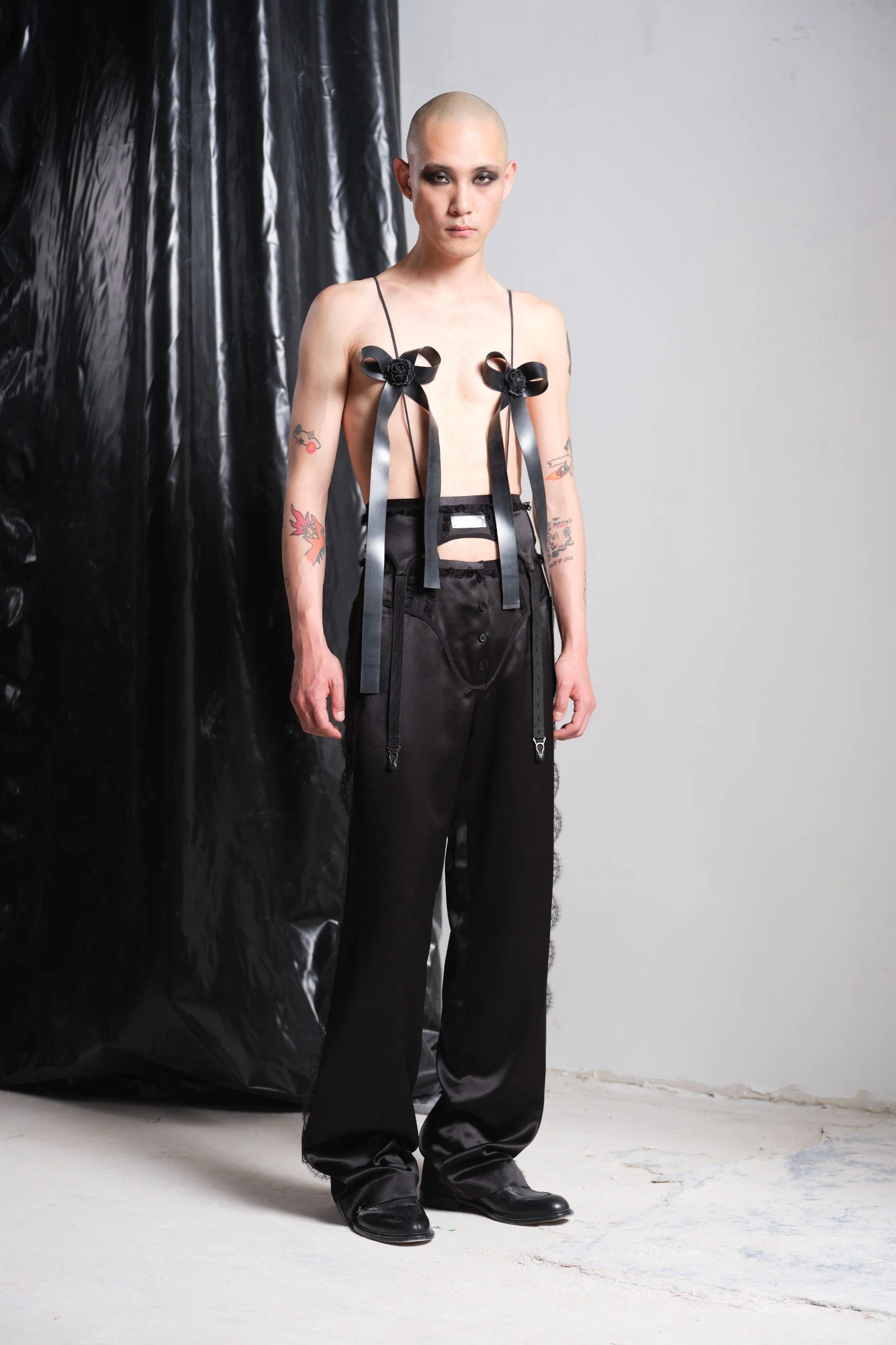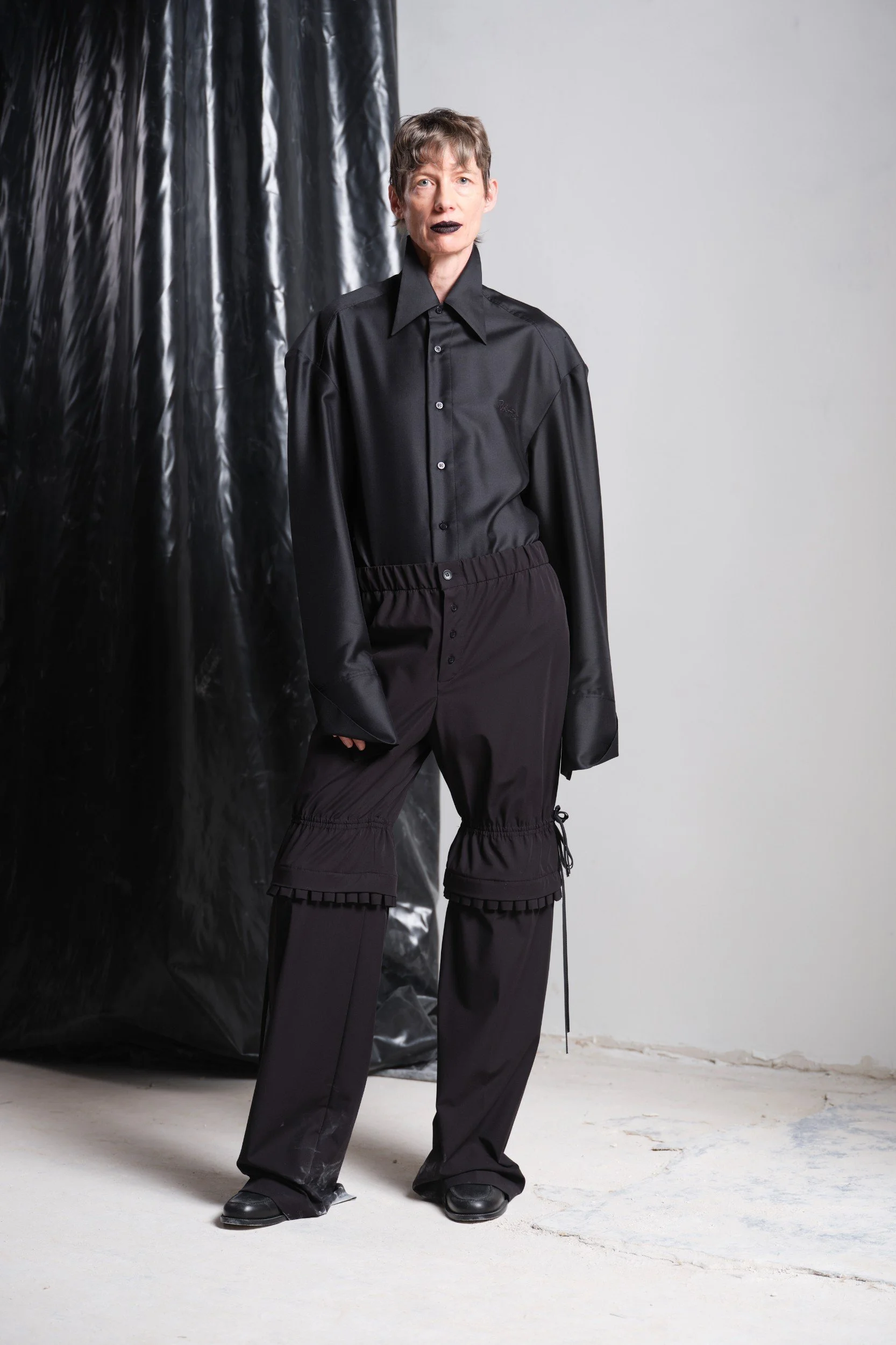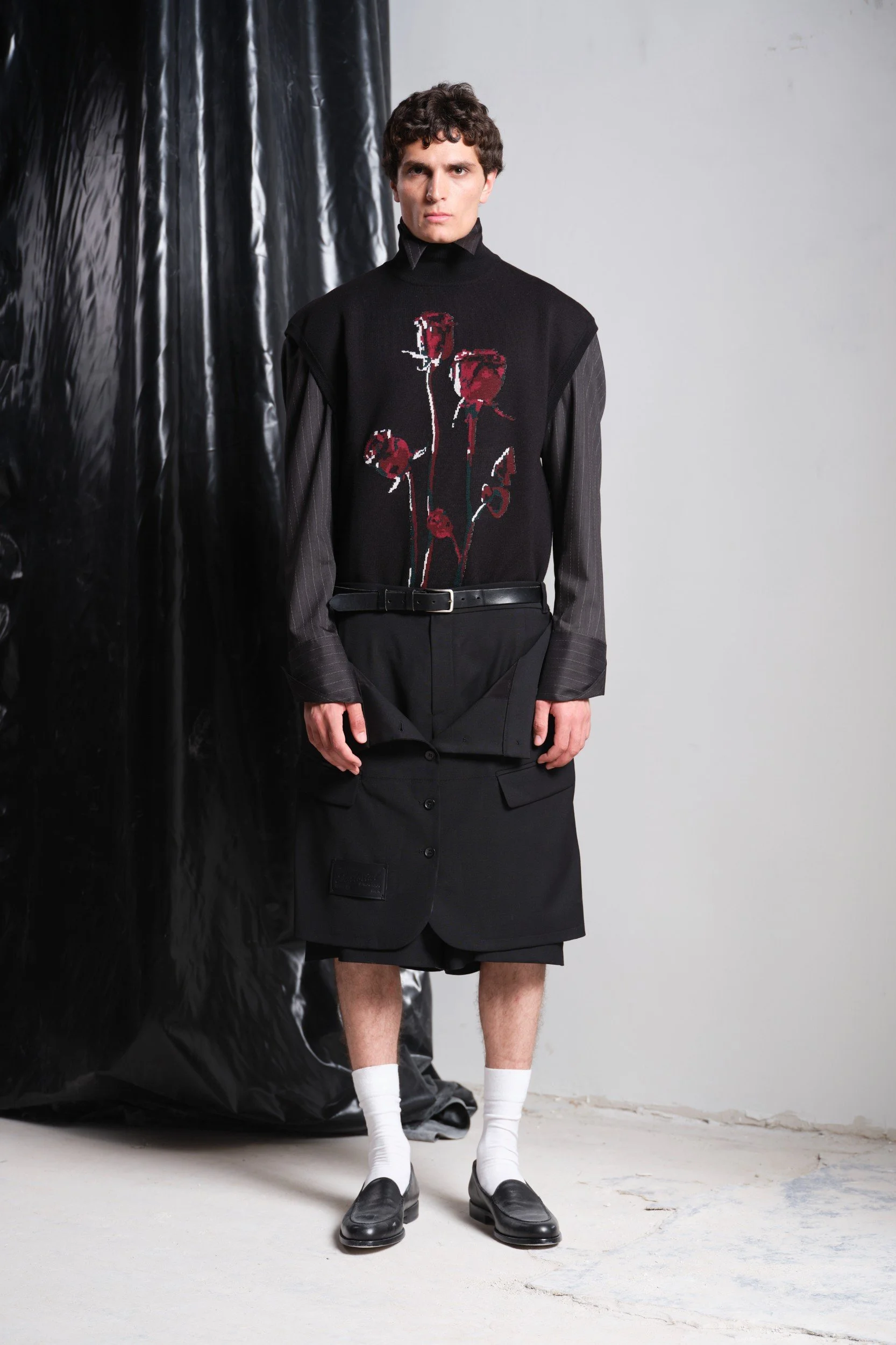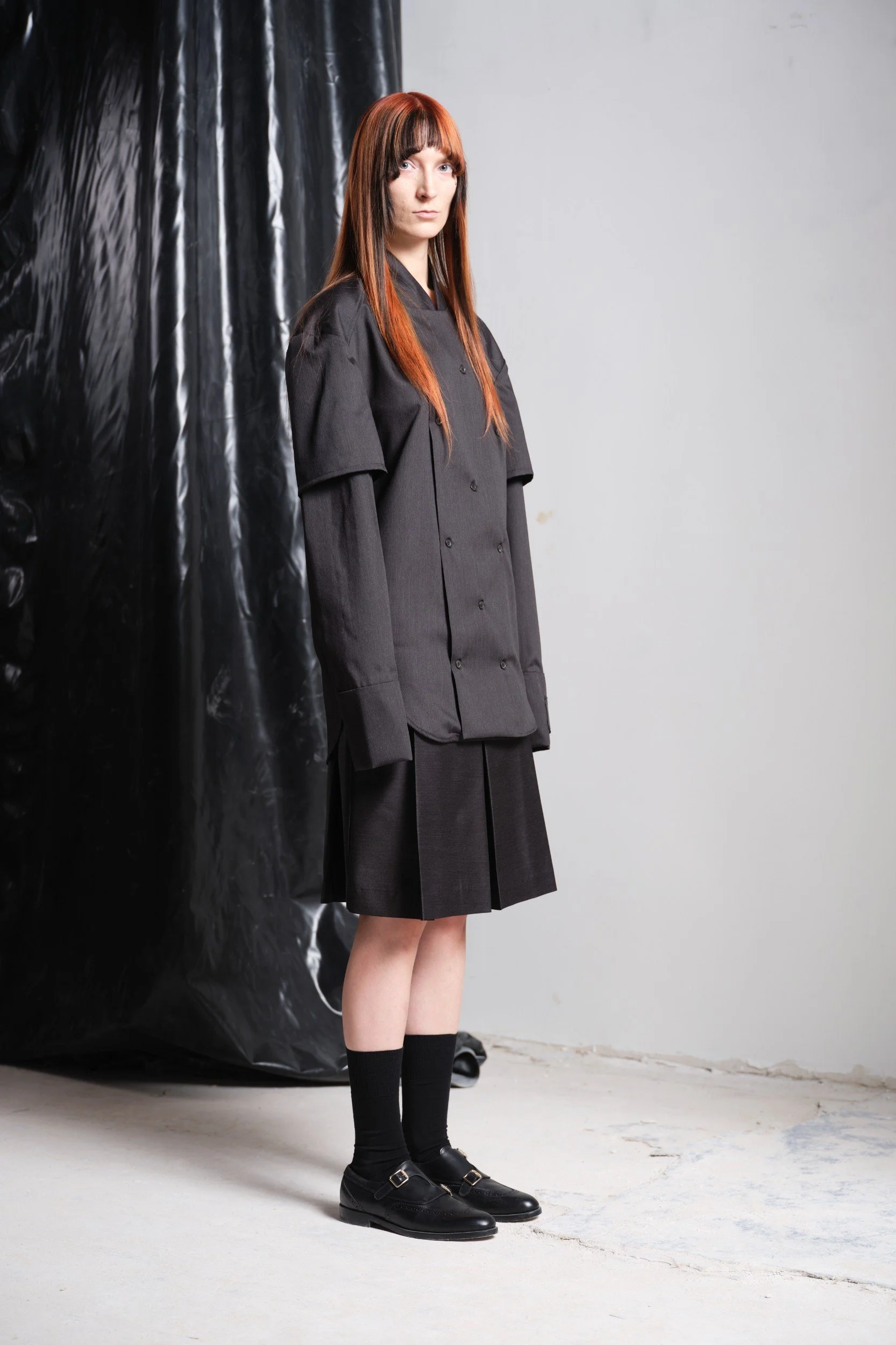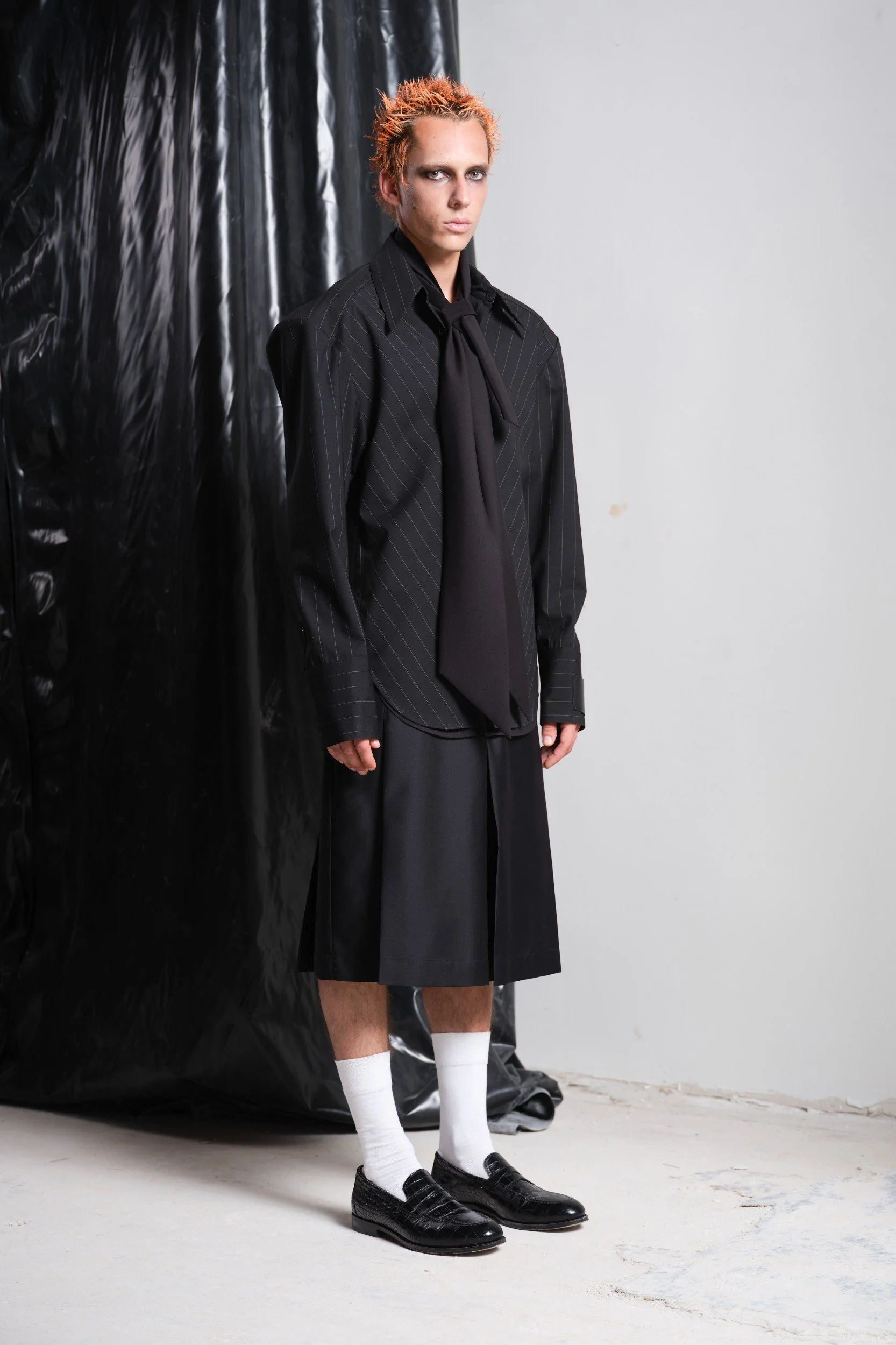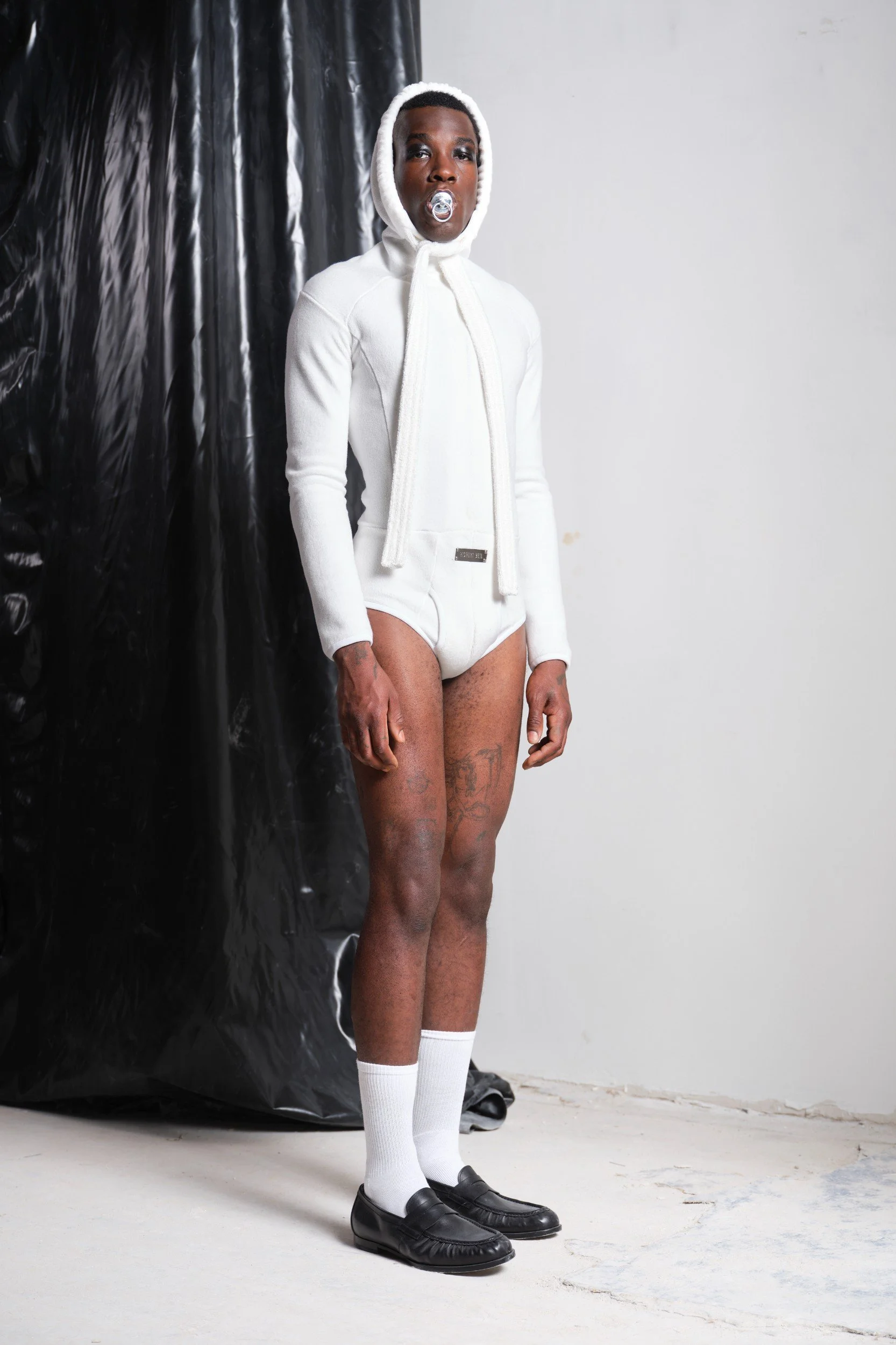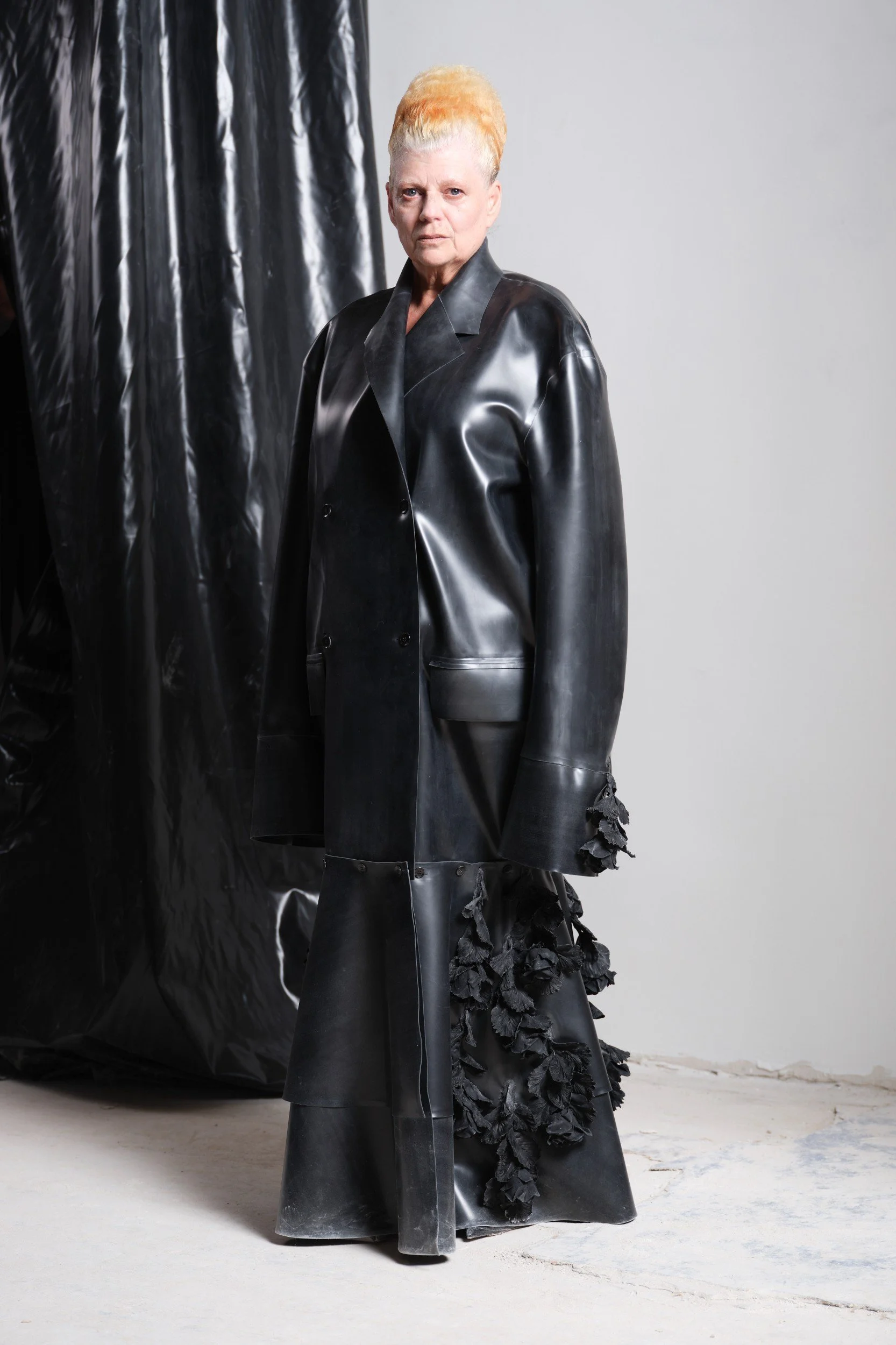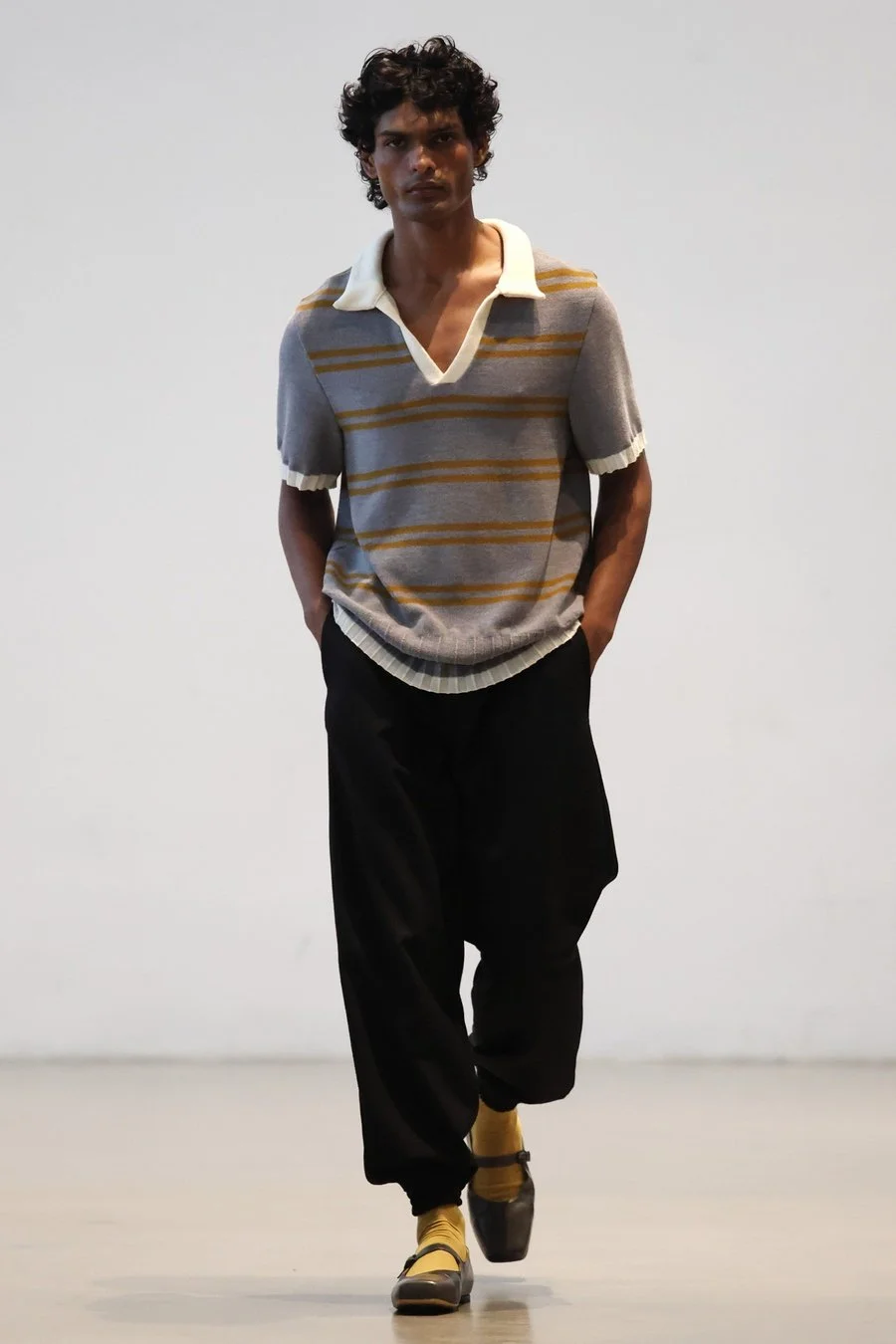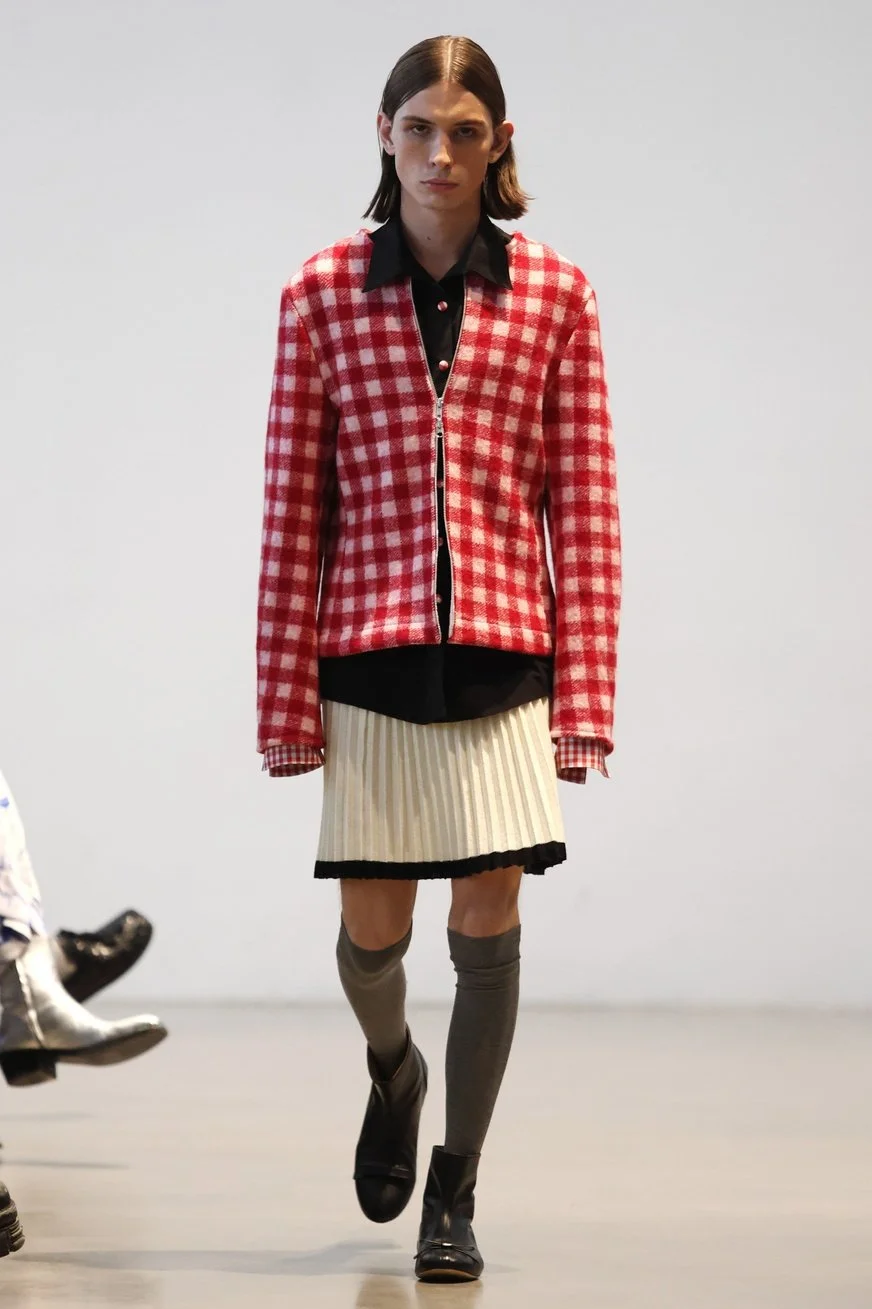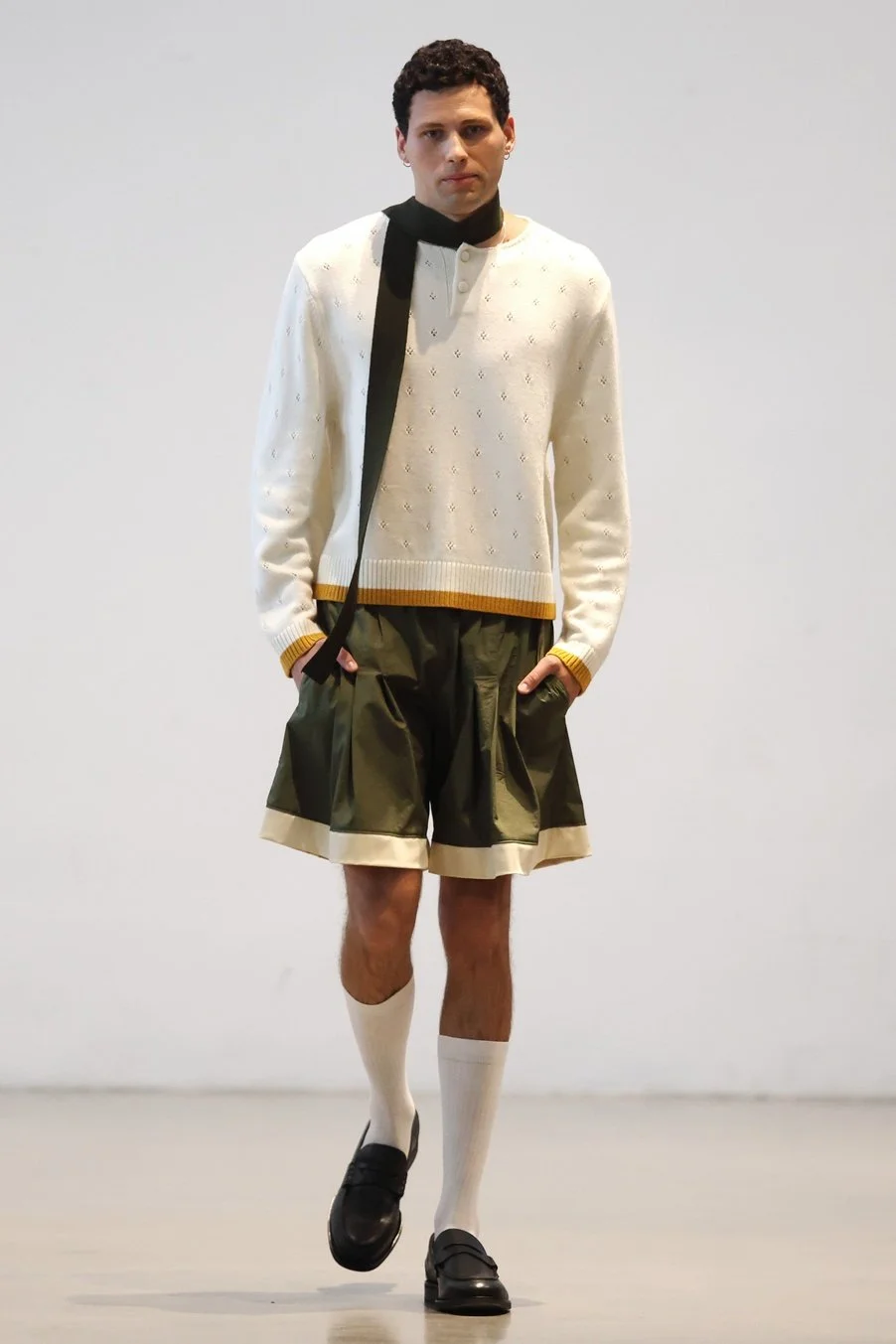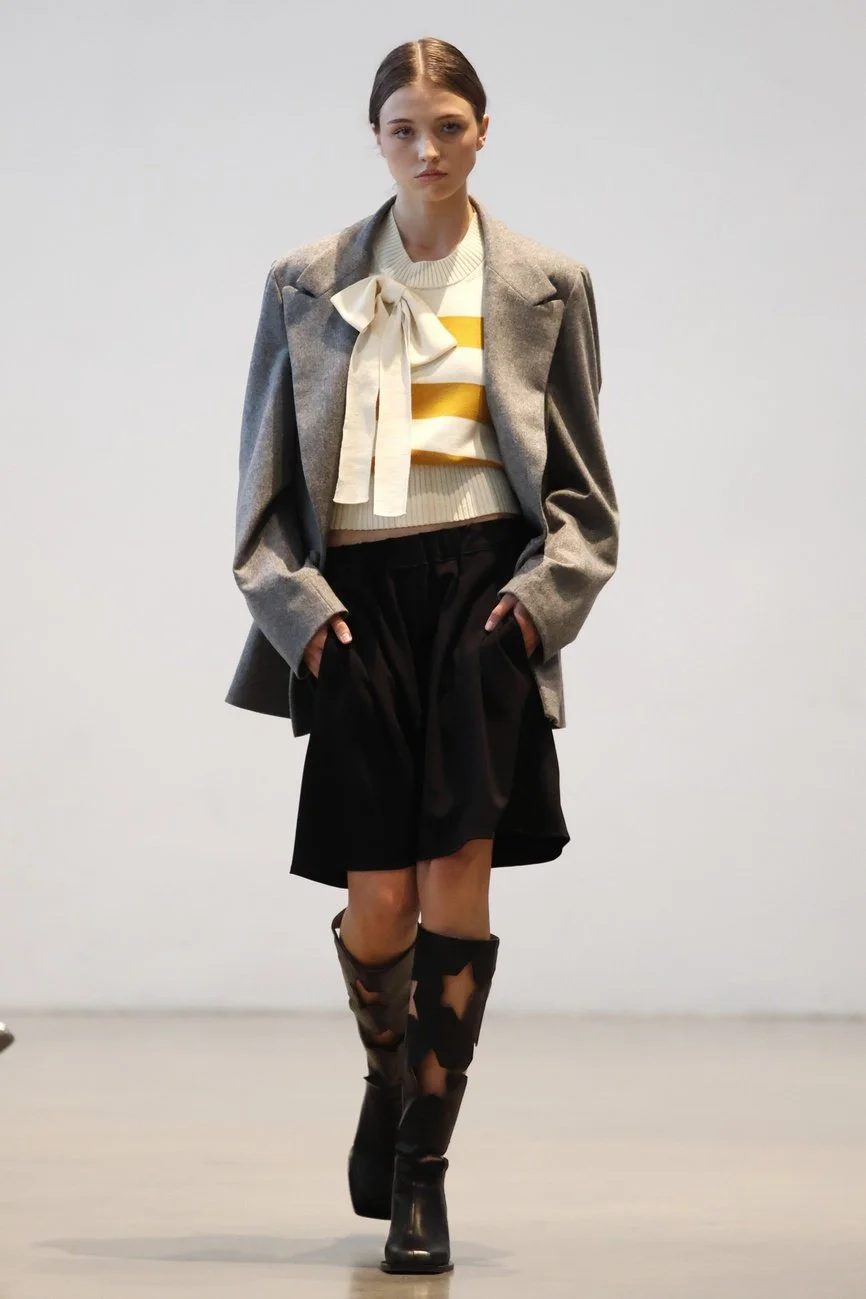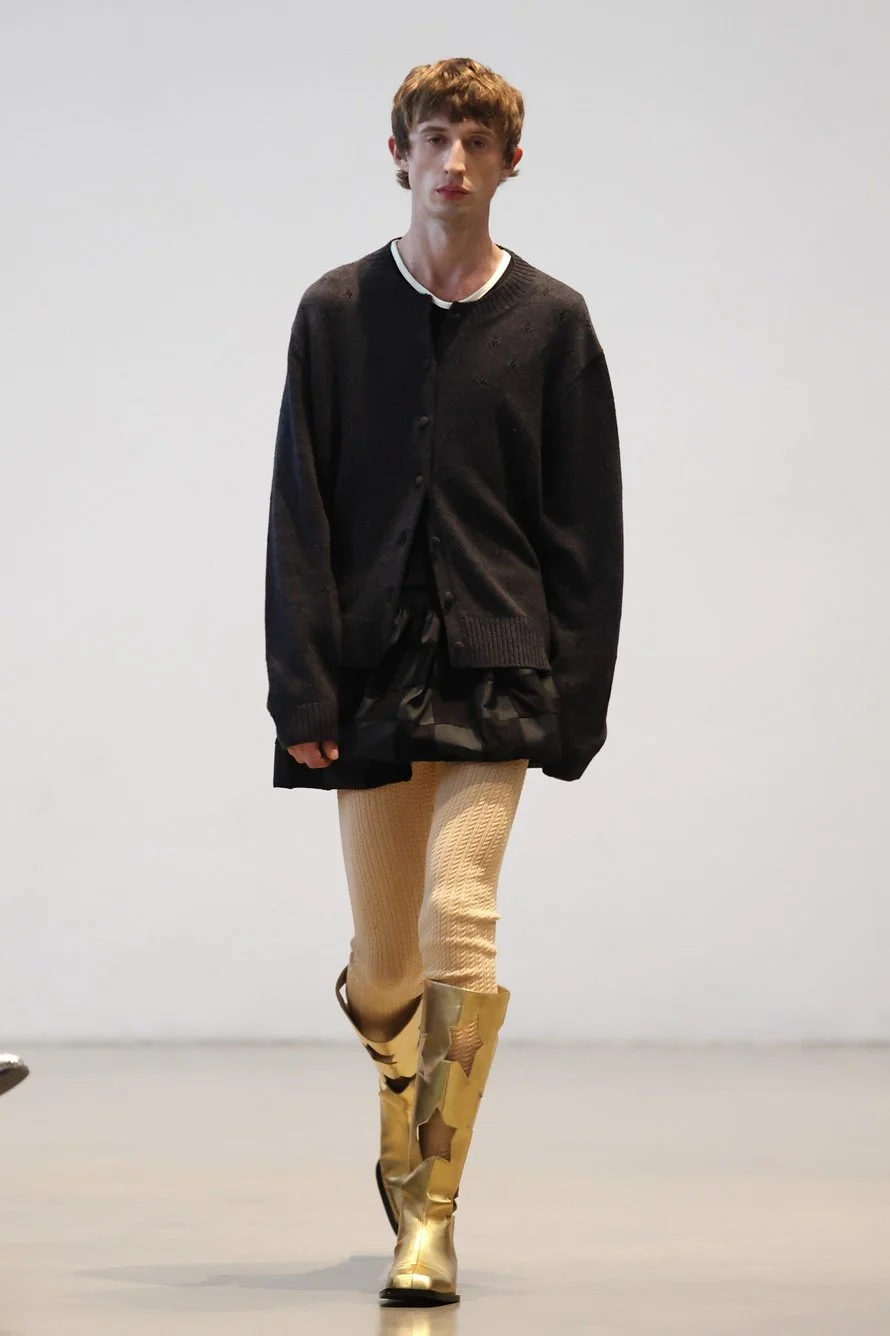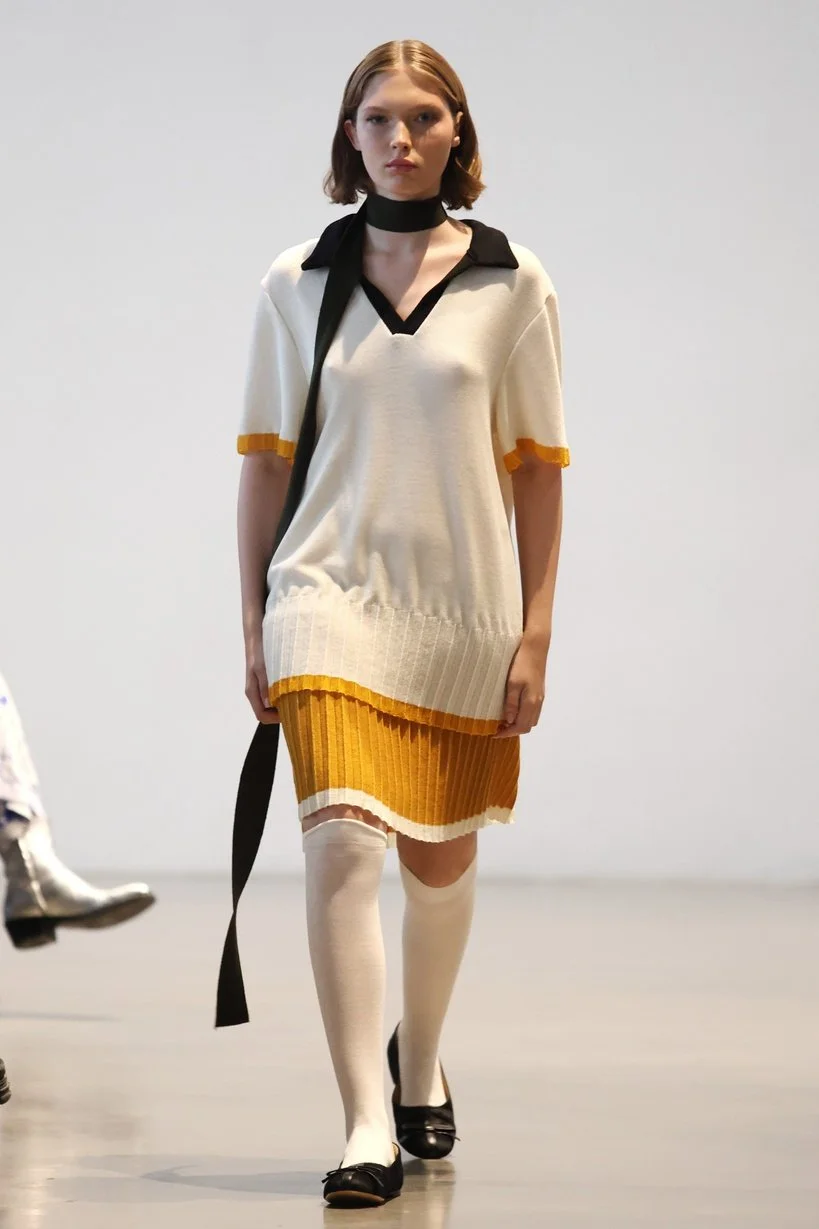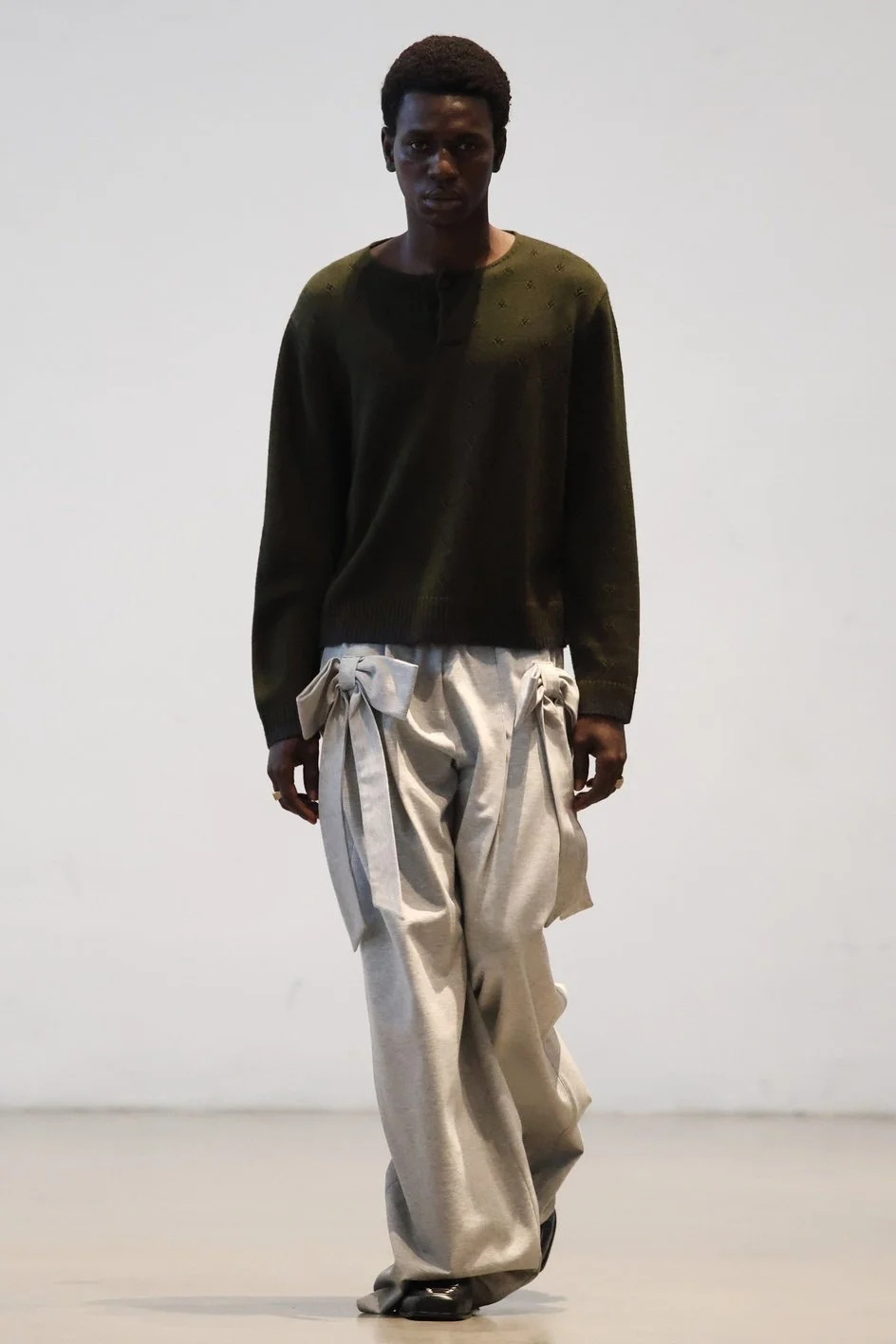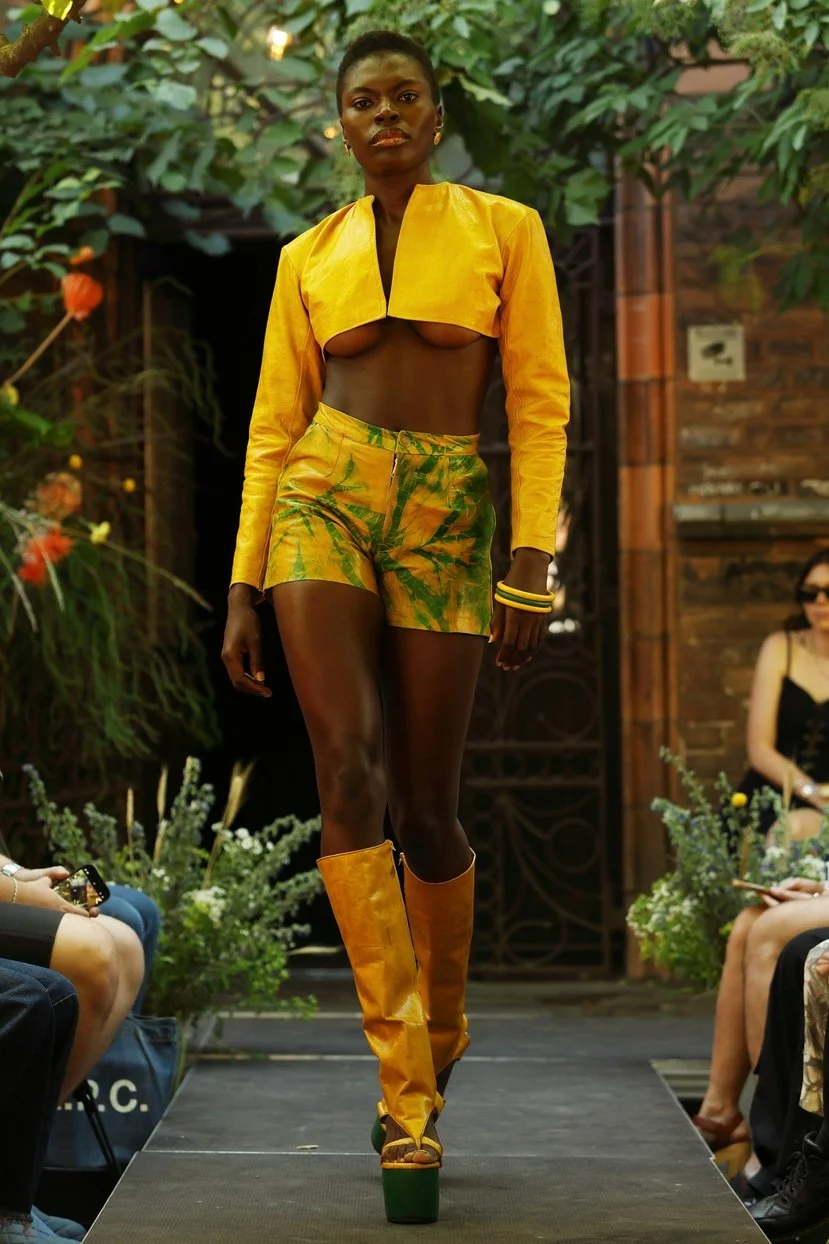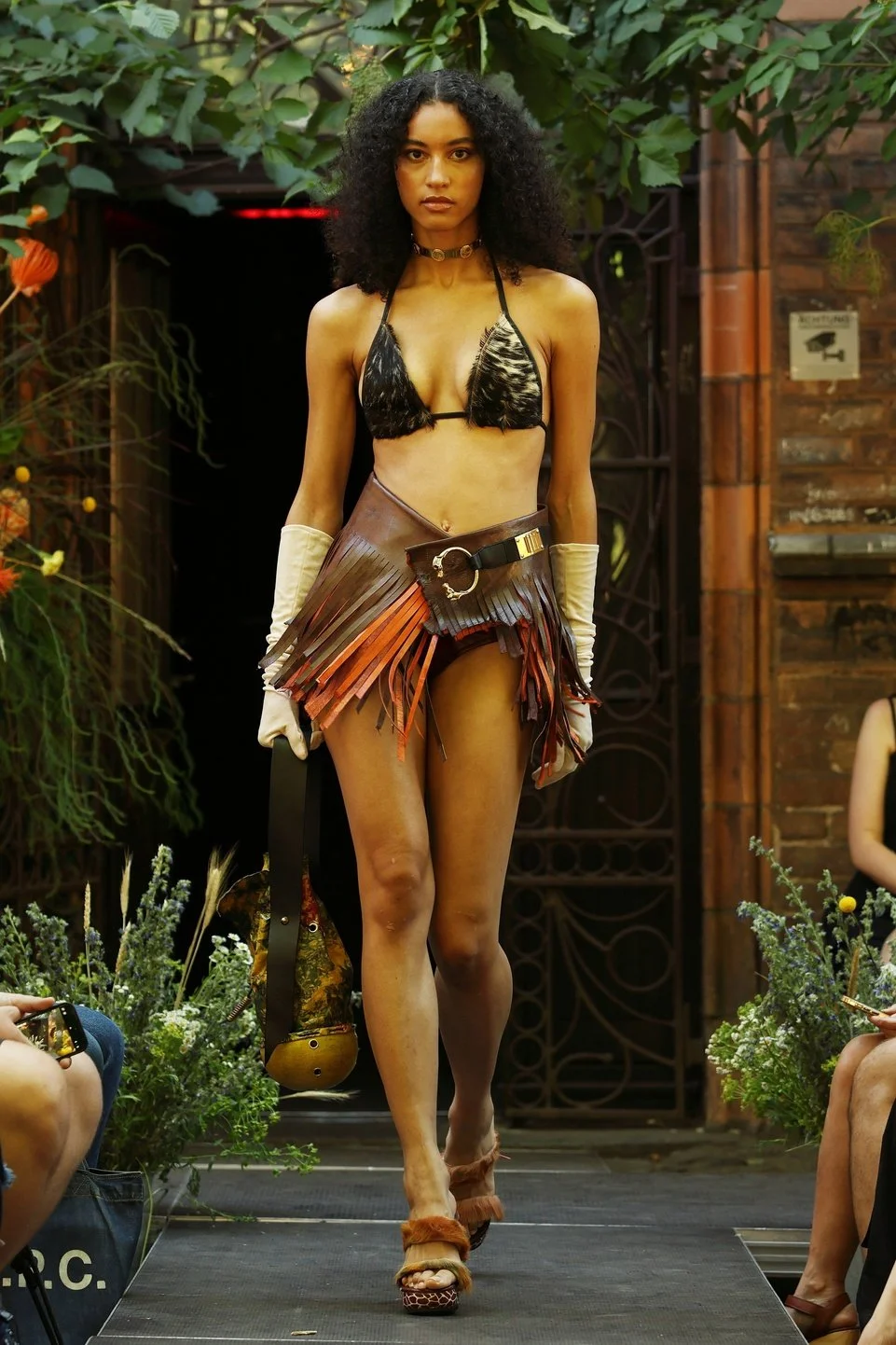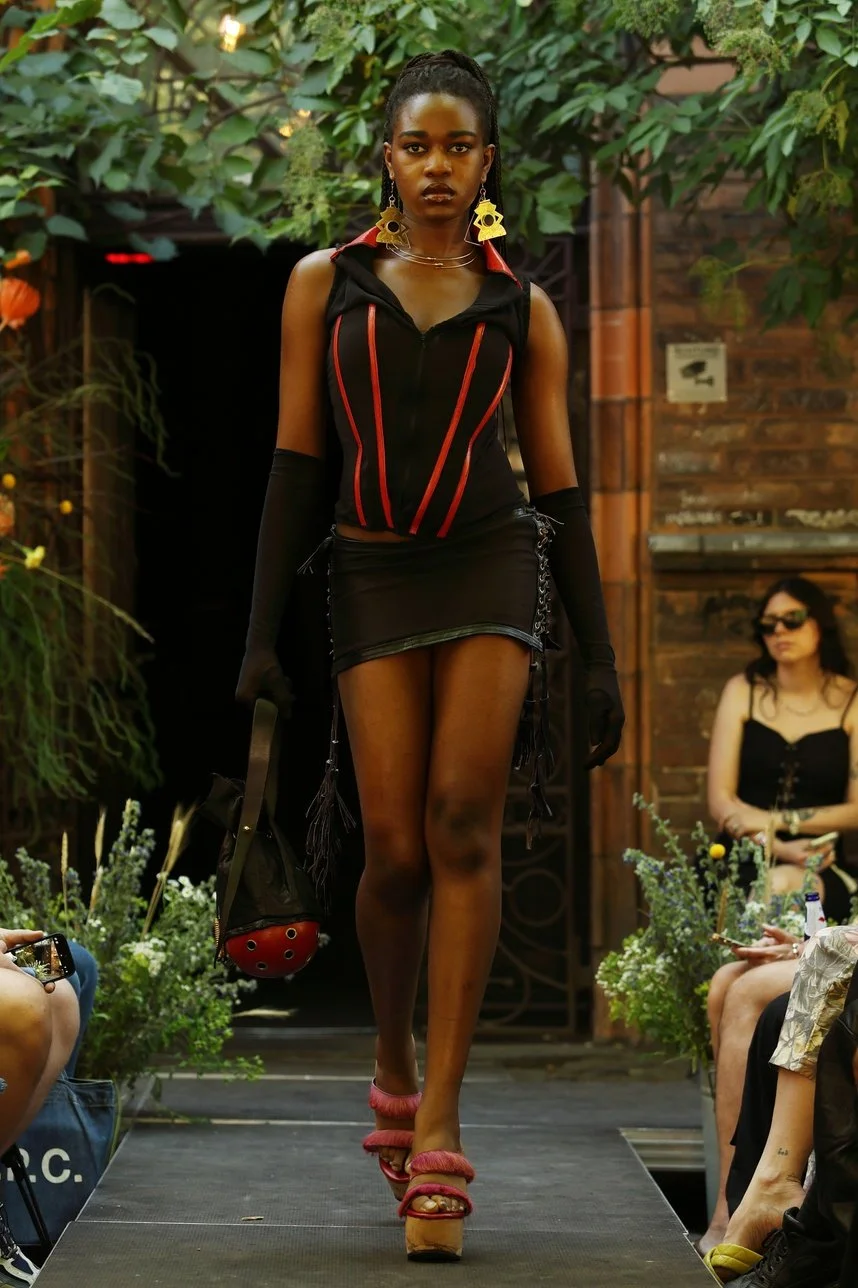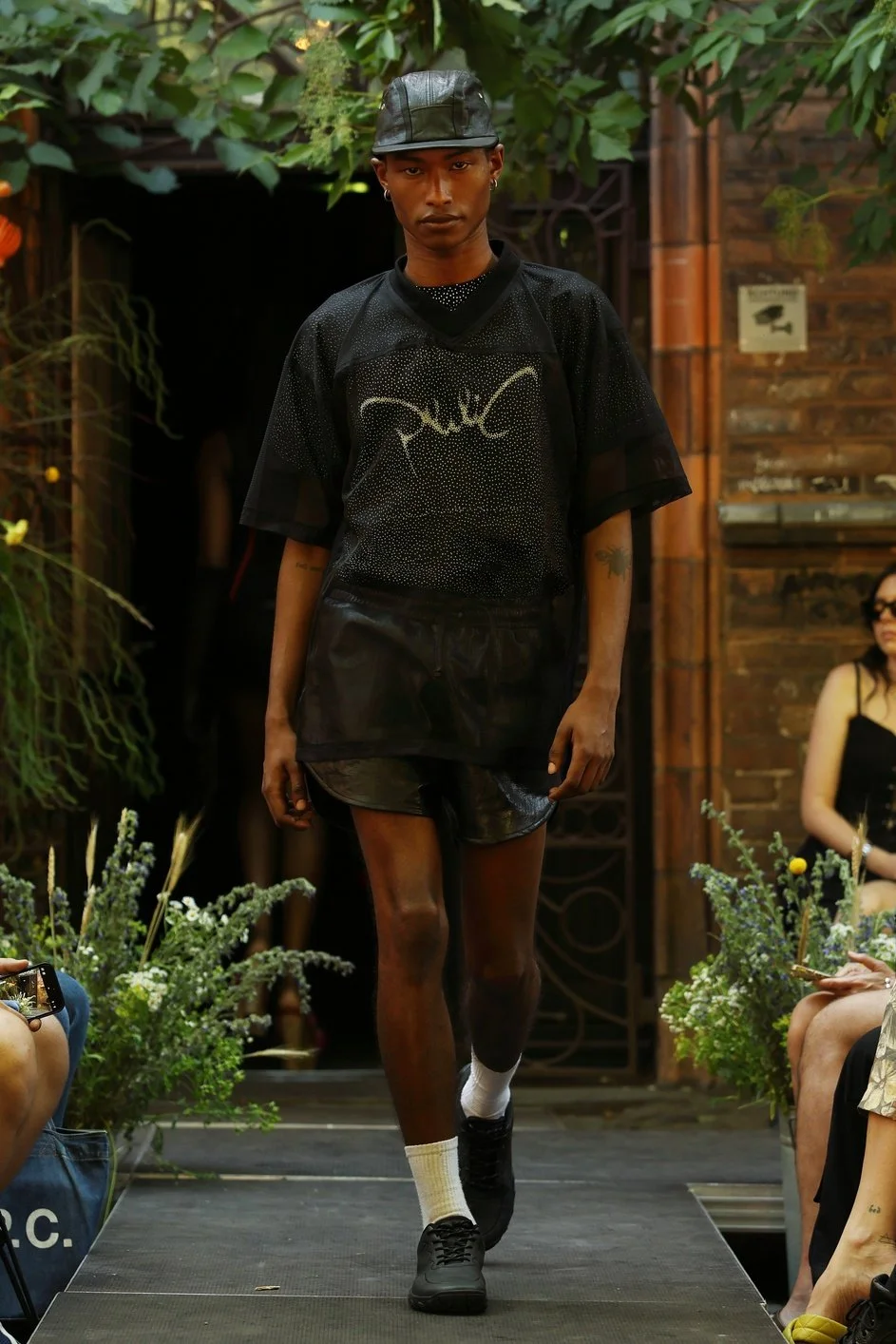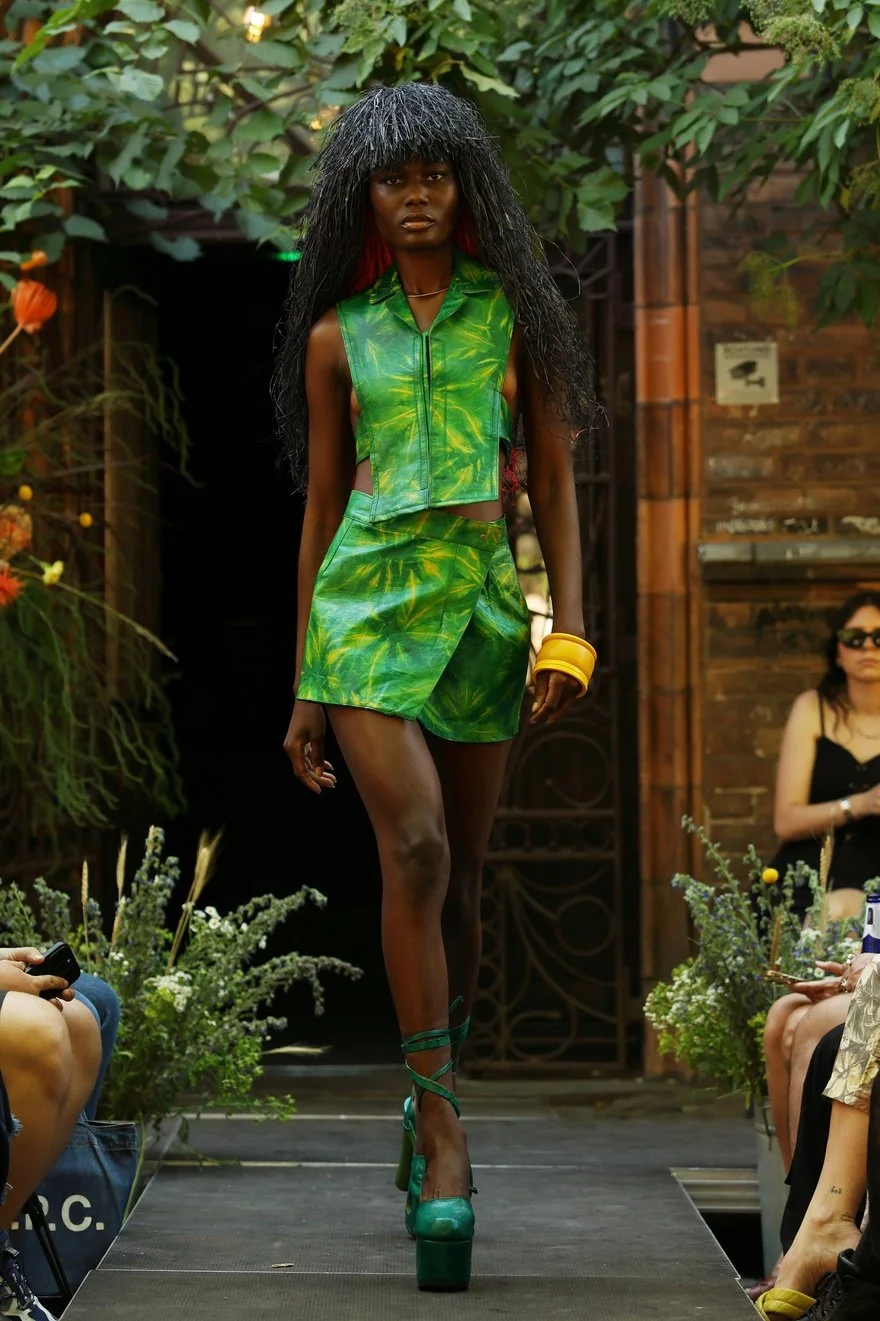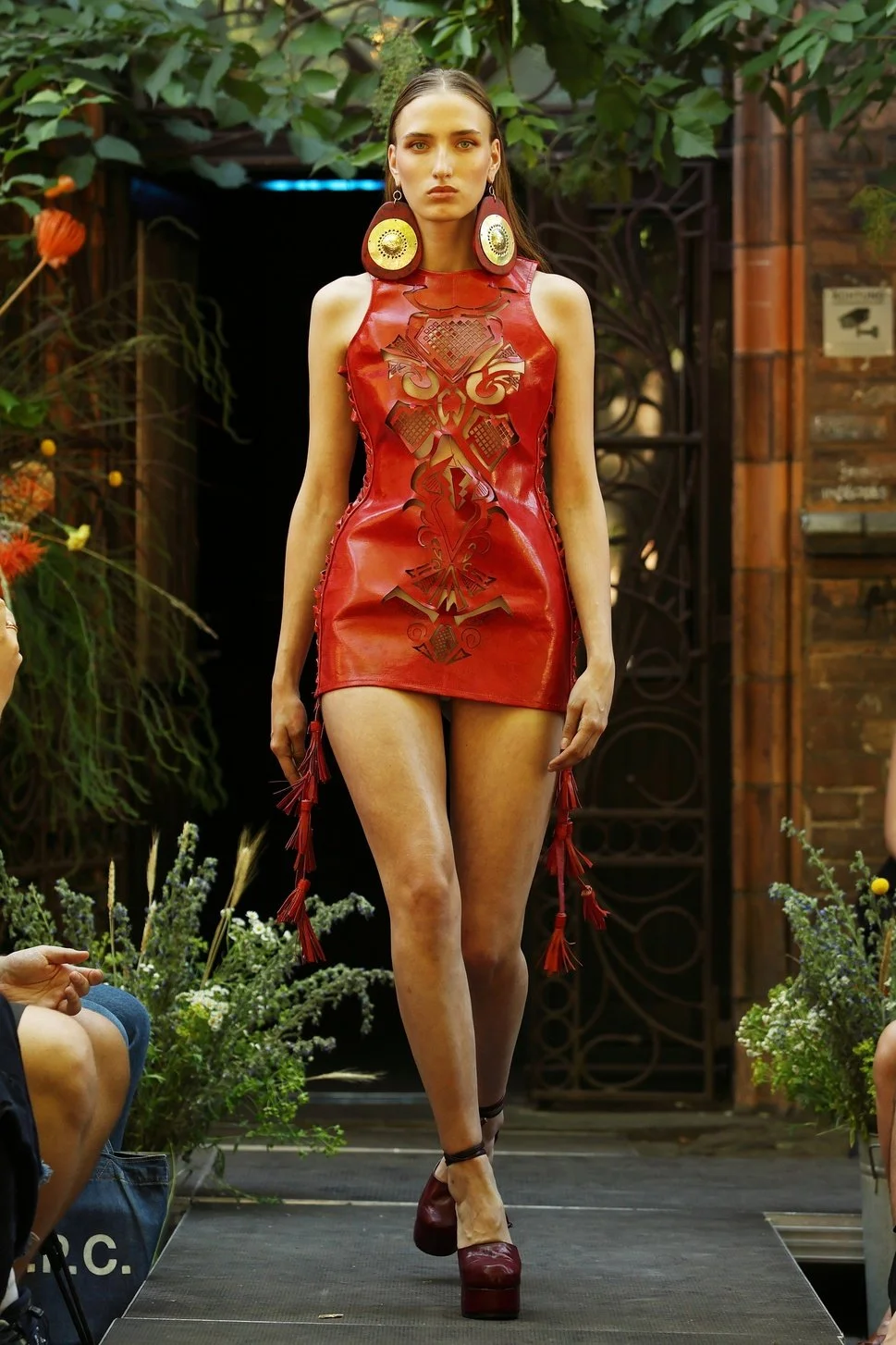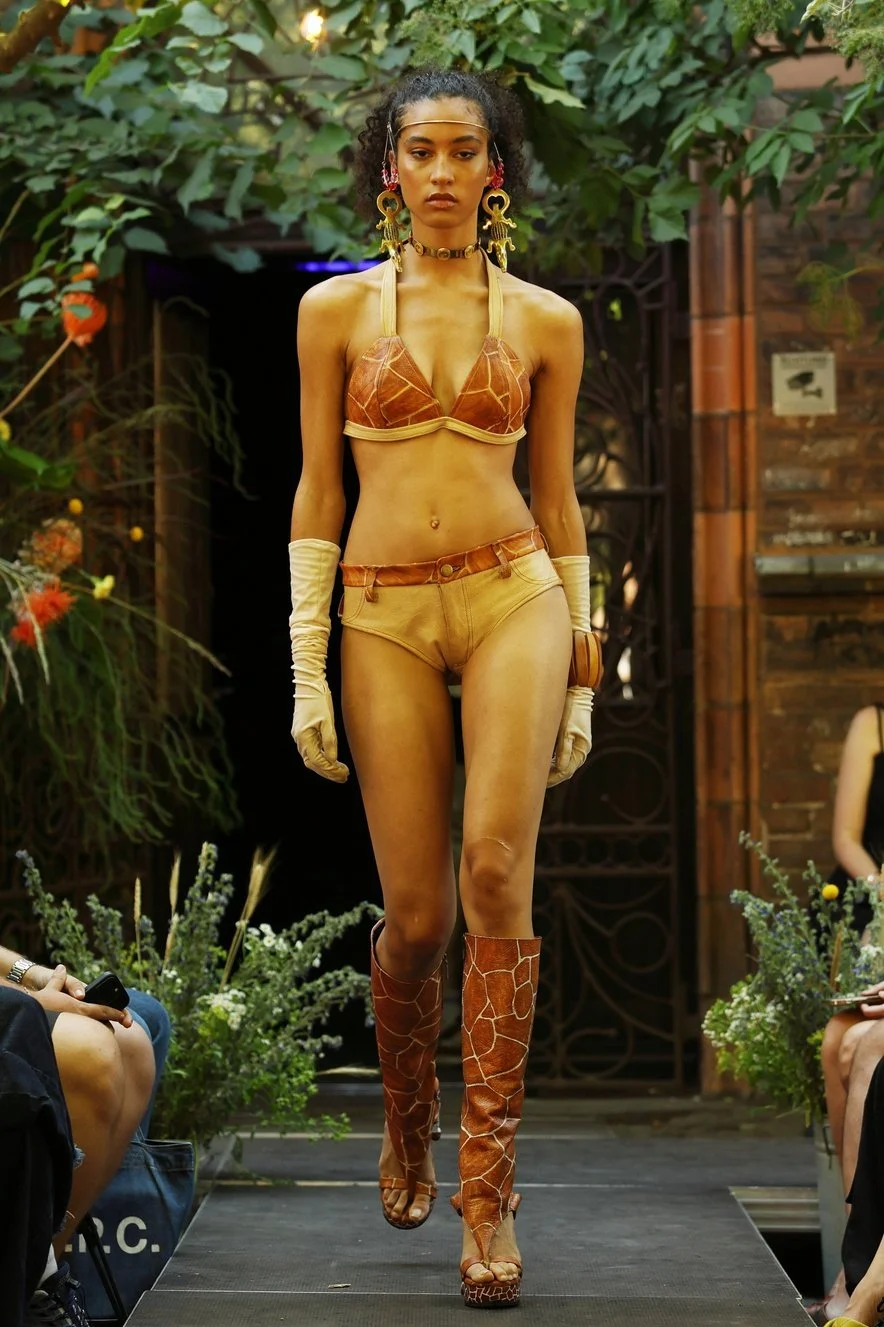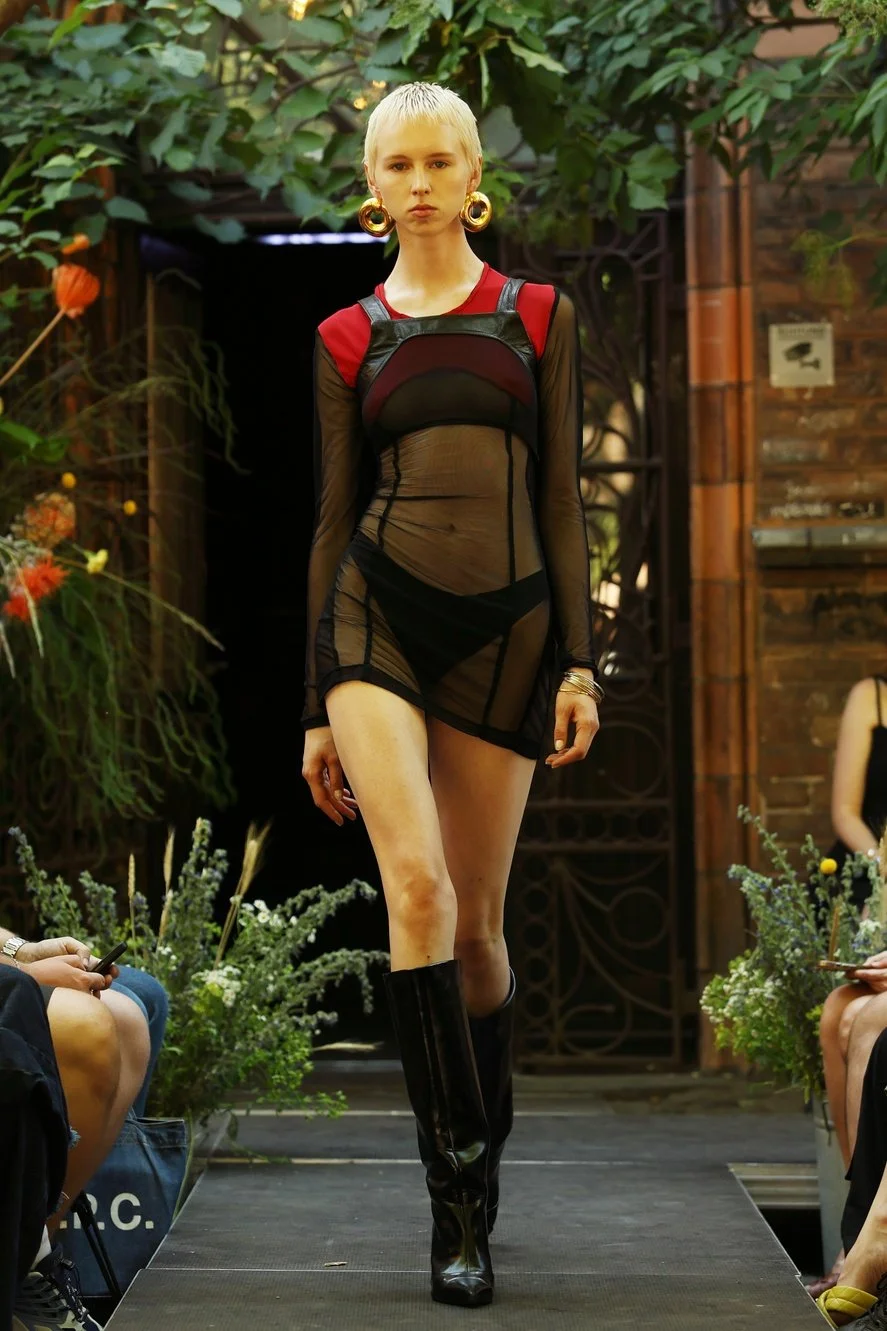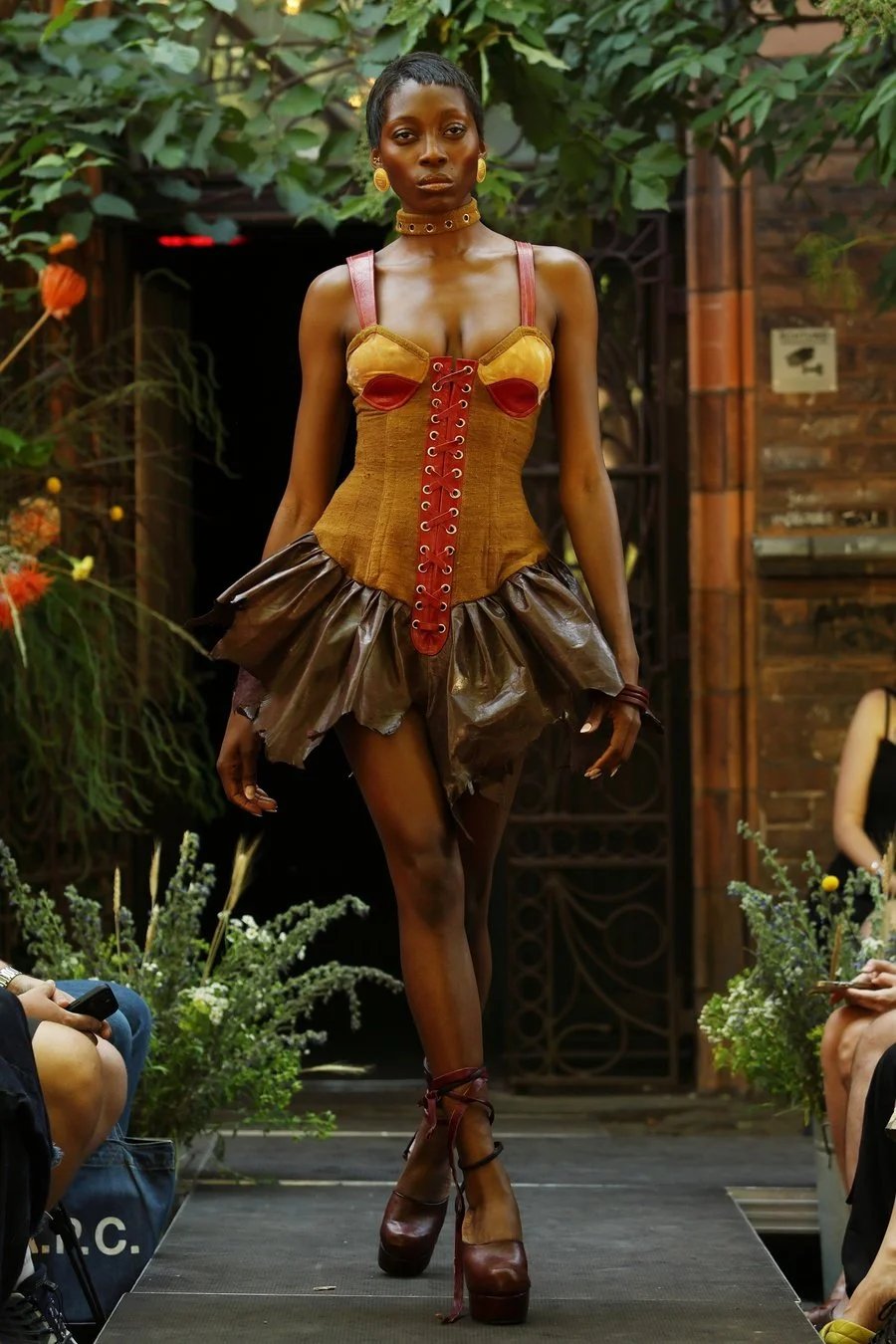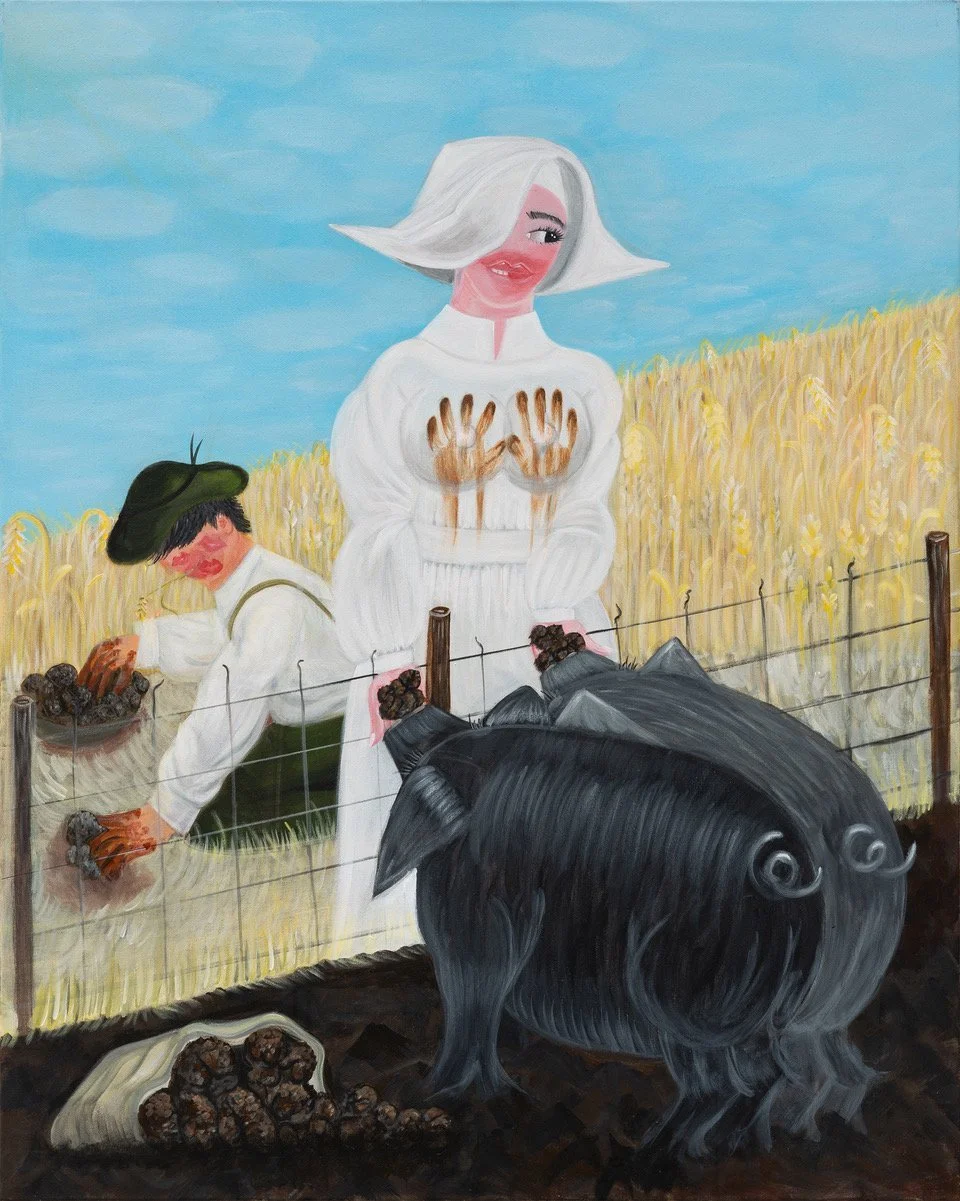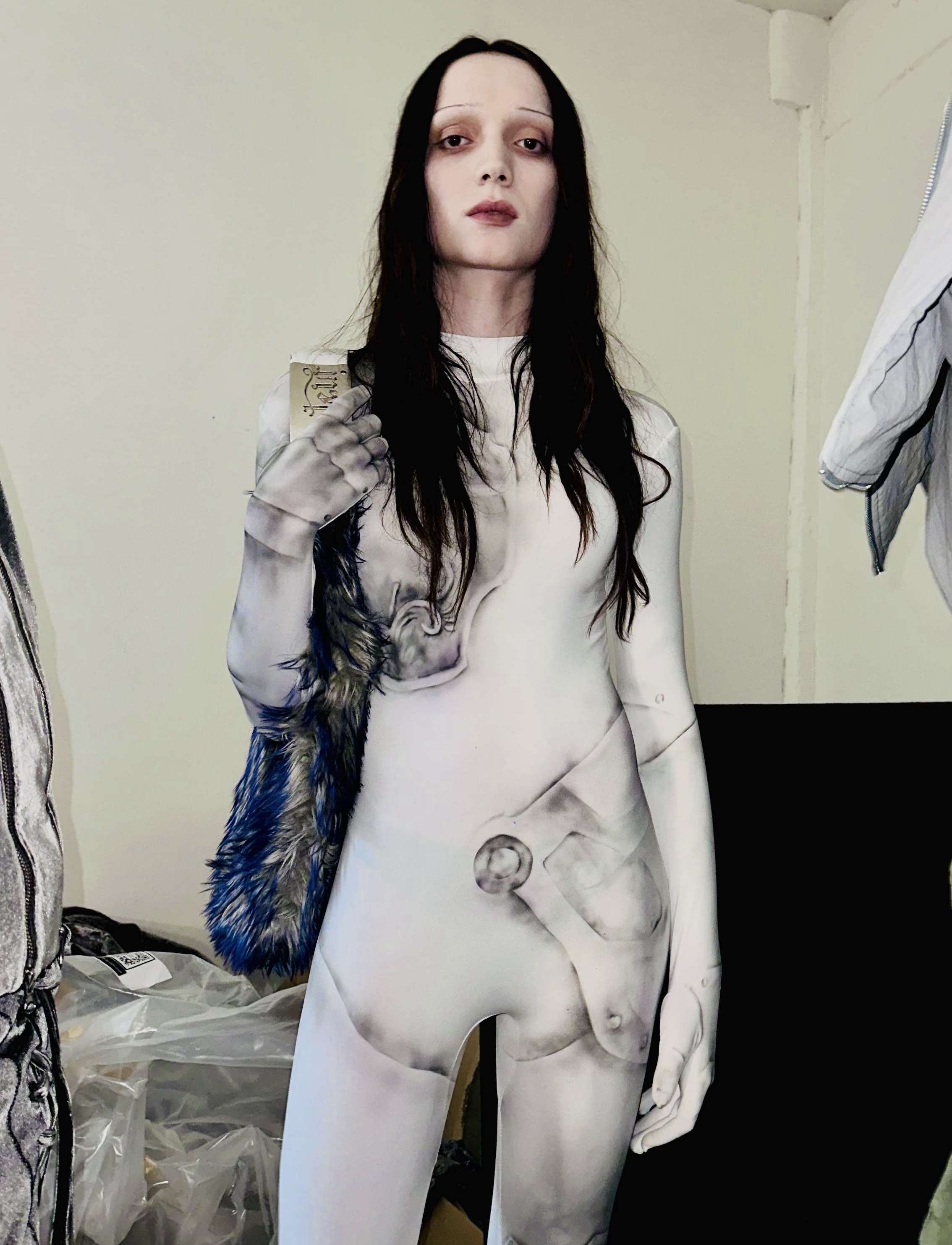Berlin Fashion Week Spring Summer 2026
SS26 at Berlin Fashion Week showcased a range of compelling narratives. Marie Lueder’s collection blurred myth and reality, using performance and community to explore vulnerability and resilience. GmbH’s designs navigated personal and political grief with a quiet power, embedding memory into every garment. David Koma’s first menswear line challenged traditional masculinity by drawing on icons from sport, art, and fashion.
PALMWINE IceCREAM offered a grounded exploration of cultural heritage, focusing on craft and everyday strength. Ottolinger reasserted its voice with a collection that mixed rebellion and elegance, highlighted by a collaboration with Nike. Each designer contributed a distinct cultural lens, reflecting a broader conversation about identity, memory, and survival in contemporary fashion.
OTTOLINGER
Ottolinger’s SS26 collection, titled Heidi, returned the brand to Berlin, marking a homecoming that resonated deeply with its roots. The show opened with pop star Kim Petras in a cropped knit tee and booty shorts, setting a tone of rebellious energy. The collection embodied the essence of the 'cool older sister', a figure who navigates the world with confidence and a touch of defiance. Designers Christa Bösch and Cosima Gadient infused the collection with elements that felt both personal and universal.
The garments showcased Ottolinger’s signature approach: deconstructed tailoring, asymmetrical cuts, and a mix of textures. Denim was reimagined with glossy finishes, while mesh and jersey pieces clung to the body, highlighting the interplay between vulnerability and strength. The collection also introduced a collaboration with Nike, featuring body-conscious silhouettes adorned with the iconic swoosh. This partnership signaled a fusion of high fashion and streetwear, aligning with Ottolinger’s ethos of blending the avant-garde with the everyday. Heidi was a narrative of empowerment, resilience, and the complexities of identity. It celebrated the multifaceted nature of femininity, offering a wardrobe that was as bold and unpredictable as the women it was designed for.
LUEDER
For SS26, Marie Lueder presented SLAY inside Berlin’s Palais am Funkturm, where the runway became a space for shared release. A giant chrome sculpture by Esben Weile Kjær loomed at the center, part trap, part relic, mirroring the themes of pressure and resilience woven through the collection. Inflatable Venus flytraps surrounded the audience, expanding the reference to Saint George and the dragon into something more personal. A woman in a knitted dress and UGG slippers collapsed into others’ arms, marking the start of a procession that felt ceremonial. Upcycled death-metal tees, heavy ribbed knits, slashed cottons and exaggerated trousers formed a language of emotional armour rooted in Berlin’s underground.
Choreography by David Varhegyi shifted the focus from fashion to gesture. The cast moved in clusters, sometimes alone, sometimes joined, revealing a collective logic. Each garment held structural weight while allowing softness to surface. Slouchy cargo pants, sculpted shoulders, twisted jersey tops and protective hoods reflected the tension between containment and vulnerability. UGG’s custom footwear stayed consistent, suggesting care and repetition rather than novelty. The sound design by Roman Ole and Oscar Khan guided the room without overtaking it. Lueder used collaboration, scale, and texture to ask what it means to confront something larger than the self. SLAY offered no answers. It proposed ritual instead of spectacle, and presence over polish.
GMBH
GmbH’s SS26 collection titled Imitation of Life confronted the weight of global trauma and personal memory. The show opened with a powerful moment of silence lasting 58 seconds, one second for every thousand Palestinians lost since October 2023. This silence set a serious tone, inviting reflection on collective grief and individual detachment. The garments moved between intimacy and statement. Flowing chiffon shirts with oversized sleeves referenced a personal ritual from designer Serhat Işik’s childhood, while tank tops decorated with faux Euros recalled a black-and-white photo of boys displaying money in playful defiance. This mix of nostalgia and political commentary echoed through the collection.
The styling played with contrasts. Polka-dot boxer shorts and mesh crop tops appeared alongside tailored suits, creating tension between formality and casualness. The final looks included satin gowns shaped like urns, symbolic vessels for mourning and memory. Through these designs, GmbH grappled with loss and survival while refusing to simplify either. The collection worked within the exclusive space of fashion to offer a nuanced resistance. It asked how beauty and brutality coexist, and how dress can serve as both armor and elegy in difficult times.
DAVID KOMA
David Koma’s SS26 menswear collection titled I Love David looked at masculinity as something shaped by image, desire, and repetition. Three figures formed the core: David Beckham, Michelangelo’s David, and Koma himself. Together they outlined a cultural script of power, beauty, and identity. Low-rise denim and washed leather nodded to early-2000s celebrity spectacle. A rhinestone jersey echoed football iconography. Lace aprons, soft draping, and polished sandals moved closer to sculpture, inviting stillness into the frame. None of it aimed for irony. Koma took these references seriously, not sentimentally.
What emerged was a portrait of masculinity that absorbs everything it sees. Surf shorts embroidered with hibiscus, tuxedos in beige instead of black, and oversized knitwear with no fixed code. It spoke through symbol, memory, and gesture. He treated style as personal history. In his world, the man looks at himself looking. And he dresses accordingly.
RICHERT BEIL
Richert Beil presented Milieuschutz inside their new Kreuzberg studio, a former pharmacy left partially intact. The space felt suspended in transition, echoing the questions raised by the collection itself. What remains when a place, or a body, adapts?
The garments carried this same sense of reorientation. Tailored jackets revealed seams and lining. Suspenders moved from hidden structure to external element. Trousers mimicked undergarments. Details usually tucked away were given prominence. Every decision signalled a kind of soft insistence.
“Milieuschutz is a commitment:
To protect craft.
To honor time.
To defend personal vision in a system demanding constant output.
To create not for content, but for continuity.”
A rose was placed on each seat. That same flower appeared later as print, faded and romantic. It acted as both symbol and trace, a reminder of transience.
The closing look, latex lederhosen, redirected attention to regional codes without irony. The silhouette remained rooted in tradition, while the material imposed friction. There was nothing nostalgic. There was only fact. The show worked through ideas of preservation, loss, and respect without relying on sentiment. The structure was clean. The message stayed close to the body.
ANDREJ GRONAU
Andrej Gronau’s Alpine Fiction SS26 moved with calm precision. Shown in a former factory in Berlin, the collection drew from Bavarian codes without leaning into pastiche. Checked shirts, cropped jackets, high-waisted trousers, and dirndl-style skirts formed the core. The work referenced tradition but stayed alert to distortion. Garments carried tension. A cardigan appeared stiff, its softness removed. A shirt clung with too much intention.
These pieces disrupted comfort through subtle pressure. Familiar forms no longer offered refuge. Instead, they asked for reconsideration. The palette stayed grounded in moss, milk, and flax. Blues broke through like static. Ornament appeared in the form of embroidery, measured, sentimental, slightly off. Nothing decorative felt relaxed. Every element sat just outside ease. This collection worked through memory without declaring it sacred. Gronau resisted the easy warmth of nostalgia. The mood remained exact, quiet, and slightly sharp.
PALMWINE IceCREAM
Kusi Kubi’s SS26 collection for PALMWINE IceCREAM worked from within culture, not from outside observation. The garments reflected daily life in Ghana, shaped by climate, resourcefulness, and beauty made through repetition. Materials came with history. Cotton was woven with time. Leather aged in sunlight, dyed with bark. Mesh, organza, and deadstock fabrics were transformed without waste. The value came not from scarcity, but from care.
Clothing followed the body. Cuts were light, shortened, direct. These were garments for women who walk, sweat, work, rest. They were not built to pose. A corset assembled across two days held labor in its form. Chainmail took its time. Painted boots spoke of local energy, not trend cycles. PALMWINE IceCREAM looked to the everyday and treated it with seriousness. It reminded the audience that real culture happens in private, through what is worn, used, and passed on.
words DONALD GJOKA
What to read next

